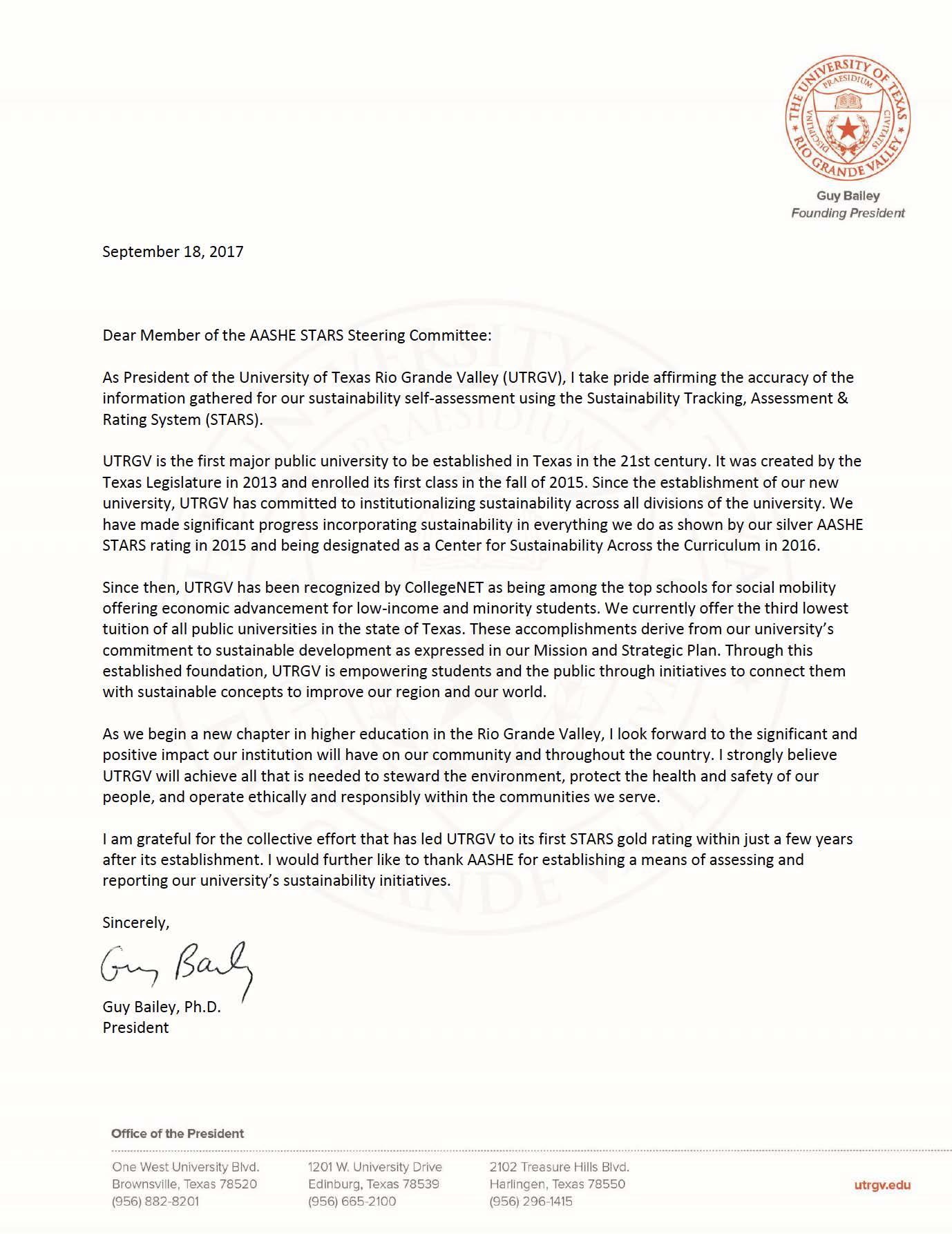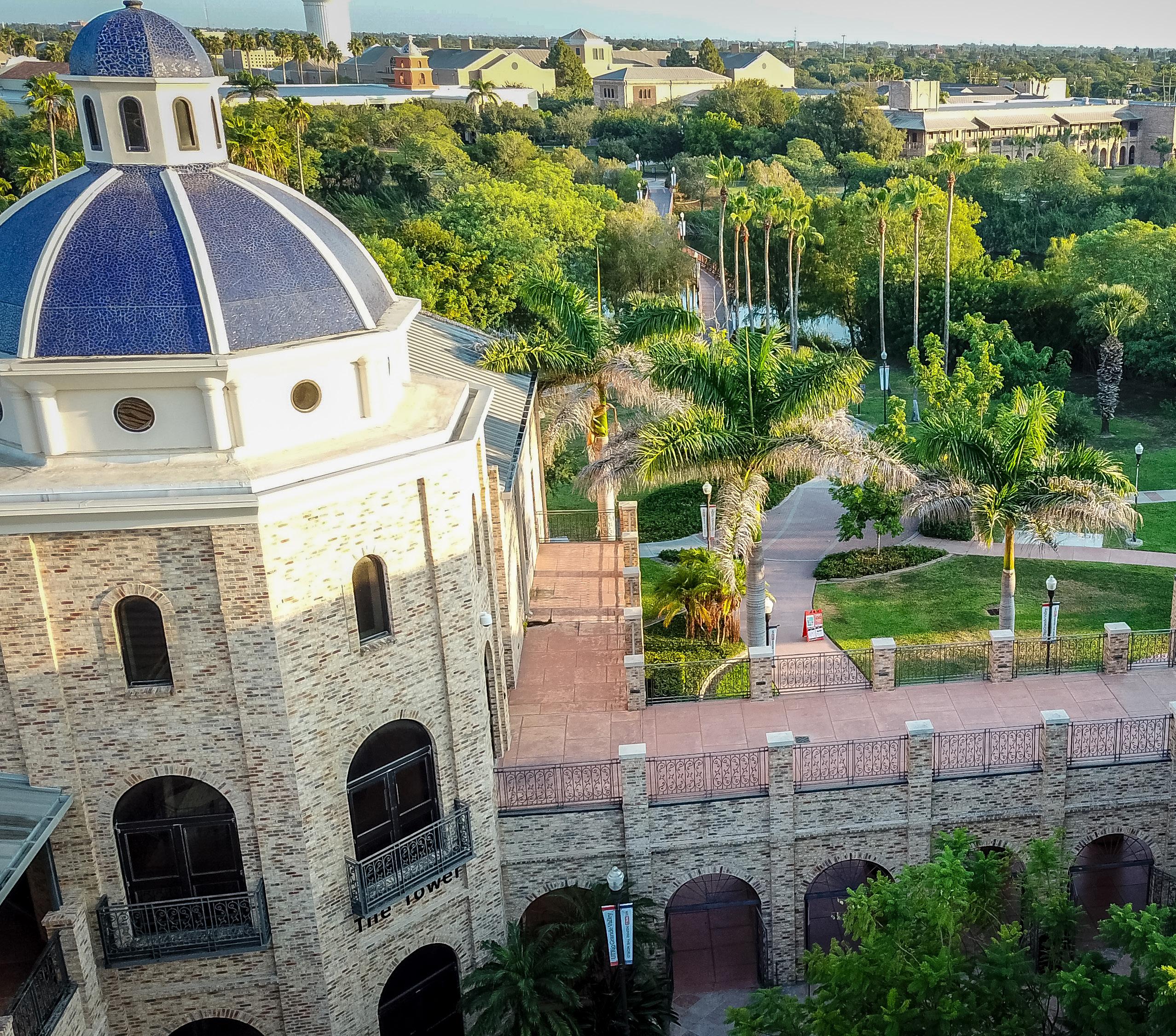

Proposed Sustainability Campus Action Plan



Presidents’ Letter from Dr. Guy Bailey
Convocation Letter from Dr. Cardenas
Letter from Interim President Dr. Sorber
Cost Avoidance Task Force
UT Systems Policy on Sustainability Practices
Letter from Chancellor of UT System

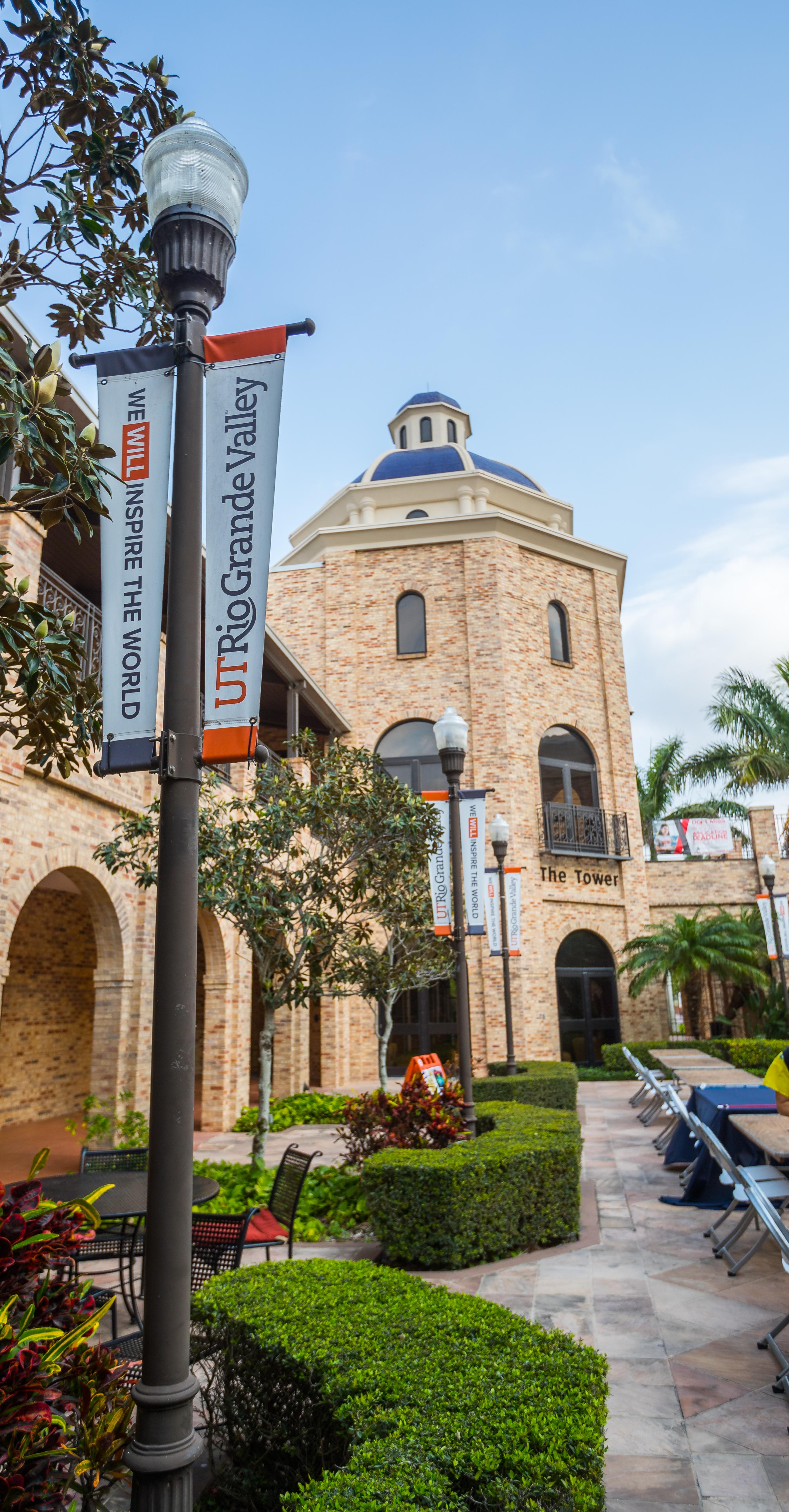


Executive Summary
“Sustainability implies that the critical activities of a higher education institution are (at a minimum) ecologically sound, socially just, and economically viable, and that they will continue to be so for future generations. A truly sustainable college or university would emphasize these concepts in its curriculum and research, preparing students to contribute as working citizens to an environmentally sound and socially just society. The institution would function as a sustainable community, embodying responsible consumption of food and energy, treating its diverse members with respect, and supporting these values in the surrounding community.”
Association of University Leaders for a Sustainable Future (www.ulsf.org)
Sustainability has become more important than ever in the 21st century as businesses, governments, schools, and private individuals begin to understand how much change they can make, and need to make, to protect the Earth. Globally, there is a movement to protect the Earth but locally, there is a strong tradition in preserving and maintaining the planet.
Traditionally, farmers have understood the relationship between humankind and the earth better than others, understanding that our actions have direct consequences on our food, water, air, and quality of life. In Rio South Texas, the region in which The University of Texas-Rio Grande Valley (UTRGV) is located, agriculture has played an important part in the economic and cultural history; citrus and other vegetables are cultivated yearround, with many family incomes depending on that success. Additionally, much of the population of the Rio South Texas region has roots in Mexico and the ranching traditions from that country. These factors combine to produce an area that is rich in its connection to the land.
In accordance with our local tradition and global movements, UTRGV strives to be a beacon of leadership to the Rio Grande Valley and Texas in sustainability. It created the University Sustainability Council (USC) to build a comprehensive program for sustainability on campus, bridging the gap between old traditions and the young generation. The movement to incorporate sustain-ability represents a broad-based effort by faculty, staff, and students, under the leadership of the 25-member Council, to examine issues across a broad array of academic, administrative, and operational programs at UTRGV.
The USC is comprised of 15 committees who, with the direction of the Office for Sustainability, examined ways in which they can contribute to sustainability at UTRGV; this collaboration produced our Sustainability Campus Action Plan. The programs detailed in this plan span across areas covering the campus community as well as the region of Rio South Texas. They are explained below and categorized broadly into Leadership, Education, and Operations. All of the goals are presented here in the Executive Summary; or the strategies, please see the respective areas in the plan.
Leadership
Under leadership there are three committees: Research, Marketing & Development, and Community Engagement.
Research
UTRGV is at the forefront for scholarship and research related to sustainability topics. The university’s six colleges all participate in sustainability-related research through formally established agencies as well as individually formed groups of students and faculty members who are dedicated to integrating their research into classroom teachings. This commitment of the UTRGV community continues to add knowledge and un-derstanding of sustainability, and incorporate that into profes-sional and personal lives. The research section of this plan is primarily a vision of future opportunities as the university is in the process of increasing its research. The areas in which sustainable research is currently taking place are primarily in the College of Science & Engineering, but also in other divisions and colleges. These ef-forts are a crucial first step in UTRGV becoming a premier entity in research in sustainable fields.
Goal:
Create a rich and engaging research environment that integrates sustainability into the research activities.
Strategies:
1. Provide seed funding as a special reserved allocation of programs, such as a “Faculty Research Support Program” or a “Multidisciplinary Ventures Fund.”
2. Foster interdisciplinary research collaborations: foster local interdisciplinary research collaborations; foster external/international interdisciplinary research collaborations.
3. Provide administrative support to obtain and manage grants that relate to sustainability.

1. Encourage participation in multidisciplinary grant proposals, especially those that would not necessarily other-wise be available to individual single-disciplinary researchers.
2. Mentor junior faculty: create mentoring programs for junior faculty that support interdisciplinary and transformational research.
3. Establish metrics of success and evaluation: establish metrics of success; evaluate and report on performance in terms of these metrics.
Marketing & Development
An effective communication strategy is essential to achieving the core objectives of UTRGV’s sustainability initiatives. Our communication strategy—ranging from printed reports to online communications and social media —provides a mechanism to engage a broad range of university stakeholders with the goals of our sustainability efforts. The objective is to provide clear and consistent messages to internal and external stakeholders about sustainability as it relates to research, teaching, and operational initiatives at UTRGV. The following measures can be taken to promote and spread the message of sustainability to campus and the community.
Goal: Increase awareness of sustainability at UTRGV
Strategies:
1. Promote and market UTRGV Office for Sustainability and its mission.
2. Promote campus sustainability initiatives through all media outlets.
3. Monitor university communications to ensure cohesive sustainability messages.
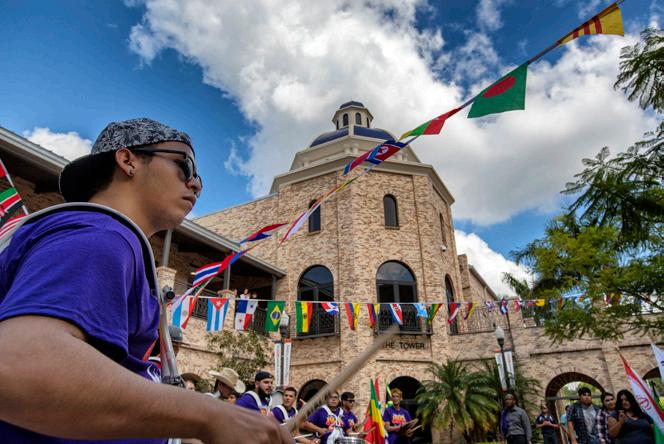
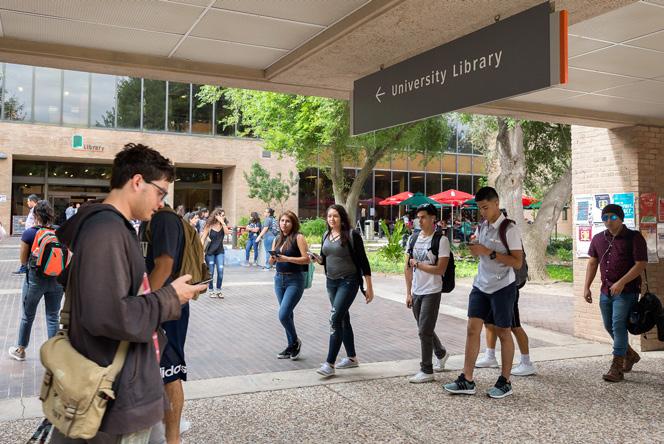


4. Support creation of UTRGV Office for Sustainability website.
5. Support fundraising efforts of sustainability on campus.
6. Make recommendations to university community on how to communicate in sustainable ways.
7. Encourage volunteerism among Division of University Advancement staff to become role models in sustainability efforts.
8. Implement best practices in sustainability within division.
9. Develop measures to monitor progress.
Community Engagement
Community outreach is the vehicle by which a university connects and collaborates with the surrounding areas, identifies community needs, and works to meet and resolve those needs. The University facilitates resources and services to our community via the Department of Community Engagement (CE), which operates in four areas: Community, Economic, Rural and Business Development. Community outreach is an integral part of any sustainability educational program, and enhances the relationship between UTRGV and the Rio South Texas region. Outreach is one of the key mechanisms for staying attuned to community needs. Thus, community outreach is an integral part of any sustainability educational program and enhances the relationship between UTRGV and South Texas.
Goal I:
Strengthen integration of sustainability message into established UTRGV communitybased outreach events
Strategies:
1. Implement sustainability outreach educational programs, starting with 10%and leading up to 90%.
2. Track and record data on sustainability efforts of students targeted in outreach programs.
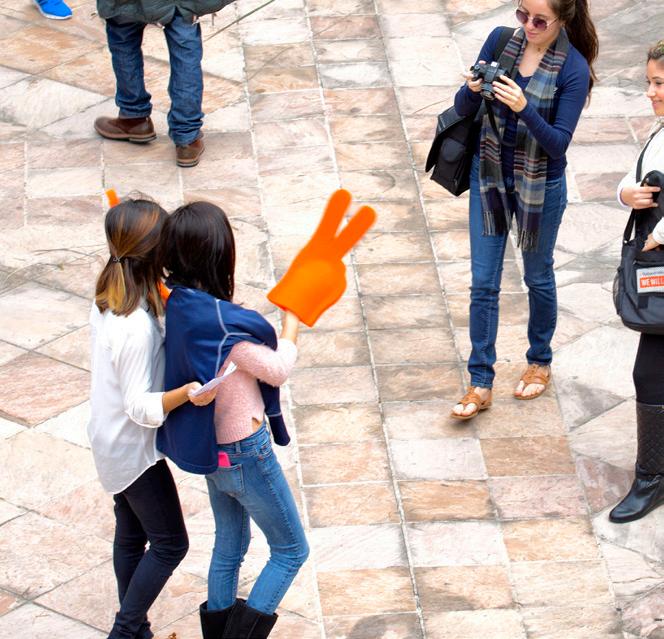
Goal II:
Increase UTRGV’s profile as a community leader in sustainability through establishment of outreach event on campus promoting sustainability.
Strategies:
1. Establish agenda and execute UTRGV’s Earth Fest celebration, Viva el Mundo,(Environmental Day) annually
Education
Under education, the four committees of Curriculum, Co-Curricular Education, Health & Wellness, and Athletics are found.
Curriculum
Building on the university’s impressive expanse of academic expertise, infrastructure, and archival resources, UTRGVs present efforts in curriculum in sustainability extend across all of its six colleges. With a modest investment of academic resources, the university will be in a strategic position to take a leadership role in this emerging field of study. Currently, a review of UTRGV’s courses indicates that sustainability course content is either focused or integrated in each of our academic colleges . These can build the foundation on which coordinated and integrated sustainability programs can grow.
To move The University of Texas System toward its goal of leadership in the academic world of sustainability, UTRGV must develop an integrated program of exceptional undergraduate and graduate education, research and creative activity, and community outreach that builds on the academic strengths of UTRGV while addressing opportunities for growth. The goals and strategies describe realistic initiatives that could help make this vision a reality. The following three goals can be accomplished with a modest increase in resources and academic focus, and will help provide critical guidance on sustain-ability-related education at UTRGV. This set of approaches can situate the university into the ranks of universities leading in this new academic arena.

Goal I:
Increase number of UTRGV graduates who have developed a basic understanding of sustainability and are environmentally literate, and have a commitment to promoting an enhanced quality of life for all.
Strategies:
1. Analyze existing courses and curriculum in all disciplines to ascertain existing knowledge and content for sustainability.
2. Revise/refine existing course content to ensure integration of sustainability knowledge and content.
3. Incorporate literacy on environmental and sustainability issues into the educational program of all undergraduate students.
4. Create a web page that has information about how other campuses have integrated sustainability into their courses, departmental curriculum, and liberal arts requirements.
5. Offer ongoing faculty development opportunities that assist faculty from a wide range of disciplines in integrating sustainability into courses.
6. Encourage departments to add a sustainability component in the respective departmental curriculum.
7. Develop a faculty development program that encourages faculty to infuse sustainability into their teaching.
Goal II:
Increase number of academic programs related to sustainability annually.
Strategies:
1. Develop a plan to hire new faculty in a broad range of disciplines with interest and expertise in sustainability.
2. Support academic program development of student learning opportunities in areas related to sustainability.
3. Develop an undergraduate degree, or minor, or area of concentration in sustainability.
4. Develop an interdisciplinary Ph.D. minor or concentration in sustainability.
5. Develop a fellowship program to fund graduate and post-doctoral students in areas related to sustainability.
6. Develop a student sustainability scholarship award for exemplary undergraduate and graduate research that focuses on sustainability.
Goal III:
Develop and support programs that focus on research related to sustainability.
Strategies:
1. Develop interdepartmental and cross-school affiliations among faculty who conduct research related to sustainability.
2. Develop mechanisms to assist faculty in obtaining external funding.
3. Develop incentives to foster interdisciplinary research collaborations.
4. Develop a mentoring program for junior faulty to support interdisciplinary and transformational sustainability related research.
5. Consider an interdisciplinary center that could support formal graduate programs and Ph.D. minors in sustainability.
Co-Curricular Education
One of the best ways that UTRGV can ensure that students are aware of sustainability issues and able to tackle these complex problems when they enter the work force is to provide them with hands-on experience in sustainability. Co-curricular programs provide opportunities for students to engage directly with the community through organized volunteer activity and student organizations. These programs facilitate direct application of classroom knowledge into practical settings, and increase a sense of citizenry. In this way co-curricular activities enhance critical thinking skills and cognitive complexity, and encourage student retention by providing a sense of community for the students. The objective for this committee is to raise awareness of students and staff through participation in campus sustainability activities that take place outside of the formal classroom. Doing so will increase our chances of generating a campus-wide commitment to sustainability.
Goal I:
Increase student awareness of sustainability and sustainable lifestyles through development of programs for students living in resident halls.
Strategies:
1. Develop sustainability programs for residence hall community advisors to coordinate, such as reducing solid waste generated during move-in and move-out days.
2. Cultivate close relationship with Academics and New Student Services to suggest including sustainability in first-year experience and orientation.
3. Integrate competitions focused on sustainability among campus groups and with other institutions, such as the EPA’s RecycleMania program.
4. Develop internship program specifically related to sustainability, including both on and off campus, to be coordinated with Career Services.
5. Develop campuswide projects focused on sustainability and coordinated through


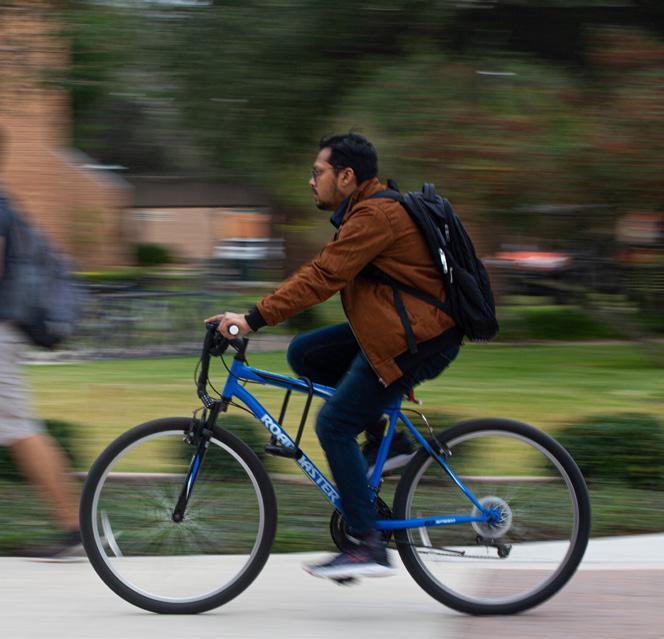
the community service coordinator. These projects can include established community service programs such as “Make a Difference Day” and “United to Serve.”
6. Develop dynamic sustainability website through the Office for Sustainabil-ity to instill awareness of responsibility as global citizens.
Goal II:
Increase collaboration and support of co-curricular educational activities that integrate sustainability among students, staff, and faculty members through promotional efforts.
Strategies:
1. Create a message of sustainability to be integrated into all university conference programs.
2. Promote plans for “greening the event” in all matters; i.e., recycling, dining/catering, communication, transporta-tion, energy conservation, water con-servation, etc.
3. Integrate sustainability as a part of planning conferences.
4. Increase visibility of sustainability by promoting Eco-speakers, Eco-films, and Earth Day activities.
5. Support interdisciplinary participation among faculty, staff, and students in environmental, social, and economic research related to sustainability.
6. Support problem solving, artistic expression, and communication related to sustainability among faculty, staff, and students.
Goal III:
Develop student leadership in sustainability with support of staff, faculty, and community members through training and activities.
Strategies:
1. Train residential staff to develop residence hall sustainability programs such as recycling and Eco-Reps Leader Program.
2. Assist Office for Sustainability with nominations of Student Green Heroes of the Month.
3. Promote sustainability practices among the university community through activities such as the
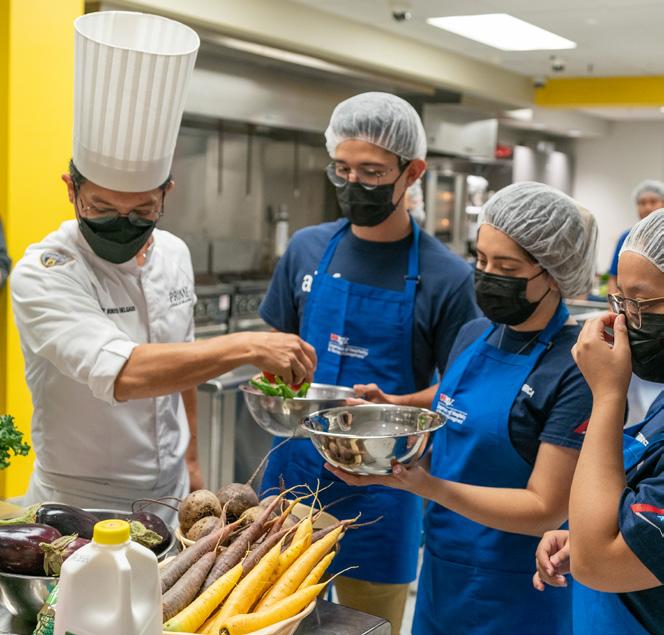
recycling programs, and other projects.
Health & Wellness
Health and wellness is an integral part of sustainability; as many of the local residents do not see how they relate, the goals in this area revolve around education and promotion of healthy lifestyles. The rates of obesity and diabetes in the Rio South Texas region are some of the highest in the nation, and are currently at unsustainable levels. This health crisis is a result of many factors, including poverty, but can be reversed with the incorporation of the sustainability values. Public parks and community recreation centers not only promote physical activity, but also provide a social outlet for members of a community. If these centers are widely available to many members within a diverse demographic scale, then they can also promote social justice. UTRGV and the Office for Sustainability have the chal-lenging task of altering the mind-set of residents of Rio South Texas. The old wisdom that “a fat baby is a healthy baby” no longer applies to today’s society; indeed, even an overweight child increases the chance that he or she will develop Type II Diabetes. Instead, physical activity should be encouraged as early as possible, and UTRGV can promote this healthy mind-set with walking paths, bike lanes and racks, and easy access to sports facilities such as the Wellness & Recreational Sports Complex.
Goal I:
Promote healthy and sustainable lifestyles for students, faculty, and staff by implementing programs that teach this lifestyle.
Strategies:
1. Create and implement programs that promote safe, fun exercise.
2. Create and implement summer camp programs for youth that promote sustainability in the program as well as encourage youth to exercise.
3. Participate in Edinburg’s annual Healthy Living Festival.
Green Pledge, a Living Green Guide,
4. Market the “walkability/cyclability” of the UTRGV campus to prospective students, faculty and staff as a healthy alternative means of transportation and a way to maintain a healthy, active lifestyle.
5. Implement an educational program that emphasizes the physical, financial, social and educational benefits of walking/cycling, whether on campus or commuting to campus.
6. Collaborate with surrounding communities to publish a map of walking/cycling routes with distances to popular destinations, etc.
7. Develop an outdoor activity program that promotes healthy/exercise based activities utilizing a variety of recreational opportunities in the greater Rio Grande Valley area.
Goal II & III:
Promote healthy and sustainable eating habits for students, faculty, and staff through incorporation of these topics into existing programs.
Promote healthy and sustainable eating habits for students, faculty, and staff by collaborating with other departments.
Strategies:
1. Promote the use of organic, locally grown, humanely grown, fair trade sustainable food.
2. Develop programs that educate students, faculty, staff and communities about sustainable food literacy.
3. Collaborate with Dining Services to promote

organic, locally grown, humanely grown, and fair trade sustainable food.
4. Collaborate with various other departments to develop community gardening classes to include a demonstration garden for students, faculty, staff and communities to learn how to grow organic fruits and vegetables.
5. Incorporate the topic of healthy eating habits into our existing educational programs/ seminars.
6. Incorporate the topic of healthy eating habits into our summer camp curriculum.
Goal IV:
Promote health and wellness in the community through partnerships with off-campus entities.
Strategies:
1. Partner with community Parks & Recreation Departments, World Birding Centers, Texas Parks & Wildlife and others to create nature summer camps and/or events.
2. Incorporate programs into summer camps for children that promote healthy lifestyles to include eating and exercising.
3. Continue to collaborate with surrounding communities to develop/encourage alternative modes of transportation to and from campus.
4. Cooperate with surrounding communities and organizations in efforts to promote health and wellness (health fairs, special events, etc.).



Athletics
Athletic departments have unique sustainability opportunities. Universities across the country are recognizing that by developing a comprehensive sustainability program in the athletic department, they can leverage the strong brand power, visibility, and influence of their intercollegiate sports programs and make meaningful environmental improvements. Athletic departments can greatly benefit from collaborative sustainability initiatives with student-athletes, teams, and the increasingly environmentally-aware student body. The athletic department is striving to make their operations as sustainable as possible, as well as spreading that message to the community. Athletic teams and programs are an integral part of the UTRGV community. As visibility of their events grows, opportunities for promotion of sustainability also increase. The competition, travel, and purchase of team products all offer chances for UTRGV athletic teams to support sustainability to sport fans across the region, state, and county.
Goal I:
Develop a sustainability program for Athletics that will offer short- and long-term suggestions for improvements in operations and practices throughout the program.
Strategies:
1. Establish a sustainability slogan for promotional purposes. For example, “Bleed Orange, Go Green.”
2. Establish a set of green standards for UTRGV athletic events that reflect best practices researched at other institutions.
3. Cultivate revenue opportunities for athletic department sustainability initiatives such as green programs and green advertising. This can happen through specific fundraising, development, and corporate sponsorship.
Goal II:
4. Establish a sustainability link on athletics website.
5. Access ways to improve the environmental performance of existing buildings by conducting facilities audits by the department of environmental health and safety (DEHS).
Increase UTRGV community knowledge about sustainability through athletic events. This goal can be measured through execution of specific marketing efforts and educational programs.
Strategies:
1. Promote and market “greening” of athletic events.
2. Use athletic events to help educate and promote sustainability to students, faculty, staff and the general community.
3. Create and foster a “team spirit” to sustainability practices to get students, faculty, staff and alumni excited about being green.
4. Implement collaborative efforts with Student Athlete Advisory Committee and Student Sports Marketing Academy, including creating sustainability programs with each varsity team.
5. Encourage and invite campus environmental groups to set up educational booths during games to highlight other on-campus sustainability efforts.
6. Integrate and cooperate with various UTRGV departments that affect various programs such as recycling, vendor waste reduction, etc.
OPERATIONS
The category of operations includes eight different committees: Energy Conservation; Facilities; Transportation; Dining Services; Purchasing; Materials, Recycling & Waste; Landscape & Grounds; and Information Technology. Each of these plays a vital role in helping make UTRGV a sustainable campus.
Energy Conservation
University buildings account for almost 60% of all energy consumption through heating, cooling, and lighting systems. Buildings can become more efficient by improving the building envelope, adding insulation to walls and roofs, changing lighting, upgrading HVAC systems, and retrocommissioning existing heating and cooling systems.2 Sustainable energy sources are those whose stock is rapidly replenished by natural processes and not expected to be depleted within the lifetime of the human species. They do not involve combustion of fossil fuel and therefore do not contribute directly to global warm-ing or other degradation of the environment. They also avoid the use of nuclear fuels, and usually avoid direct production of toxic wastes. Sustainable energy technologies vary greatly in terms of embodied energy used and pollution emitted in building and maintaining equipment, thus institutions need to proceed with caution and thorough studies before adopting and choosing amongst these new technologies.
Promoting energy awareness on campus can take the form of completing an energy audit, creating an inventory of campus greenhouse gas (GHG) emissions, developing targets to reduce those emissions, and proposing a timeline to achieve carbon-neutrality. To plan for future development of the cam-pus and support the proposed facilities master plan, we recom-mend the development and implementation of an integrated energy master plan that focuses on reducing energy waste, maxi-mizing the practical use of renewable energy, exploring the use of biofuels, and optimizing the efficiency of UTRGVs energy production and distribution facilities. Upon completion of the energy audit (GHG invento-
ry), UTRGV can implement project identified in the energy master plan to strategically reduce GHG emission.
Goal I:
Reduce energy use from current 2010 levels by 20% with the following strategies.
Strategies:
1. Install submeters in order to analyze and identify campus facilities with the highest electrical energy consumption per square foot, and make recommendations to reduce the energy consumption.
2. Identify and promote programs on ways to reduce energy in the work place; i.e., power down computer and monitor when not in use, print on both sides of paper, use power strips to operate appliances and turn off when not in use (phantom power), use alternative transportation when traveling on campus, turn off lights when not using a room.
3. Reduce demand for heating and cooling by improving building envelopes.
4. Reduce losses in heating and cooling distribution system piping via leak detection and investment in regular inspection, maintenance and insulation.
5. Maximize efficiency of UTRGV’s thermal energy plant.
6. Develop renewable energy sources for select locations based on prudent and cost-effective application of technology such as solar water heating for new and renovated residential facilities, as well as photovoltaic and wind-generated power technologies.
Strategies:
7. Support designs that are durable, long lasting, and easy to disassemble for material reuse.
Strategies:
8. Provide facility electrical usage feedback and education to all campus users.
9. Consolidate classroom usage to the most energy-efficient buildings that meet course requirements during low usage periods.
10. Permanently reduce light levels in hallways/

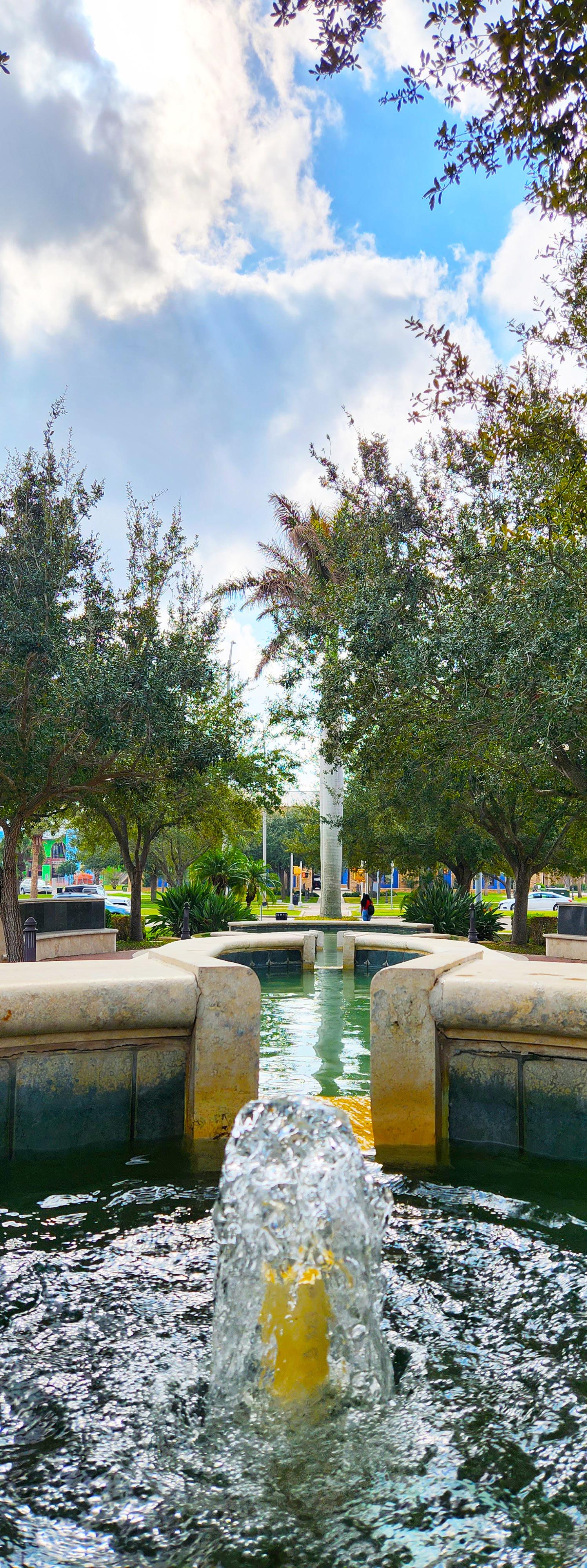
corridors of all building by as much as 20%.
11. Collaborate with scheduling and other divisions for more effective utilization of facilities.
Strategies
12. Review, verify, and update campus audit data (electrical and natural gas consumption).
13. Collaborate with Purchasing to specify LED/CFLs for lighting use.
14. Collaborate with Purchasing to specify energy efficient appliances and items such as Energy Star rated appliances.
15. Incorporate strategies for maximizing the efficiency of UTRGV’s thermal energy plant to accommodate new campus development.
Goal II:
Minimize the growth of future energy needs by utilizing sustainable buildings in new construction, renovation, and maintenance.
Strategies:
1. Specify all new buildings to follow Leadership in Energy and Environmental Design (LEED) guidelines.
2. Specify all new buildings to be built to meet or exceed energy code standards.
3. Incorporate all new UTRGV buildings into the Thermal Energy Plant’s energy management system.
4. Evaluate project renovations and new building constructions items such as energy- efficient lighting systems, and energy-efficient cooling and heating systems.
5. Include energy efficient methods in replacement/ maintenance policies and procedures (i.e., energy efficient windows, green roofs, convert/replace energy inefficient facility HVAC systems, insulation).
6. Develop and use renewable energy sources, such as solar and wind, for alternative energy needs to power buildings, machinery, vehicles. (Could be as simple as an on-demand water heater to solar powered water heater.)
Goal III:
Create a 50% carbon neutral campus by 2030 with the following strategies and timeline.
Strategies:
1. Identify, assess, and incorporate biomass, biofuels, solar power and carbon capture/sequestration on campus while purchasing wind power or other renewable energy credits (REC’s) from distant locations.
2. Move toward carbon neutrality by reducing the GHG emission rate at the following schedule:
a. 10% in five years, with major conservation, supplemented by REC’s.
b. 20% in 10 years, using all technologies, but only
moderate use of REC’s. 50% in 20 years, using all technologies, but only moderate use of REC’s.
Facilities
Activity in buildings consumes 71% of energy generated in the United States and 79% of all electric expenditures, according to the DOE Buildings Energy Databook 2006. This suggests that a serious attempt to reduce CO² produced by a campus must focus on the reduction of electricity use in buildings. By building upon the current design guidelines and providing standards for more sustainable features in new and renovation projects, all new construction and renovation of existing buildings will become high-pe formance facilities that reduce energy consumption, enhance occupant comfort, and preserve the rich heritage of UTRGV.
The United States Green Building Council developed the Leadership in Energy and Environmental Design (LEED) Green Building Rating System to provide a reliable building design and performance measurement tool for building owners and operators. LEED provides a complete framework for meeting sustainability goals and assessing building performance in six categories: Sustainable Sites; Water Efficiency; Energy and Atmosphere; Materials and Resources; Indoor Environmental Quality; Innovation and Design Process. Currently, there are over 1,000 certified buildings and 7,300 registered buildings in the United States. Over 280 of these projects are in the Higher Education category.4 Incorporating LEED guidelines shows an institutional commitment to environmental stewardship. At this time UTRGV has two LEED accredited professionals (AP) on staff and is providing training and development to facilities projects managers to achieve accreditation in the near future.
Issues of sustainability in the built environment are intertwined with architectural integrity and preservation. The impression UTRGV makes on the community is connected to constructed and natural factors. Through the establishment of guidelines for maintaining the character of campus buildings, in tandem with ensuring that historic buildings are safe, functional, and energy efficient, UTRGV can promote sustainability awareness. Our objective at UTRGV is to utilize energy-efficient and sustainable design standards on all new construction and applicable renovation projects and strive to meet or exceed a LEED silver level of sustainability.
Goals I & II:
Integrate the Facilities section of the Sustainability Campus Action Plan with the Campus
Master Plan. This goal will be measured by the Master Plan Update (CMP).
Apply sustainable measures by following
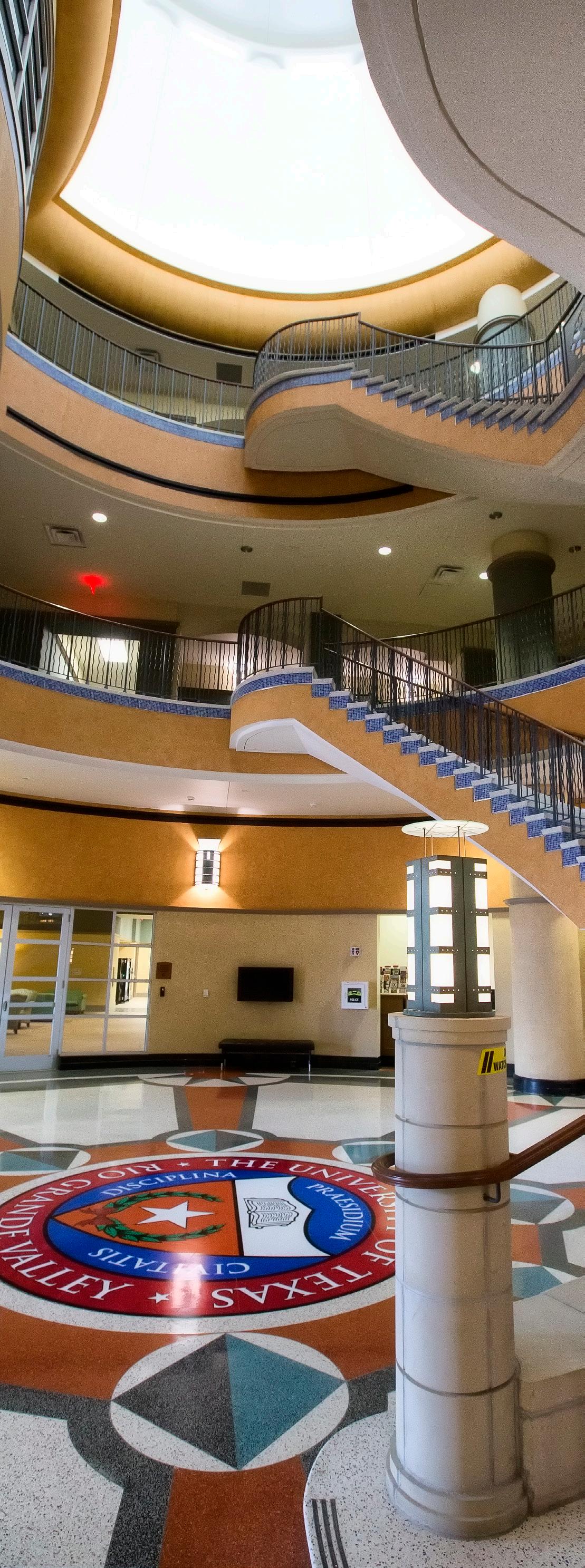
guidelines to all new construction as well as renovation, remodeling, and infrastructure improvement projects.
Strategies:
1. Install utility metering for electricity, water, and chill water on each project, adhering to the maxim: “You cannot manage what you do not measure.”
2. Ensure project budgets include necessary resources and budget needed to integrate sustainability requirements as established by the State Energy Conservation Office (SECO).
3. Make life cycle cost analysis standard practice, recognizing the importance of long-term operations, maintenance, and total cost of ownership of facilities.
4. Utilize life cycle analysis in materials and equipment selection for all projects.
5. Utilize energy efficient and sustainable design standards on all new construction projects, meeting or exceeding LEED Silver (or similar) guidelines. The energy-efficient design and construction principles of ASHRAE 90.1 as established by the SECO will apply, as a minimum.
6. Implement sustainable measures and equipment as appropriate.
Goal III:
Reduce construction waste via collaboration and open communication with entities involved in project.
Strategies:
1. Request data on construction waste from individual or entity responsible.
2. Salvage, recycle, and reuse materials and equipment as appropriate to support goal.
Goal IV:
Coordinate Facilities, Planning & Construction sustainable practices with other related local and regional entities and departments. This goal will be measured annually or biannually, through documentation of procedures.
Strategies:
1. Conduct coordination meetings with Maintenance & Operations, Environmental Health & Safety, and UTPA Police Department.
2. Prepare “Lesson Learned” document, which will discuss successes and failures in our sustainability efforts.
3. Develop and maintain sufficient outreach efforts to educate community on sustainability Lessons Learned.
4. Participate in the performance contract audit to acquire and use sufficient energy data to make Facilities sustainable efforts, planning, and decision making understandable to community. Use Energy Utilization Index (EUI) as metric to gauge reductions in GHG and gains in energy efficiency. The EUI is the amount of energy consumed per square foot per year in a building measured in British Thermal Units (BTUs). An EUI baseline will be established for each building and building type at UTRGV.
Transportation
Given that automobile transportation is the leading means by which Americans burn fossil fuels and emit toxic air pollutants, university efforts that can help staff, faculty, and students adopt less harmful transportation options will reduce the amount of pollution indirectly caused by a campus. For many commuting students, the cost of maintaining and using an automobile for transportation may be the second highest cost of college attendance after tuition; thus, transportation options may impact classroom success, reten-


tion, and graduation rates for students with financial difficulties. Vehicles also create serious environmental health hazards by emitting other pollutants such as particulate matter and nitrogen and sulfur oxides. In addition, vehicular use contributes to polluted run off from streets and parking lots, which contaminates our water system.5
The UTRGV campus, while beautiful and pedestrianfriendly, will fail as a model of sustainability if students and employees continue to reach it by vehicle every day. A sustainable transportation policy should support compact growth and multiuse development, where walking, cycling, and bussing are more convenient and practical. Transportation also provides a significant opportunity to build stronger links with our neighboring cities, which can play a major role by providing public transportation and improving the infrastructure and traffic enforcement that enable and encourage pedestrian and bicycling options. The objective is to create a comprehensive Campus Transportation Plan to balance the needs of all commuters to campus reducing trips to and from campus through incentives and improvements in sustainable alternatives.
Goal I:
Create pedestrian friendly campuses, measurable by completion of the strategies listed below.
Strategies:
8. Explore options for safe and attractive hike and bike trails.
9. Plant trees or install shaded paths.
10. Attractive, integrated bike racks.
11. Coordinate with Facilities Planning for Campus Wide Master Plan updates to include new pedestrian walkways, shaded pocket parks, shuttle routes, shuttle drop-off and pick-up sites, hike and bike trails, bicycle stations, fuel efficient/ compact vehicle spaces, car pooling spaces, M&O / UTPD / FP&C / DEHS / Fire Department spaces and restricted inner campus pathways.
Goal II:
Increase transportation options to and from campuses by promoting educational programs through partnerships with cities.
Strategies:
1. Collaborate with the City of Edinburg on a traffic assessment to review traffic conditions while strategically planning alternative transportation routes; i.e., Rio Metro, UTRGV Shuttle future light rail transit.
2. Limiting traffic on campus streets to buses and other specialty authorized vehicles.
3. Explore a partnership with Rio Metro to reduce number of students driving a private vehicle (POV) to a campus. Subsidized or free to students.
4. Explore partnerships with the surrounding cities to link hike & bike trails to encourage more individuals to walk or bike to campus.
5.Explore a “Borrow a Bike” or “Green Bike” type of program thus encouraging all to use bikes as an alternative to POV.
6. Education program for students, faculty and staff emphasizing the health benefits of walking/ bicycling.
7. Launch an educational campaign to promote the use of alternative transportation.
Goal III:
Reduce number of cars parking on campus through incentives to students, staff, and faculty members.
Strategies:
1. Explore options to parking fee price structure such as a substantial financial savings for commuters who carpool. Fees should reflect the true costs of parking and/or market rates (e.g. response to supply and demand).
2. Propose 25% or more parking spaces in each parking lot for energy-efficient/compact POV.

Spaces should be located at the preferred spots near building entrances.
3. Explore incentives or policies to encourage students to not bring a POV to campus, i.e. first choice of a residence hall, freshman not allowed a POV, true cost of operating a vehicle.
4. Explore a “Borrow a Bike” or “Green Bike” type of program.
5. Explore purchasing energy-efficient or alternative hybrid vehicles, electric powered Cushman/Mule and pedal powered vehicles wherever feasible for on-campus travel.
Purchasing
Sustainable purchasing ensures that price and quality criteria include minimal adverse environmental and health im-pacts. In this area, UTRGV has the opportunity to support companies who embrace the three sustainability goals of ecological soundness, economic viability, and social justice. In making a sustainable purchasing decision, the entire life cycle costs (financial, environmental, and social) of the product are taken into consideration. Life cycle takes into account extraction, production, manufacturing, distribution, operation, mainte-nance and disposal. The objective is to develop a sustainability-based purchasing policy that stimulates the purchase of cost competitive products and services.
6
Goal:
Promote sustainability in university and community by strategic purchasing in the following timeline.
Strategies:
1. Assess, calculate, and track energy consumption and waste of university in terms of purchasing.
2. Incorporate sustainability (education) into purchasing training sessions offered to the departments.
3. Add language into procurement policies/
procedures documents to request vendor information on their sustainability practices, goods, and services.
4. Require departments to submit purchase requests electronically.
5. Collaborate with IT on sustainability implementation methods.
Strategies:
6. Facilitate and encourage departments to purchase goods and services from vendors that are “green” or sustainable (i.e. toilet paper, printing paper, computer monitors, carpet, acoustical ceiling tiles, photo copiers, some furniture, etc.).
7. Research and produce a “Green Guide” for travel related to university business (i.e., video conferencing, green hotel, carpool, etc.).
8. Identify and list sustainable vendors and make it available to the departments.
Strategies:
9. Collaborate with vehicle services for purchase of alternate fuels and new vehicles.
10. Research and compile a list of sustainable or “green” hotels. Recommend and encourage university business travelers to use.
11. Encourage the state to contract with sustainable or “green” hotels and ask the state to provide that list to the university.
Dining Services
Dining services offer ample opportunities to integrate sustainability as they consume a significant portion of resources and generate large volumes of waste material. A large expendi-ture of time, money, and energy routinely go into the growing, harvesting, and preparing of food for the campus community. According to the U.S. Department of Labor Consumer Price Index, the price of all consumer items increased by 2.7% in 2009.7 What this section strive to point
out is that those in-flationary problems can be offset by focusing on sustainability issues, such as purchasing from local growers, producers, and vendors. This will provide the UTRGV community an opportu-nity to support the local economy, lower carbon emissions re-lated to transportation, and eat food high in nutritional value. These choices of the university will raise awareness in students in the fields of economics, ecology, and nutrition as they relate to food, leading to a richer university experience in which students learn outside the classroom.8
Food Services have a crucial educational role in teaching students that food choices matter for health, environment, and society. Dining services has the opportunity to educate students, staff, and faculty who use their services on healthy eating, and offering choices to consumers so they can make healthy and responsible decisions regarding food. The agricul-ture traditions of the Rio Grande Valley provide an excellent opportunity for the campus to support local growers, which could be incorporated as part of the sustainability plan. Pur-chasing from local growers reduces travel costs and pollution, reducing environmental damage from carbon dioxide and oth-er atmospheric pollutants associated with the delivery process.
Goal I:
Teach students how to manage their food consumption habits with educational materials to be printed by 2011 and ongoing. Goal will be measured through distribution of the materials.
Strategy:
1. Print and distribute literature to students explaining why Dining Hall no longer uses trays (eating less, reducing water and energy consumption, etc.).
Goal II:
Reduce waste (food, plastic, paper, cardboard, and oil) from current 2010 levels through
implementation of recycling programs and composting throughout UTRGV.
Strategies:
1. Measure amount of all types of waste produced by Dining Services, and plot on a large graph.
2. Implement “Weigh the Waste” program. Place signage around the residence Dining Hall ex plaining the program—how it helps the environment and how each student can support it.
3. Use signage indicating that all food products should be thrown away before dishes are placed on the conveyor belt; two trash cans in front of the conveyor belt will be used for food waste collection.
4. Explore possibility of composting food waste with Sodexho and/or City of Edinburg.
5. Eliminate use of plastic bags in the Student Union and cafeteria.
6. Encourage use of reusable coffee mugs by offering discounts for those mugs as well as coffee bought with them.
7. Promote usage of 100% recycled packaging content of food containers by Sodexo.
8. Implement usage of the new cardboard compactor managed by the City of McAllen.
8. Continue to have used oil reused/recycled by Griffin Industries.
Goal III:
Implement sustainability into purchasing policies of Dining Services by supporting companies who practice sustainability.
Strategies:
1. Purchase products from manufacturing companies who use environmentally friendly practices and chemicals.
2. Encourage current suppliers to get our

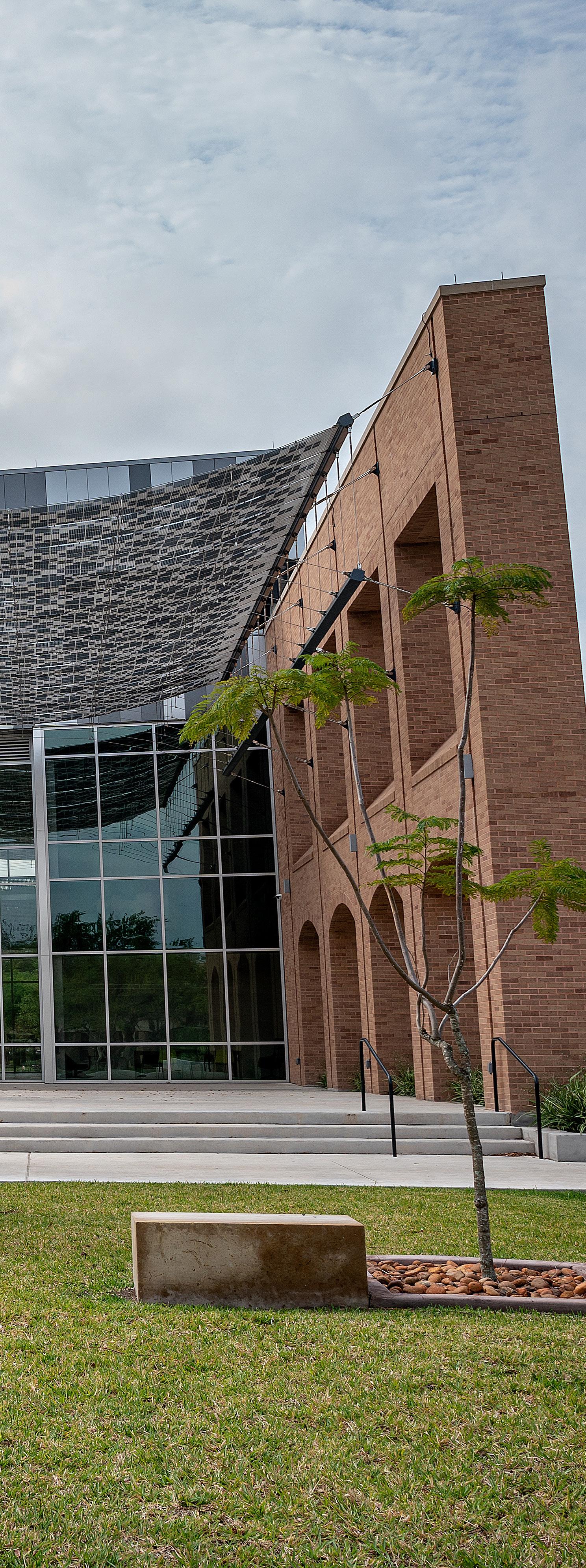
products from within a 150-mile radius.
3. Continue to choose manufacturing partners who supply us with materials that are made from 100% recyclable and recycled materials.
4. Maintain open door policy, where new information on suppliers is revised.
5. Promote our sustainable efforts within our dining hall and retail operations.
Materials, Recycling & Waste
The world is made up of a finite amount of resources that we use, yet universities have the ability to support their operations and campus life through careful management of waste products as well as controlling the campus’ environmen-tal footprint. As UTRGV is able to improve efficiency with their resources, they will be able to generate revenue as they save money through fewer purchases. As data on details concerning the amount and types of waste as well as recycled content is gathered, we will be able to provide benchmarks for future efforts for a reduction in the amount of waste generated across campus.9 The objective of this area is to reduce waste while at the same time increase recycling opportunities for the campus.
Goal I:
Reduce the amount of solid waste disposal by increasing recycling opportunity efforts.
Strategies:
1. Determine and track current recycling rate for campus, i.e. waste diverted from disposal in land fill to recycling center.
2. Incorporate recycling efforts on all campus operations through education, signage, and recycling bins.
3. Partner with student organizations to incorporate recycling at all campus events, including student orientations.
4. Centralize drop-off recycling areas that correlate with the highest generating departments/buildings on campus to expedite and make pickups more efficient.
5. Standardize recycling bins and signage across campus.
6. Explore options for recycling other commodities such as light bulbs, batteries, plastic bottles, carpet, and etc. (Campus currently recycles office paper, cardboard, printer car-tridges and scrap metal.)
7. Recycle at athletic events; use compostable plates, napkins, cups.
8. Implement end-of-the-year “Trash to Treasure” type of yard sale where unwanted student items are sold to the community.
9. Explore innovative reuse strategies for construction/ demolition waste.
10. Track numbers with Department of Environmental Health and Safety (DEHS) on disposal of hazardous waste.
11. Track numbers with Assets Management on reuse and resale of older but usable electronics, furniture, etc. to the general public.
12. Launch a campaign to educate students, faculty and staff about the three R’s – Reduce, Reuse, Recycle.
13. Encourage printing on both sides of paper.
14. Encourage use of electronic means rather than paper.
15. Work with Bookstore and Dining Facility to reduce/eliminate use of plastic bags.
16. Consider a partnership with Habitat for Humanity to recycle/reuse items such as doors, wood, etc.
Goal II:
Reduce water usage from current 2010 levels by 20%.
Strategies:
1. Install water wise shower heads, low-flow toilets, waterless urinals. (Extreme low flow/ dual flush toilets are now being manufactured that utilize less than 1.3 gallons per flush.)
2. Publicize and encourage student, faculty and staff to report water waste on campus.
3. Consider use of compost and mulch, native plantings, and reduction of water-needy lawn areas.
4. Explore use of gray water for irrigation purposes.
5. Consider underground cisterns for rooftop rainwater collection for later use in landscape irrigation.
6. Install drip irrigation where irrigation is needed.
Goal III:
Reduce hazardous waste on campus with the following strategies.
Strategies:
1. Consider specifying “green” cleaning chemical alternatives.
2. Implement pilot test for full line of green cleaning products and convert housekeeping to new green products.
3. Explore options for recycling hazardous chemical waste.



4. Consider switching to R-123 refrigerant for chillers.
Goal IV:
Reduce storm water runoff with the following strategies.
Strategies:
1. Construct retention ponds in areas that currently have reduced or limited drainage.
2. Install and test Bio-swales on campus when a suitable project becomes available.
3. Monitor the development of porous pavements. When a suitable project becomes available, install and test on campus.
4. Disconnect roof drains from storm water systems and divert water to “raingardens,” ponds, bio-swales and other storm water retention devices.
5. Consider construction of a regional storm water detention facility with multiuse as athletic fields, outdoor events, etc.
6. Create Biofilters at all existing storm drains to filter storm water systems as necessary to reduce suspended solids.
Landscape & Grounds
Landscape & Grounds has numerous opportunities to integrate sustainability. The University of Texas-Rio Grande Valley is located on 665 acres, divided into north and south and supporting a wide diversity of local and regional species. The grounds department takes great pride in applying and developing techniques towards a more sustainable campus environment for both our campus community and the public.
The primary principal entails a change of campus community culture by focusing on the preservation of natural resources while minimizing our carbon elements (i.e. electricity and water) which have historically been consumed at a higher rate, yet essential for the operation of the institution.
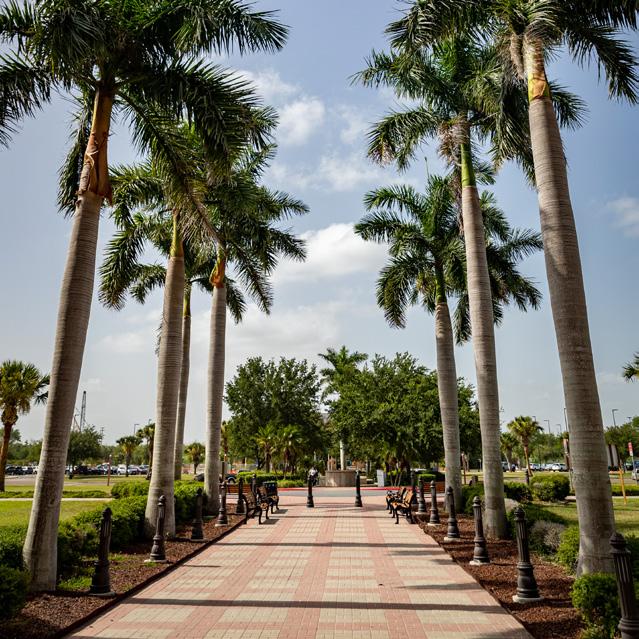
The vision is to transition all landscape and grounds maintenance activities to a more ecologically sound operation by extending awareness and educational programs in support of this plan. The program shall reflect a change of culture and a change in design through the application of sustainable principles and budgetary support that nurture these principals.
Goal I:
Implement planning and design strategies on all new construction for a sustainable landscape and ongoing, with the following strategies.
Strategies:
1. Review master plans in order to consider applicable changes design.
2. Review landscape and irrigation plans at the design phase.
3. Compile a list of acceptable native/ nativeadaptive plant material to use in new designs.
4. Review plans for proper selection of plant materials which are conducive toward low maintenance, heat and drought tolerant landscapes; increase the number of native shrubs and trees.
5. Minimize the number of flower beds in landscape designs which require a larger watering requirement; select flowering ground covers, shrubs and trees.
6. Implement bio-swales in new construction and parking lot designs.
7. Partner with local forester to review designs.
Goal II:
Ensure sustainable practices (i.e. water conservation) on existing landscapes through replacement of plant material and redesign strategies.
Strategies:
1. Create strategy to minimize the number and
size of flower beds which consume large volumes of water.
2. Schedule a replacement cycle for nonsustainable plant materials with those which support heat and drought tolerant designs.
3. Establish budget to support replacement cycle.
4. Reduce the number of existing flower beds and implement replacement cycle for sustainable plant material.
5. Replace carpet grasses and appropriate flower beds with Bermuda hybrids in order to minimize water requirements. Strategy shall be applied when applicable.
Goal III:
Implement sustainable strategies into the maintenance and operations of landscape and grounds.
Strategies:
1. Develop strategy to sustain Maintenance & Operations operating budget by applying sustainable practices.
2. Train grounds staff on information related to sustainability principals as it relates to Landscapes & Grounds, change of culture, and implementation of strategies, with consideration of current budget reduction in travel funds.
3. Consider changing the mowing cycle of lawns to reduce maintenance of equipment such as mowers and light duty equipment.
4. Reduce disposal of yard waste in landfill by converting to compost and mulch.
5. Review and assess list of chemical herbicides/ pesticides, select and implement alternative measures which would be safer for the environment.
6. Develop an irrigation maintenance program to allow consistent auditing of systems.
7. Develop a composting that allows for recycling of vegetative waste. Resultant compost and

mulch can be used on landscaped beds and grounds.
8. Create position of Sustainable Practices Coordinator for grounds crew.
Information Technology
Technology allows us the ability to reduce our waste and consumption of energy in many ways. Sustainability refers to the manufacture, management, use and disposal of information technology in a manner that is friendly to the en-vironment. Managing the power consumption of electronic equipment, such as energyefficient desktops, servers, notebooks can be environmentally safe. Sustainable disposal is generally ensuring that e-waste (old computer equipment) does not end up in a landfill where the toxic substances can leach into groundwater and other sources.10 UTRGV is committed to using technology, thereby reducing waste, consumption, and travel. UTRGV uses various online systems to assist in the reduction of waste.
Goal:
Reduce energy consumption and paper waste of UTRGV through the implementation of information technology programs.
Strategies:
1. Collaborate with Energy Conservation committee to determine energy usage of UTRGV campus.
2. Purchase Building Information Modeling (BIM) software (state-of-the-art design technology that helps view the structure of buildings and their consumption of energy resources) to track energy consumption, and hire individual to train employees on this software.
3. Collaborate with Facilities and various departments when building new buildings or renovating old buildings to incorporate and implement the latest technology. 4. Optimize power efficiencies in Data Center by applying best practices to configuration and deployment of physical and virtual servers.
5. Plan upgrades to Data Center HVAC using en-



ergy-efficient technologies.
6. Reduce paper consumption campuswide through paper reduction initiative.
7. Allow students, the public, businesses, and employees to conduct business with university electronically.
8. Collaborate with Purchasing to specify energy-efficient or “Energy Star” electronics to include computers and other technological equipment.
9. Create simple educational programs that save energy immediately and include:
a. Power it Down: set power options to power down monitor and hard disk when not in use. Use a network PC energy management tool to optimize your organization’s electricity use.
b. Print Sparingly: choose double-sided printing as default setting. Use a print optimization tool to reduce waste paper.
10. Create educational awareness by encouraging students, faculty and staff to use electronic means such as email, pay-on-line, and other online programs.
11. Promote video-conferencing between campuses and other entities for “meeting technologies.”
12. Facilitate the message of sustainability in all UTRGV websites.
13. Encourage facility to use web-based conferences, seminars, etc.
(Endnotes)
1 University of Delaware. (2010). “A Sustainable University of Delaware.” Retrieved on July 26, 2010, from http://www.udel.edu/sustainability/ doing/doing_research. html
2 Indiana University—Bloomington. (2008). “Campus Sustainability Report.” Retrieved on July 20, 2010, from http://www.indiana.edu/~sustain/docs/Campus_Sustainability_Report.pdf
3 ibid
4 ibid
5 ibid
6 ibid
7 US Department of Labor. (2010). “All Urban Consumers – (CPIU), US city average, All items.” Retrieved on July 20, 2010, from ftp://ftp.bls.gov/pub/special.requests/ cpi/cpiai.txt
8 Indiana University—Bloomington. (2008). “Campus Sustainability Report.” Retrieved on July 16, 2010, from http://www.indiana.edu/~sustain/docs/Campus_Sustainability_Report.pdf
9 Indiana University—Bloomington. (2008). “Campus Sustainability Report.” Retrieved on July 21, 2010, from http://www.indiana.edu/~sustain/docs/Campus_Sustainability_Report.pdf
10 IT Solution Journal. (2010). “Environmentally Sustainable IT Definition and Solutions.” Retrieved on July 21, 2010, from http://www.itsj.com/launchpage.aspx?CID=16449


Introduction
The concept of making human actions compatible with the Earth has gained acceptance all over the world, with citizens as well as governments attempting to encourage greater responsibility over issues such as pollution, carbon footprints, and conservation. Sustainability embodies the belief in limiting our destruction of the earth, creating a sustainable existence. The United Nations (UN), as early as 1987, incorporated sustainable development as a guiding principle in their development efforts. Their understanding of sustainability as “meeting the needs of the present without compromising the ability of future generations to meet their own needs”1 corresponds with the accepted definition used here by the University Leaders for a Sustainable Future (ULSF).2 With leadership from global institutions such as the UN and ULSF, The University of Texas-Rio Grande Valley (UTRGV) is striving to transform itself into a leader in sustainability for the Rio South Texas region.
Because universities play a critical role in teaching residents about a sustainable future, UTRGV established the Office for Sustainability and the University Sustainability Council (USC) in 2009 to work together to create a tenyear Sustainability Campus Action Plan. The intention of the Office and the USC is to successfully integrate ecological soundness, economic viability, and social justice into actions and behaviors of the UTRGV community; in this way we can meet the needs of the present generation without compromising the ability of future generations to meet their own. The three components of sustainability are explained below.
Actions that are ecologically sound cause little harm to the natural environment. Humankind cannot exist on a polluted, degraded, or contaminated Earth. Our livelihood depends on clean air, water, and food, thus we must treat the earth with care and keep it clean. This is sustainable. In order to be economically viable, we need to keep the economy healthy, with characteristics such as job creation, low inflation rates, and growth. The buying and selling of products that are made in an ecologically sound and socially just manner is


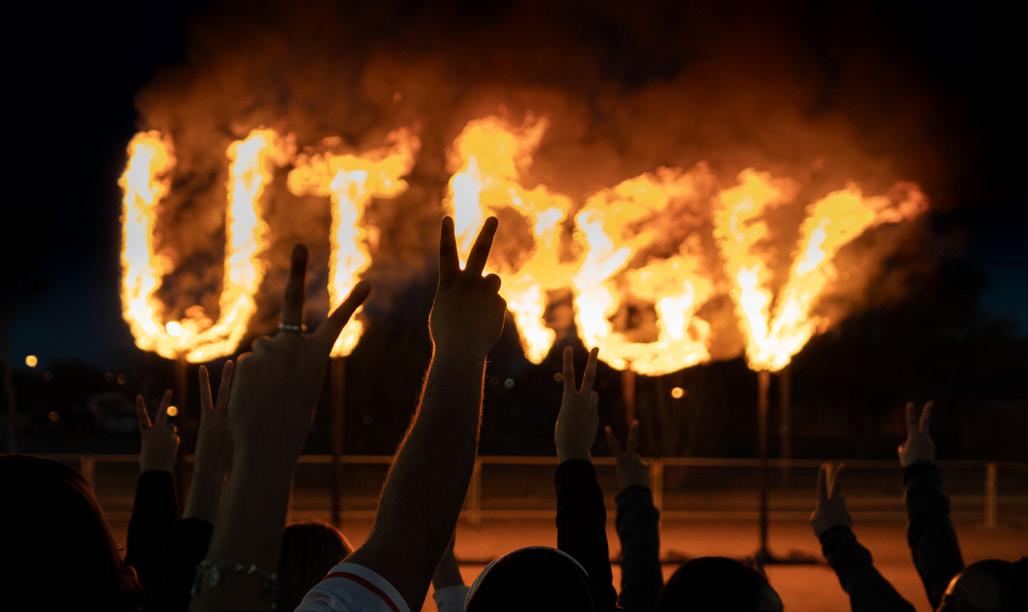
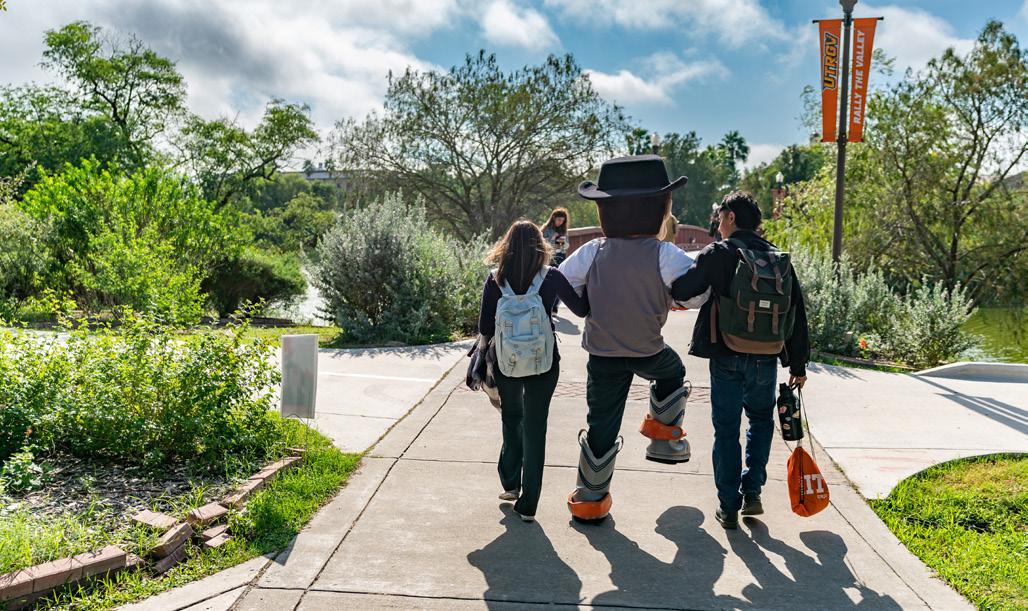
necessary and encouraged; consumers need these choices in order to maintain a healthy economy. Companies and institutions that are socially just treat their fellow human beings with respect rather than prejudice, and fairly rather than with discrimination. It is not sustainable for segments of society to maintain unequal power over others, or to escalate to the point of war. We must not perpetuate discrimination or violence. Keeping focus on these three factors is the way a society can maintain sustainability.
The staff, faculty, and administrators of UTRGV have worked hard to make it a prominent university in the region of Rio South Texas. In 2009, Forbes ranked UTRGV in their 100 America’s Best Public Colleges as 3rd in the state of Texas behind UT Austin and Texas A&M College Station; it was 32nd in the nation.3 UTRGV was also ranked second in the nation for award-ing bachelor’s degrees to Hispanics.4 Ideally located in one of the fastest growing areas of the country, UTRGV is situated alongside the international border between the U.S. and Mexico. The McAllen-Edinburg-Mission met-ropolitan statistical area (MSA) is scheduled to have 1.9 million people by 2030, which is a 397% growth rate from the 1990 population.5 This situation presents unique challenges as well as opportunities with regard to sustain-ability. UTRGV is rising to the challenge, recognizing unhealthy mindsets and is working to change them in favor of sustainable attitudes and action. By conserving the natural resources we use including energy, water, and materials, we can help achieve the university’s goal of climate neutral-ity. Energy conservation opportunities are plentiful, but UTRGV must invest in or finance energy-saving infrastructure for cost-effective savings and to accomplish UTRGV’s goal of sustainability leadership. One way to achieve conservation is creating a process that assures all new buildings and major remodeling projects will meet advanced LEED standards. At a minimum, all new developments should strive for LEED Silver status and all UTRGV campuses should be exemplary in the use of trees, landscaping, and other natural elements.
In purchasing all the products and services this university uses, we can support sustainability. By establishing an environmentally preferred purchasing system (Green Guide), we will assure UTRGV’s acquisition of recycled content materials, energy efficient equipment, and items produced locally. Finally, this university seeks to partner with local and regional governments, businesses, and institutions to raise awareness, host sustain-ability-related events, and promote community sustainability projects. We engage alumni, neighbors, local businesses, and community organizations to participate in environmentally healthy practices and to exchange ideas for mutual benefit.
This sustainability initiative brings UTRGV into a growing national and international movement to address global-scale environmental issues in the academic arena. More-


over, sustainability has been embraced by many companies and businesses, many of whom are looking for college graduates with the knowledge of how to incorporate these initiatives into their practices. Today’s students are tomorrow’s leaders, and UTRGV has a responsibility to prepare students with the skills and knowledge necessary to make capable leaders in the corporate, educational, and political world.
The Sustainability Campus Action Plan for UTRGV is intended to provide a roadmap for major steps toward sustainability over the next ten years. The rationale for developing it includes consideration of the current state of the world combined with understanding the role that large institutions can play in shaping the future. Universities already take the lead in educating society and conducting research, thus the logical next step is to educate and be a role model for sustainability and ecological issues. We view this initiative as an opportunity for UTRGV to take a leadership role in incorporating concepts of sustainability into University practice and the creation, dissemination, and application of new areas of academic scholarship in this emerging field. By creating the Office for Sustainability, UTRGV is taking the first steps toward establishing a leadership role, not only in incorporating concepts of sustainability into university practice, but also in the creation, dissemination and application of new areas of academic scholarship in the emerging field of sustainability.
The idea for the Office for Sustainability was formed in 2007 when former UTRGV president Dr. Blandina “Bambi” Cardenas became interested in making the campus more sustainable. Her idea came to fruition in 2009 when interim president Dr. Charles A. Sorber established the Office, assigning Marianella Q. Franklin as the full-time director of sustainability programs. Since then, Ms. Franklin has hired staff members to assist in further establishing the office. Current president Dr. Guy Bailey is committed to implementing sustainability across campus by charging the Council and Office for Sustainability with the responsibility

of developing an integrated Sustainability Campus Action Plan (SCAP) which would guide the university in an effort to become a leader in respon-sible environmental stewardship, education, outreach and research.
UTRGV strives to become a model of sustainability, integrating the goals of preserving a healthy and sustainable ecological system, developing economic viability, and pursuing social justice for the region of Rio South Texas. The Office for Sustainability seeks to engage every corner of the university in efforts to create an environment in which all members of the campus community are encouraged to further sustainability in their personal and professional lives. The Office supports identifying solutions to environmental challenges, generating knowledge, acquiring skills, developing values, and initiating practices that will contribute to a sustainable, high quality of life on campus, in the Rio Grande Valley, and across the globe.
Our goal is to begin integrating sustainability into all areas of UTRGV. Within curriculum, we can expand the variety and quality of sustainability-related courses, programs, and degrees offered and create new opportunities for interdisciplinary study. UTRGV’s greatest opportunity for impact lies in the classroom, and we seek to leverage UTRGV’s location and other strengths to become a preeminent, interdisciplinary Sustainability Research entity that engages students and faculty in sustainability-focused research. Through enhancing awareness about UTRGV’s recycling system, we encourage broad participation and the reuse of a wide variety of materials.
* This plan has modeled itself on a collection of campus plans from universities throughout the entire United States, but most closely resembles that of Indiana University-Bloomington. We appreciated their policies and thought their structure was similar to what we envisioned for our campus plan structure.
Institutional Context
The nation’s leading private and public universities

have openly committed themselves to resolving sustainable challenges. Both private and state institutions are examples of this commitment to reducing waste, improving water and air quality, and providing academic avenues through which students, faculty, and staff members can pursue sustainable courses, majors, and research.
Comparisons with Peer Institutions
The following examples demonstrate some of the initiatives underway at other private and state universities: Harvard University leads the way with implementing sustainability on campus. The Harvard Green Campus Ini-tiative (HGCI) implements sustainability principles across campus. Among state university systems, The University of California has one of the broadest-ranging sustainability initiatives. The system-wide policy is overseen by a sus-tainability steering committee, which has working groups in the areas of sustainable transportation, climate change, green building renovations, sustainable operations, sustain-able purchasing, recycling and waste reduction, and sustainable food systems.
The University of Michigan offers a joint MBA/ MS degree program in Global Sustainable Enterprise, while Michigan State University created ten tenure-track faculty positions (including three endowed chairs) related to sus-tainability. The president of Arizona State University is a co-founder of the American College & University Presidents’ Climate Commitment (ACUPCC). Some of ASU’s efforts include raising building temperature two degrees in the summer and lowering them two degrees in the winter, con-structing two additional solar arrays, and developing the nation’s first School of Sustainability; this school offers a PhD in Sustainability, two master’s programs, two bachelor’s degrees, and a certificate program in this field.
The ACUPCC “is a high-visibility effort to address global climate disruption undertaken by a network of col-leges and universities that have made institutional com-mitments to eliminate net greenhouse gas emissions from specified campus operations, and to promote the research and educational efforts of higher education to equip society to re-stabilize the Earth’s climate.”6 This two year agree-ment stipulates that colleges and universities will set target dates and interim milestones to become a climate neutral campus. Although at the moment UTRGV is unable to commit to signing this agreement as part of The University of Texas System, we are following the ACUPCC guidelines as we develop our Sustainability Campus Action Plan with intent to sign in the future.
Several universities have committed to the ACUPCC. The following table shows major universities that have made the commitment.
Major Public University Signatories* of the American College & University Presidents’ Climate Commitment
Arizona State University
Ball State University
Cornell University
Indiana State University northern
Arizona University Oregon State University
Penn State University Berks State
University of New York (5 institutions)
University of Alaska, Anchorage
University of Arkansas University of Arizona
University of California (9 institutions)
University of Cincinnati
University of Colorado University of Florida
University of Hawai’i
University of Idaho
University of Illinois at Chicago
University of Maine (5 institutions)
University of Maryland
* Principal campus unless otherwise noted (Endnotes)
University of Massachusetts
University of Minnesota, Morris
University of Montana (4 institutions)
University of nevada
University of new Hampshire
University of new Mexico (5 institutions)
University of north Carolina
University of Oklahoma
University of Oregon
University of Rhode Island
University of South Carolina (8 institutions)
University of South Dakota
University of Tennessee
University of Washington
University of Wisconsin (7 institutions, excluding UW Madison)
University of Wyoming
Utah State University
Washington State University (4 institutions)
1 United Nations. (1999). “Report of the world commission on environment and development.” Retrieved on April 14, 2010, from http://www.un.org/ documents/ga/res/42/ares42-187.html
2 Association of University Leaders for a Sustainable Future. (2008). “About ULSF.” Retrieved on April 14, 2010, from http://www.ulsf.org/about.html
3 Forbes Staff. (2009). “America’s Best Public College.” Forbes Magazine. Retrieved 24 May, 2010, from http://www.forbes.com/2009/08/06/best-publiccolleges-opinions-colleges-09-top.html
4 “Top 100 Colleges Awarding Degrees to Hispanics, 2009.” (2009). Hispanic Outlook in Higher Education Magazine. Retrieved 24 May, 2010, from http://www.hispanicoutlook.com/top100_focus.htm?section=b
5 “Valley Information.”(n.d.). RGV Texas.com. Retrieved 21 May, 2010, from http://www.rgvtexas.com/ValleyInformation.htm
6 Indiana University Bloomington. (2008). “Table I: Major Public University Signatories of the American College & University Presidents’ Climate Commitment.” Campus Sustainability Report, p.14. Retrieved on June 16, 2010, from http://www.indiana.edu/~sustain/docs/Campus_Sustainability_Report.pdf
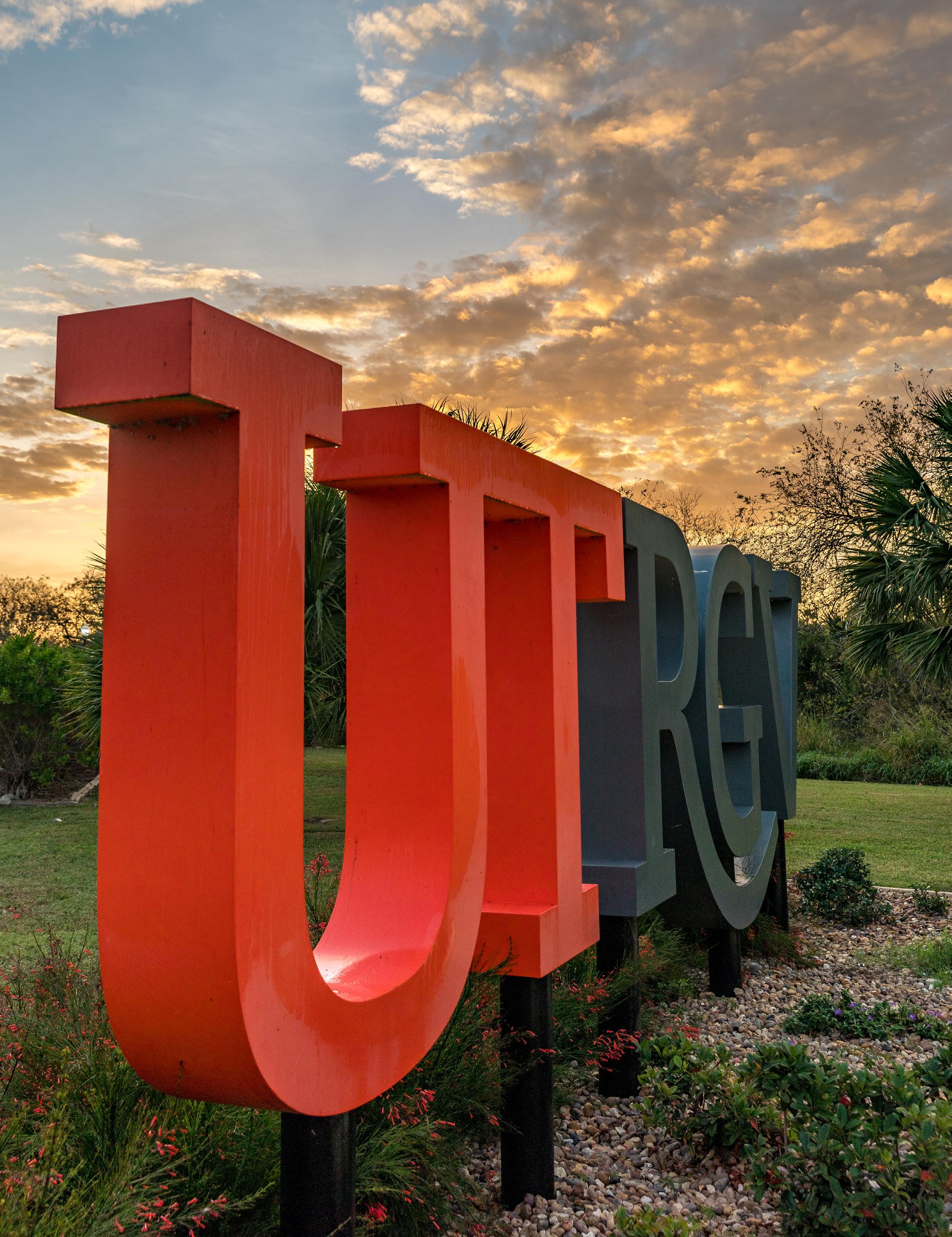

Administration & Governance
The University Sustainability Council has assessed the current status of sustainability on campus, identifying key areas of concern and establishing a framework for a long-term sustainability plan. In addition, a series of task force working groups comprised of university personnel and community members work with each member in their respective area. The members of the Council serve as chairperson for each of the working group subcommittees, as well as a voice for their particular campus constituency to ensure that the concerns of the entire campus community are heard with regard to their critical sustainability issues. The members of the Council must represent all aspects of sustainability on campus, including economic, equity, and environmental issues. Only in this way can all issues be adequately addressed by the Council when prioritizing projects. The Council defined its mission in terms of three functional areas of campus sustainability—Leadership, Education, and Operations—and organized 15 committees under these three areas to address sustainability issues. The product of each of these working groups provides the core of the document presented here. Together, the USC and the Office have laid plans for a speaker series on sustainability issues, created connections to national and international sustainability organizations, and promoted student, staff, and faculty involvement in sustainability.
UNIVERSITY SUSTAINABILITY COUNCIL (USC) MEMBERS:
Mr. James R. Langabeer Vice Presindent of Business Affairs
Marianella Q. Franklin Chief sustainability Officer
Wendy Fowler Vice Provost of Academic Affairs for Research & Sponsored Projects
Sandra Quintanilla
Jessica Salinas
Dr. Ana Maria Rodriguez
Executive Director of Marketing
Executive Director of Community Engagement
Senior Vice Provost of Academic Affairs for Undergraduate Studies

Dr. Calvin Philips Academic Assesment
Travis Hughes Associate Vice President of Enrollement & Student Services
Christopher King Dean of Students
Dr. Richard Costello Assistant Director of Wellness & Recreation
Marvin Boland Director of Athletics
Marta Salinas-Tovar Director of Environmental Health & Safety
Chief Roger Stearns Director of Facilities Planning & Construction
Norma Dryer LEED AP/Architect/Project Manager FP&C
Esequiel Granado Chief of University Police Department
Letty Benavidez Director of Materials Management
Oscar Villarreal Associate Vice President of Business Affairs
Martha Jauregui Director of Auxiliary Services
Albert Luis Director of Maintenance & Operations
Anne Toal Technology Assestment Officer
USC Guests:
Dr. Ala Qubbaj Faculty Representative
Raghuvver Puttagunta Student Government Association (SGA) Representative
Jackelin Trevino Environmental Awarness Club (EAC)
Javier Gonzalez EAC Representative
Mary Lou Cano Staff Senate Representative


Objective of the Office for Sustainability
1. Research
2. Marketing & Development
3. Community Outreach Education
4. Curriculum
5. Co-Curricula Education
6. Health & Wellness
7. Athletics Operations
8. Energy Conservation
9. Facilities
10. Transportation
11. Dining Services
12. Purchasing
13. Materials, Recycling & Waste
14. Landscape & Grounds
15. Information Technology
The Office for Sustainability works as a clearinghouse and resource to promote sustainability on the UTRGV campus and in the regional community. Clear, consistent commu-nication of the role and purpose of the Office is the best way it can achieve its objective. This is done through strategic efforts such as creating a comprehensive website which can be accessed by the general public as well as the UTRGV community, and a creative, interactive facebook page. Additionally, the Office holds workshops, webinars, and seminars; conducts community outreach and education programs; interviews individuals on campus; holds meetings with local government officials and community leaders; and engages in collaborative efforts with other agencies (HESTEC, Valley Environmental Summit, City of McAllen Green Living Festival, and the City of Edinburg Healthy Living Festival, among others).
As the Office is staffed with a director and two staff members, it is working with various departments on campus to acquire undergraduate and graduate interns from the Communication, Business, and Public Administration departments. The Communication interns will work on public relations campaigns, while the Business interns will draft business plans for each of the 15 committees as well as the Office. The Public Administration graduate interns will focus on grant writing. In the future, the hope is to structure internships so that they lead toward degrees in sustainability, both undergraduate and graduate. The following goal and strategies detail what we seek to accomplish, and the ways in which we can achieve that.

Goal:
Assist all areas of the campus to achieve UTRGV’s goal of becoming a model of sustainability in South Texas by preserving a healthy and sustainable ecological system, developing economic viability, and pursuing social justice.
Strategies:
1. Provide and facilitate strategic planning sessions with all fifteen committees to develop and implement goals and strategies.
2. Provide training and development opportunities to anyone in the region.
3. Provide resources for campus community in sustainability issues.
4. Assist in researching grant opportunities for fifteen committees as well as individual faculty members.
Functions
Initiate, support, coordinate, and evaluate campus operational and academic issues related to sustainability.
Report to Vice President for Business Affairs on sustainability issues.
Advise and collaborate with committees to implement best sustainability practices.
Act as advocate for academic initiatives related to new degree programs, course offerings, minors, research projects, etc.
Coordinate sustainability efforts among campus, community, university, state, and peer institutions, serving as liaison to national and international sustainability groups (AASHE, ACUP, Bioneers, etc.).
Communicate sustainability issues facing the campus, acting as the ‘face of sustainability’ for external stakeholders (with contributions from Council and others). This includes maintaining a sustainability website and facebook page, as well as regular communication on sustainability issues on campus and to public.
Coordinate student involvement in sustainability issues via internships, volunteering, and co-curricular opportunities.
Organize high-visibility academic/community events related to sustainability (i.e. lecture series, workshops, student events, Earth Celebration events, etc.)
Funding Sources
UTRGV will use a variety of sources to fund the programs and initiatives related to sustainability. The National Association of College and University Business Officers (NACUBO) and Second Nature have developed a comprehensive resource for addressing these needs, Financing Sustainability on Campus.1 This book includes information on Clean Renewable Energy Bonds (CREBs), carbon offsets, energy performance contracts, tax incentives, revolving loan funds, grants and rebates, and a host of topics related to funding.
In addition, the Office for Sustainability rigorously searches for grant opportunities to assist with funding. Each of the 15 committees is working with UTRGV’s College of Business Administration to create business plans for achieving sustainability goals. Within those business plans projected costs and potential funding sources will be identified.
(Endnotes)
1 Barlow, Ben. (2009). Financing Sustainability on Campus. Washington D.C.: National Association of College and University Business Officers.
Strengths
• Clear purpose, including goals and strategies, for Office;
• Committed group of knowledgeable staff in Office dedicated to its success;
• Willingness of staff to work despite lack of funding;
Weaknesses
• Limited understanding of sustainability on campus;
• Conservative mindset of South Texas views sustainability as political issue, resulting in resistance to accepting it;
• Internal resistance to sustainability issues, which is slowly receding.
Opportunities
• Popularity of sustainability in country makes grants possible at various state and national levels;
• Movement exists to change childhood obesity and poor health habits in region;
• Growing interest in fuel-efficient automobiles due to high prices.
Threats
• Lack of internal funding;
• South Texas culture accepting of obesity and lack of exercise;
• Infrastructure of South Texas does not support aspects such as mass transit, sidewalks, or small vehicles.



Leadership
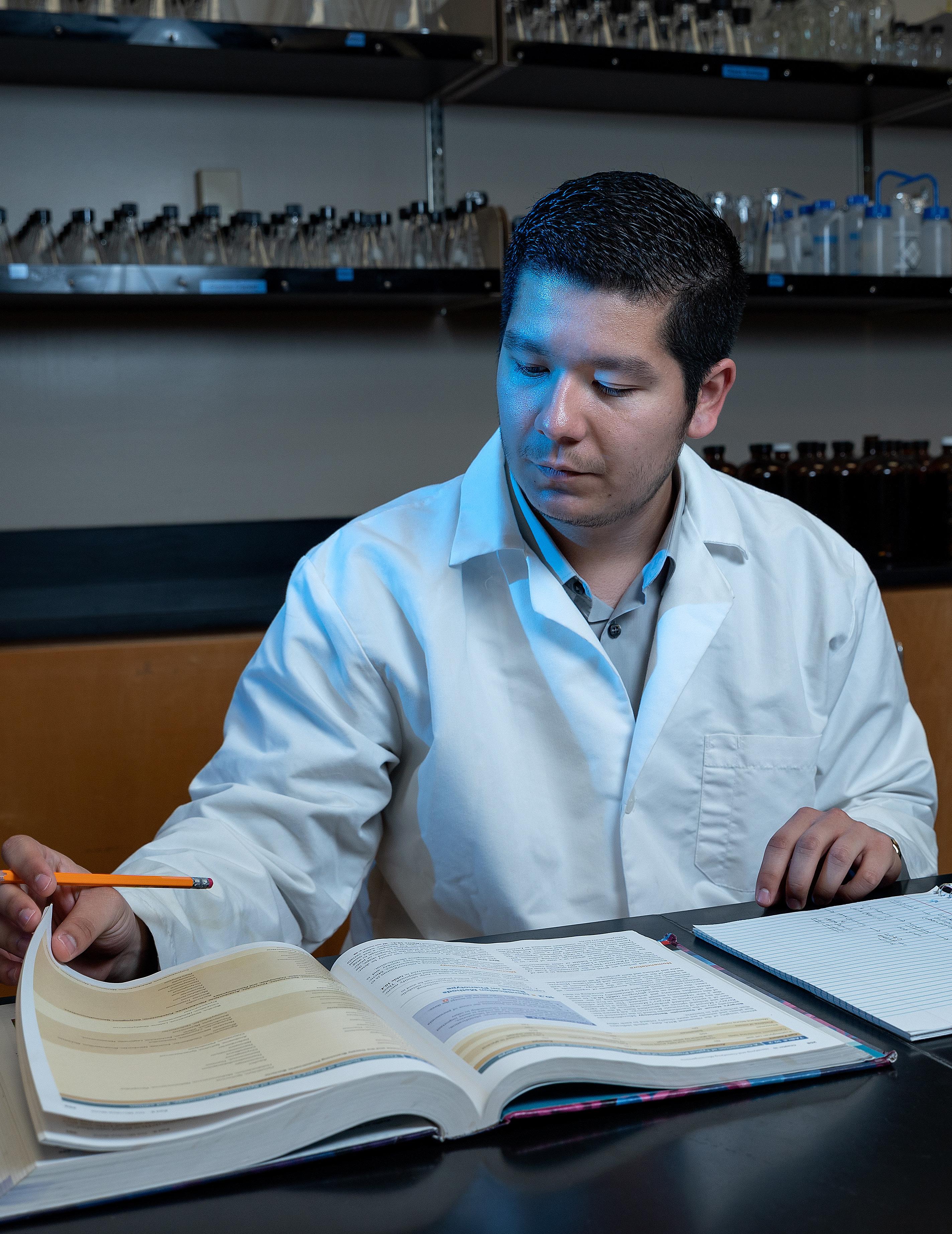

Research
UTRGV is at the forefront for scholarship and research related to sustainability topics. The university’s six colleges all participate in sustainability-related research through formally established agencies as well as individually formed groups of students and faculty members who are dedicated to integrating their research into classroom teachings. This commitment of the UTRGV community continues to add knowledge and understanding of sustainability, and incorporate that into professional and personal lives.
Specifically, faculty of the College of Science and Engineering actively engage students in research related to the impact that human actions have on the environment, with projects that develop alternative energy sources such as solar and wind power, as well as protecting water quality of the Rio South Texas region. The library of UTRGV contains resources as well as knowledgeable staff who can assist students and faculty in their research pursuits.
The scientists, engineers, and economists at UTRGV are working together to develop sustainability research that will respond to climate change, economic problems, and social justice. They are bringing the newest advances in technology and changes in human behavior, all of which relies on innovative crossdisciplinary research. This dialogue, conducted on a regional, national, and transnational level, is aimed at bringing information to business leaders, policy advisors, and the media to help create a more informed public of the advantages of the research done on campus.
Research at UTRGV in the area of sustainability is increasing as efforts focus on bridging disciplines and conducing socially relevant work. This plan posits sustainabil-


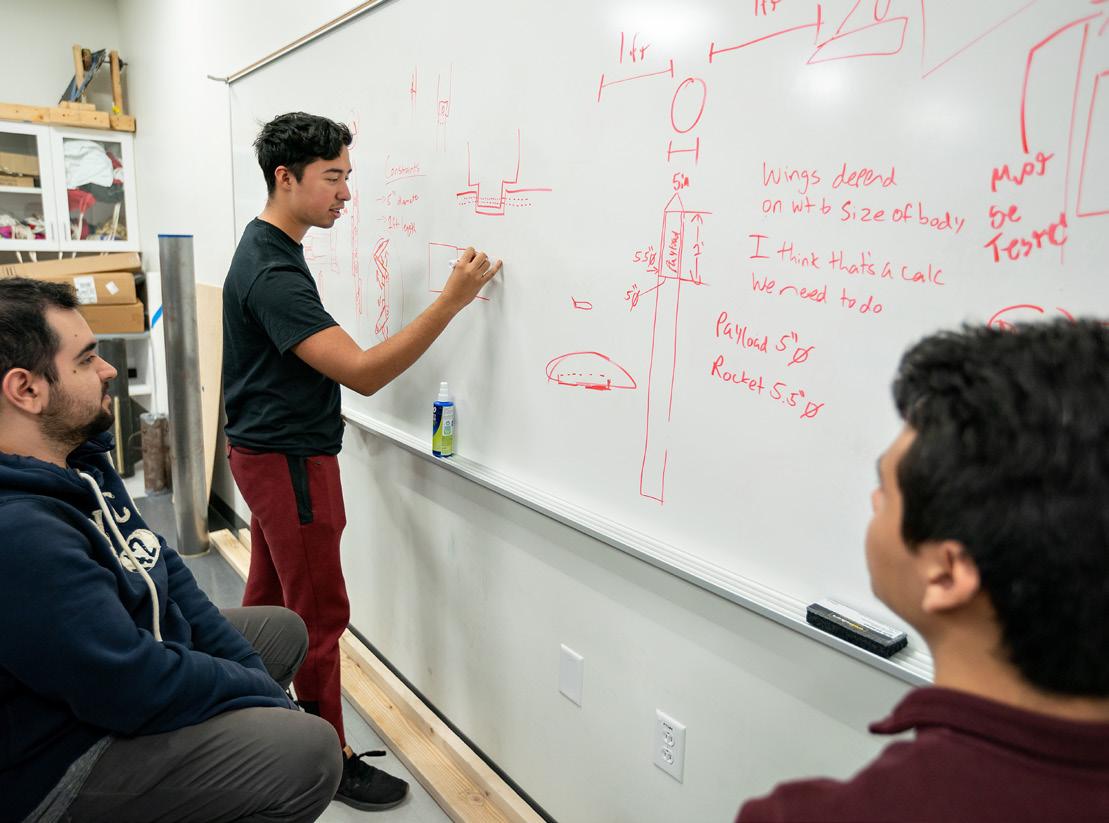
ity research as key in the strategic priority of encouraging the UTRGV community to encourage pedagogic research in this area. While seeking opportunities for faculty and students, UTRGV promotes research development in the area of sustainability across the broad swath of departments and research institutes. Our intention is to undertake evidence-based research in this interdisciplinary field, in search of financial support for education for sustainability in programs at the university.
The research section of this plan is primarily a vision of future opportunities as the university is in the process of increasing its research. The areas in which sustainable research is currently taking place are primarily in the College of Science & Engineering, but also in other divisions and colleges. These efforts are a crucial first step in UTRGV becoming a premier entity in research in sustainable fields.
Goal:
Create a rich and engaging research environment that integrates sustainability into the research activities.
Strategies:
1. Provide seed funding as a special reserved allocation of programs, such as a “Faculty Research Support Program” or a “Multidisciplinary Ventures Fund.”
2. Foster interdisciplinary research collaborations: foster local interdisciplinary research collaborations; foster external/ international interdisciplinary research collaborations.
3. Provide administrative support to obtain and manage grants that relate to sustainability.
4. Encourage participation in multidisciplinary grant proposals, especially those that would not necessarily otherwise be available to individual single-disciplinary re searchers.
5. Mentor junior faculty: create mentoring programs for junior faculty that support interdisciplinary and transformational research.
6. Establish metrics of success and evaluation: establish metrics of success; evaluate and report on performance in terms of these metrics.
Strengths
• Core group of faculty researchers on campus committed to researching sustainability in science and engineering.
• Committed group of student researchers in sustainability fields.
• Researchers utilize location of campus in the Rio South Texas region to pursue research in water quality, alternative energy, and other fields
Weaknesses
• Lack of internal funding.
• Loss of opportunities due to inability (limited staff) to pursue outside funding/grants.
Opportunities
• Opportunities to coordinate with OFS for funding to bring new faculty with expertise in sustainability.
• Sustainability as research topic growing in popularity, resulting in abundance of po-tential faculty members for UTRGV exist with training in this field.
• High energy costs encourage research in alternative energy sources, resulting in engineering research.
Threats
• Current freeze”on hiring prevents acquiring of faculty with sustainability expertise.
• Lack of understanding of connection of research in sustainability to areas outside of science and engineering.
• Within biology there is difficulty in finding students interested in pursuing research in sustainability; preference for medical field and others that can result in higher incomes.
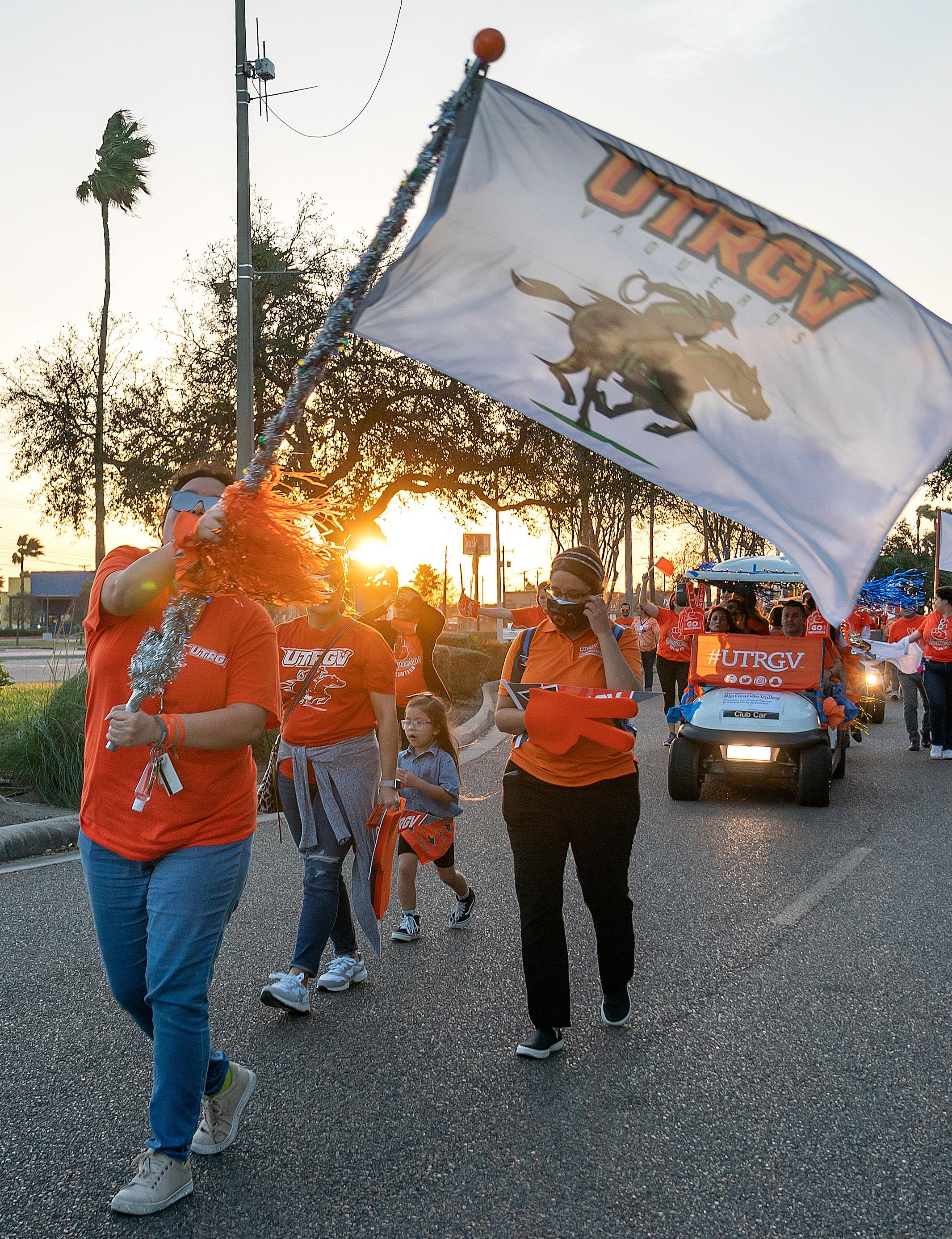

Marketing & Development
An effective communication strategy is essential to achieving the core objectives of UTRGV’s sustainability initiatives. Our communication strategy—ranging from printed reports to online communications and social media—provides a mechanism to engage a broad range of university stakeholders with the goals of our sustainability efforts.
The objective is to provide clear and consistent messages to internal and external stakeholders about sustainability as it relates to research, teaching, and operational initiatives at UTRGV. One way this will be achieved is through the engagement of students in our advertising/ public relations program in the de-partment of Communication. With the assistance of faculty, undergraduate students are developing campaigns to teach the campus community how the fifteen committees contribute to sustainability. This is a new project and our intention here in the Office for Sustainability is to continue working with student groups to create annual campaigns that are fun and energizing, and promote a culture of sustainability among students, faculty, and staff of the UTRGV campus.
Public Affairs has been instrumental in assisting the OFS in their marketing efforts. Below are some of their contributions, some of which can be found on our website.
Wrote press releases for the internet and local newspapers, including a story that introduced the new Office for Sustainability and its goals.
Completed a story on the solar panel project on the Engineering Building roof.



Wrote and produced a video news stories on the TXU tree donation, which included interviews from Marianella Franklin, the sustainability director, and a student representative from UTPA’s Environmental Awareness Club. The story aired on local networks: NBC, Fox, and ABC.
Spreading awareness among the community through multimedia attention.
Marketing and Creative Services (Studio Twelve01) has supported the OFS in their communication efforts. Working with IT to develop their website, photograph sustainable aspects of the UTRGV campus, and integrate sustainable messages into marketing and communication pieces for all university offices. For fiscal year 2010-2011, plans are in the works to create a multi-channel recruitment ad that focus on how UTRGV is a sustainable campus in a variety of ways. These efforts have been instrumental thus far in promoting the Office. In September 2010, the office of University Marketing and Communications plans to focus the next edition of Los Arcos onUTRGV’s efforts in achieving a sustainable future for the campus and beyond. Los Arcos is the university’s magazine that informs alumni and friends about events, accomplishments, and news on the UTRGV campus, and is published twice a year.
The following additional measures can be taken to promote and spread the message of sustainability to campus and the community.
Goal:
Increase awareness of sustainability by UTRGV community, via the following strategies.
Strategies:
1. Promote and market UTRGV Office for Sustainability and its mission.
2. Promote campus sustainability initiatives through all media outlets.
3. Monitor university communications to ensure cohesive sustainability messages.
4. Support creation of UTRGV Office for Sustainability website.
5. Support fundraising efforts of sustainability on campus.
6. Make recommendations to university community on how to communicate in sustainable ways.
7. Encourage volunteerism among Division of University Advancement staff to become role models in sustainability efforts.
8. Implement best practices in sustainability within division.
9. Develop measures to monitor progress.
Strengths
• Strong support from campus Creative and Marketing Services for sustainability issues.
• Cooperation with Communication department for student campaigns which promote sustainability.
• University Relations assists in developing sustainability issues to campus and outside community.
Weaknesses
• Challenge in marketing sustainability without consumption of paper products.
• Mindset of campus sees limited value in promoting sustainability.
• Marketing must target when students, staff, and faculty are on campus, which is limited due to semester breaks.
Opportunities
• Campus television system offers inexpensive way to market sustainability.
• Technology presents inexpensive or free marketing opportunities.
• Student interns for marketing in communication and business are abundantly avail-able.
Threats
• Current recession (2010) limits funding for university endeavors in marketing and development.
• High turnover of staff members.
• Local media outlets do not always support newsworthy sustainability events/issues.

Community Outreach
Extending beyond the confines of the classroom and laboratory, community engagement is an effective means of communicating the campus sustainability program to the Rio Grande Valley. Community outreach is the vehicle by which a university connects and collaborates with the surrounding areas, identifies community needs, and works to meet and resolve those needs. The University facilitates resources and services to our community via the Department of Community Engagement (CE), which operates in four areas: Community, Economic, Rural and Business Development. Community outreach is an integral part of any sustainability educational program, and enhances the relationship between UTRGV and the Rio South Texas region.
The Data Center is an integral resource that employs asset-mapping, a procedure that identifies the variety of assets in a specific region: human, intellectual, financial, physical, and institutional capital. Asset-mapping helps pinpoint gaps within a community and provides a base for strategic planning that allows for the incorporation of sustainable efforts when local municipalities and business owners seek information regarding the economic infrastructure of an area that can be used when applying for municipal contracts and federal grants.

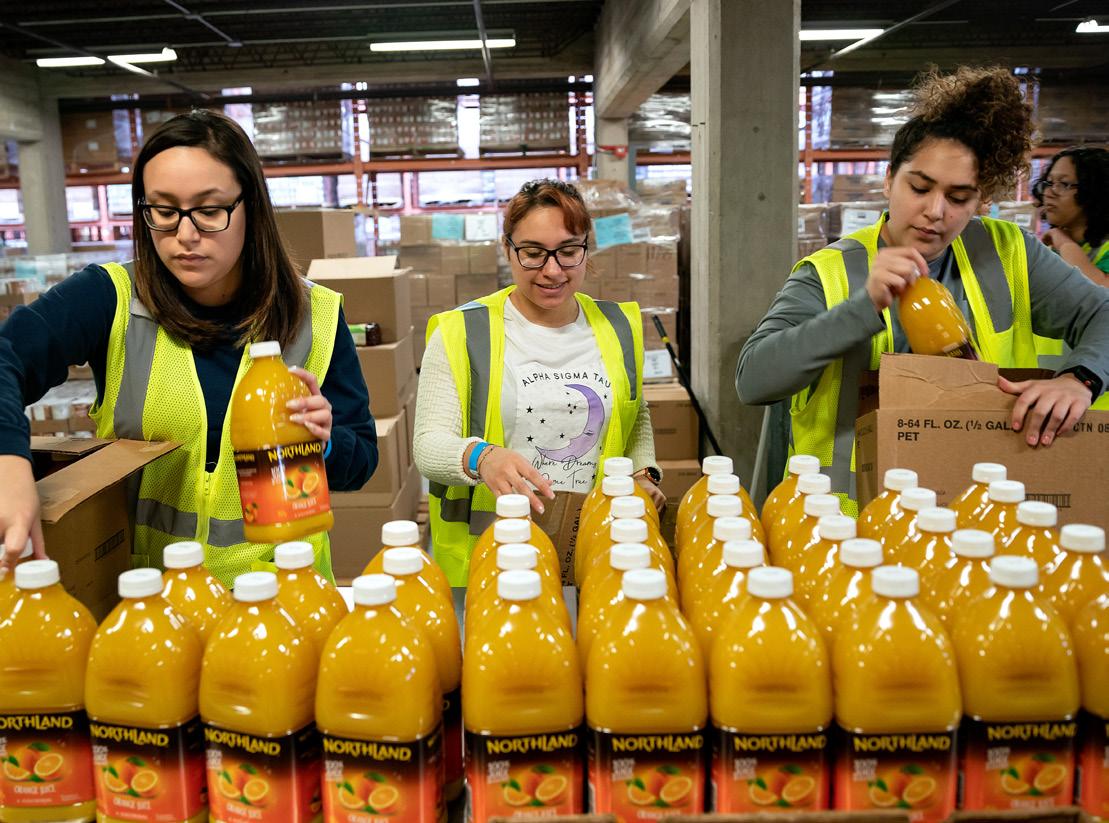

The Southwest Border Nonprofit Resource Center (SBNRC) helps promote capacity building in many nonprofits across the Rio Grande Valley by providing informational sessions and workshops geared towards empowering nonprofits to strengthen their leadership and operation. Through its Texas Rural Cooperative Center, CE helped organize the Sustainable Ag Conference for Large and Small Food Production, centered on the theme, “Healthy Soils, Healthy Foods.” The conference began with an all-day workshop by noted author and lecturer, Arden Andersen, Ph.D., and included various field trips and presentations that focused on the long-term sustainability of agricultural food production. Additional assistance from the Rural Development department includes partnership in the Delta Mercado Farmer’s Market Initiative, assisting with the coordination and promotion of agricultural development for sustainable encouragement in small, rural communities.
UTRGV encourages and promotes strategic engagements with the community via two established events and a proposed event to promote sustainable practices and education: HESTEC, FESTIBA, and Viva el Mundo.
The Hispanic Engineering, Science and Technology (HESTEC) is a nationally recognized week-long program that seeks to encourage Hispanic students to pursue higher education and a career in the fields of science, technology, engineering and mathematics (STEM) by exposing them to workshops and presentations. During HESTEC Week, engineers and scientists from government and corporate America introduce participants to STEM careers, imparting educators the tools needed to inspire their students within the classroom (Educator Day); granting parents the wisdom and knowledge to motivate their child to pursue a secondary education within their home (Latina Day); giving students role models they can relate to and aspire to be like (Student Leadership Day, Robotics Day and Career Expo); and involving the community as a whole (Community Day). By communicating with these constituents, HESTEC presenters and keynote speakers successfully change perceptions of and garner support for STEM education at all levels, as well as promote an awareness of green practices and being eco-friendly. HESTEC staff also actively integrates sustainable efforts into all stages of event operation and production.
Organized through a collaboration between the College of Arts and Humanities and CE, the Festival of International Books and Arts (FESTIBA) encourages students of all ages to celebrate the Arts and Humanities, embrace literacy, and broaden cultural awareness through books, poetry, drama, lectures, musical concerts, artistic exhibits, presentations in design, dance, theatre, digital lighting, and films. Although this event is shorter in existence than HESTEC, the Department of CE would like to see FESTIBA embrace the theme of protecting our planet and sustainable efforts in
its events in the near future.
At a time when new technologies are introduced around the globe, the demand for energy increases, and our planet suffers from the effects of global warming, UTRGV seeks to introduce a new program called Viva El Mundo, tentatively scheduled to begin in April 2011. Currently in its planning stages, spearheaded by the Department of CE, this program will bring governmental, corporate, and educational leaders to discuss topics ranging from addressing the benefits of tapping into economical, eco-friendly renewable energy sources to the importance of embracing and integrating the concept of sustainability as part of the school curriculum.
From UTRGV’s perspective, outreach is one of the key mechanisms for staying attuned to community needs. Thus, community outreach is an integral part of any sustainability educational program and enhances the relationship between UTRGV and South Texas.
The following goals and strategies have been identified in this area:
Goal I:
Strengthen integration of sustainability message into established UTRGV community-based out-reach events.
Strategies:
1. Implement sustainability outreach educational programs, starting with 10% and leading up to 90%.
2. Track and record data on sustainability efforts of students targeted in outreach programs.
Goal II:
Increase UTRGV’s profile as a community leader in sustainability through establishment of outreach event on campus promoting sustainability.
Strategies:
1. Establish agenda and execute UTRGV’s first Earth celebration, Viva el Mundo, (Environmental Day).
Strengths
• One of the three annual outreach events is environmental, Viva el Mundo.
• Strong support and understanding of relevance of sustainability to South Texas community on campus.
• Local media highlight outreach events, helping promote sustainability.
Weaknesses
• Lack of coordination for sustainability outreach among campus entities.
• Community has preference for vehicles with high fuel consumption.
Opportunities
• South Texas community has agricultural traditions upon which sustainability can build.
• Outside funding opportunities in the form of grants exist.
• University has tradition of community engagement, pulling students from local reas to attend UTRGV, which can be used as leverage.
Threats
• Many of the outreach programs depend on outside funding, and availability is not guaranteed.
• Competition for grants/outside funding exists among campus departments.
• No culture of sustainability in South Texas, resulting in high obesity and diabetes rates.
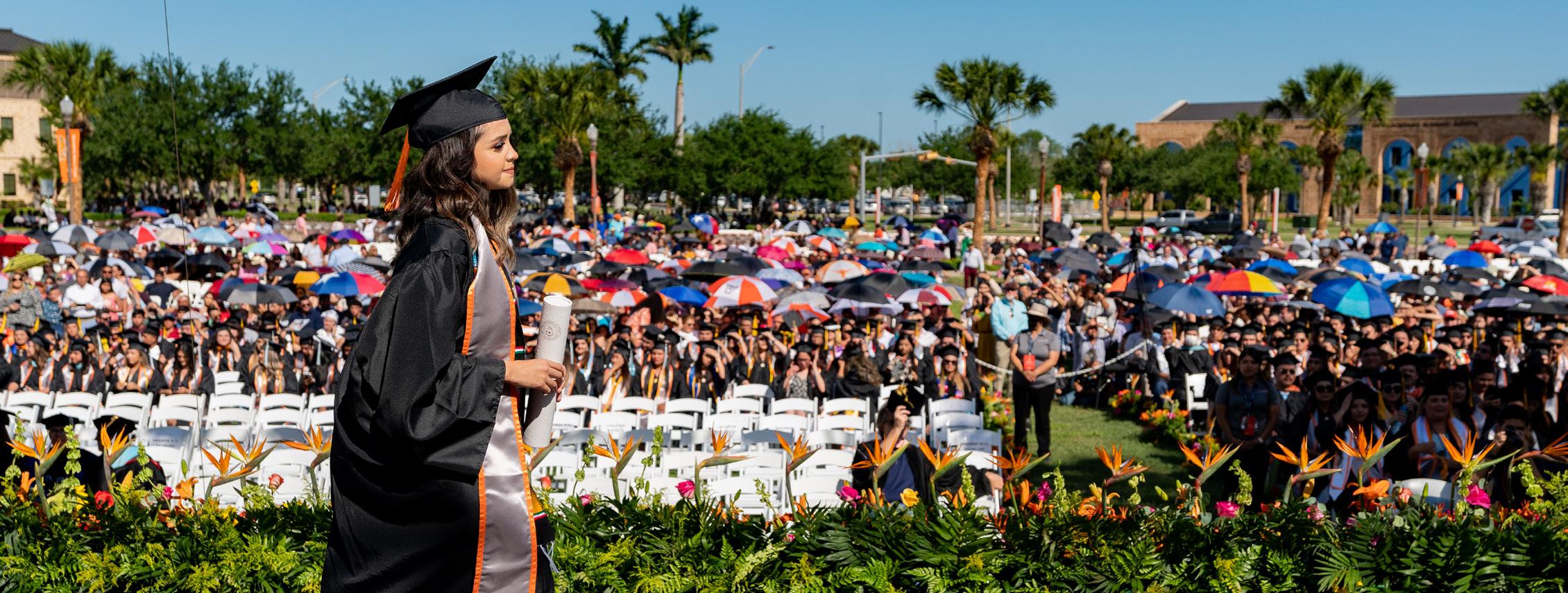

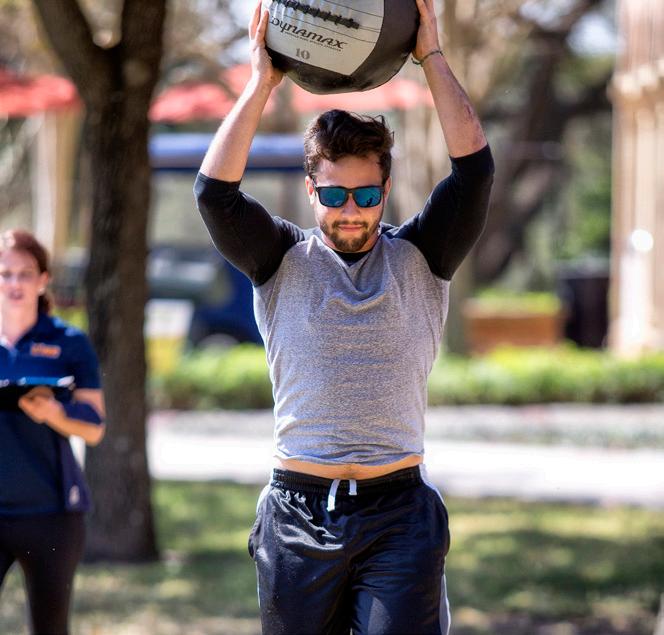
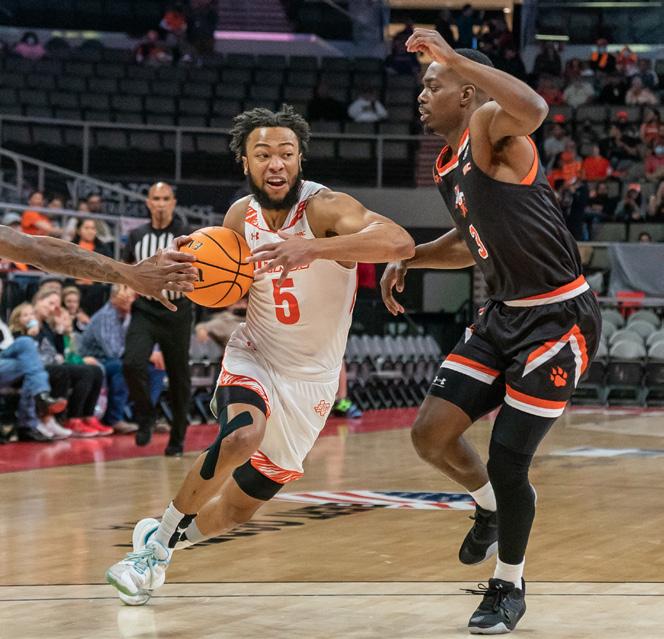
Education


Curriculum
In the classroom, sustainability has a broad meaning that touches a wide array of disciplines and methodological approaches. It is a big tent concept that embraces the ideas of financial security, social justice, and environmental responsibility.
Education, then, provides students with a sense of environmental and social citizenship and with the knowledge and skills needed to work effectively for sustainability. Achieving this goal requires that students encounter the key concepts of sustainability multiple times throughout their college careers, and in a variety of venues. Courses that focus on sustainability should not be limited to a few programs or to a single college; rather, they can and should be taught across all colleges and departments.
Building on the university’s impressive expanse of academic expertise, infrastructure, and archival resources, UTRGVs present efforts in curriculum in sustainability extend across all of its six colleges. With a modest investment of academic resources, the university will be in a strategic position to take a leadership role in this emerging field of study. Currently, a review of UTRGV’s courses indicates that each university academic college features sustainability content. These can build the foundation on which coordinated and integrated sustainability programs can grow.
The University of Texas System is endowed with the human infrastructure needed to make this academic initiative a reality. Over the past year, a number of new educational efforts related to sustainability have been initiated at the level of student residential and cultural life, showing a growing interest among our student body. The College of Science and Engineering has developed an undergraduate degree program in environmental science, an interdisciplinary program with cooperation from the departments of Biology, Chemistry, Physics, Geology, and Math. Students

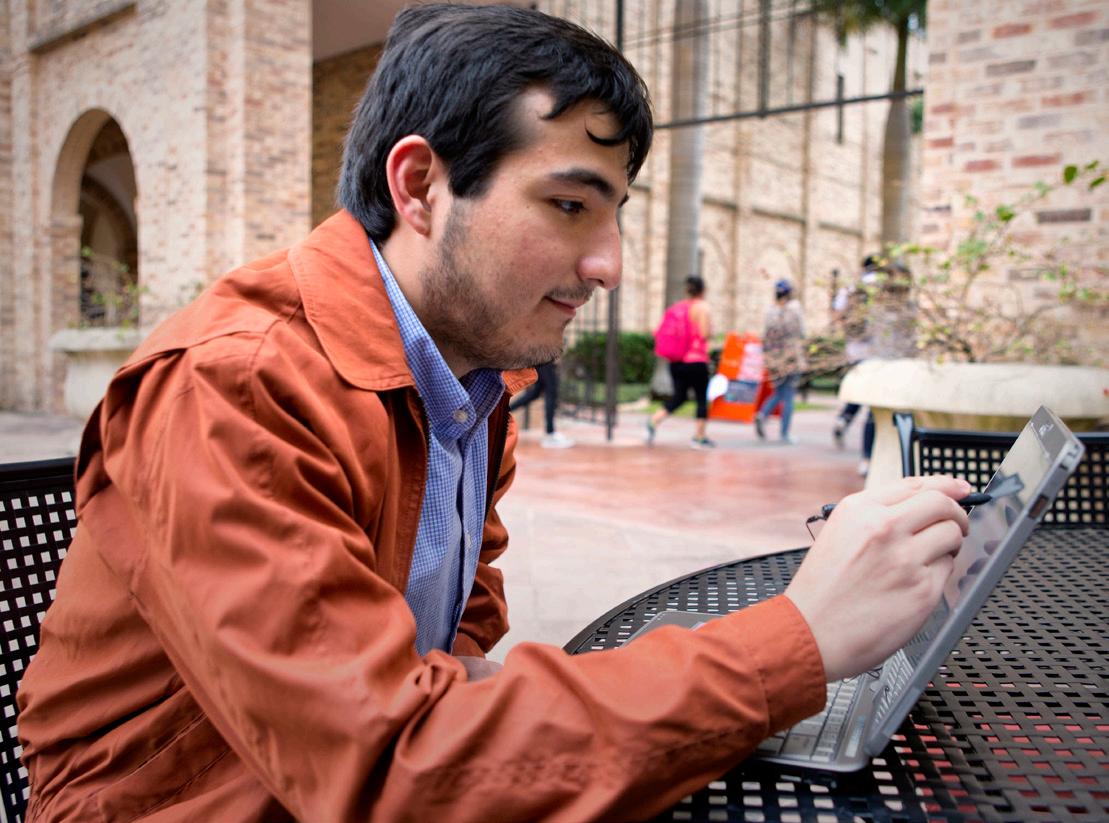
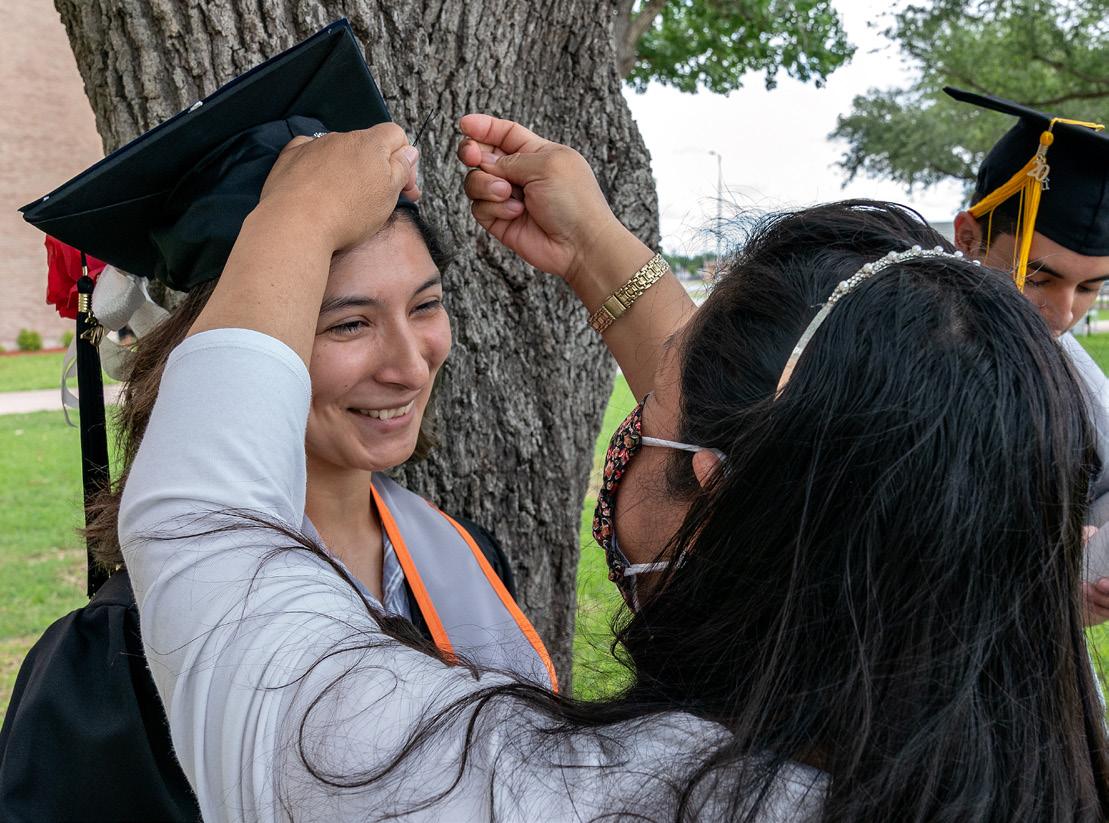
will receive a solid background in all sciences, but specific emphasis in environmental biology, chemistry, and geology. Also in the College of Science and Engineering, students can minor in Geographic Information Systems (GIS) and receive sustainability content, or they can minor in Environmental Studies from the College of Social and Behavioral Sciences. The College of Education is pursuing a graduate program in Psychology and Technology, with a concentration in Sustainability. The combination of educational research, teacher-training, and outreach to K-12 teachers in the Rio Grande Valley that is offered at UTRGV offers an opportunity to bring sustain-ability research to address the mission of service to the state of Texas and to show a developing interest in concepts of sustainability to the next generation of university students.
To move The University of Texas System toward its goal of leadership in the academic world of sustainability, UTRGV must develop an inte grated program of exceptional undergraduate and graduate education, research and creative activity, and community outreach that builds on the academic strengths of UTRGV while addressing opportunities for growth. The goals and strategies describe realistic initiatives that could help make this vision a reality. The following three goals can be accomplished with a modest increase in resources and academic focus, and will help provide critical guidance on sustainability-related education at UTRGV. This set of approaches can situate the university into the ranks of universities leading in this new academic arena.
The following courses have been identified as containing elements of sustainability, divided by college:
COLLEGE OF EDUCATION
EDUL 6369 Administrative Technology in Schools
EDUL 6398 Internship in Principalship
EDUL 6332 Instructional Support Programs and the Law
EDUL 7314 The Superintendency
EDUL 7315 Texas School Finance & Facilities Administration
EDUL 7319 Internship for the Superintendent
EDCI 3335 Teaching Science and Mathematics
EDCI 3334 Teaching Language Arts and Social Studies
EDSC 6326 Physical Sciences
EDSC 6326 Science in the Curriculum: Teaching Earth/Space Sciences
EDSC 6326 Science in the Curriculum: Teaching the Life Sciences
EDSC 6326 Science in the Curriculum: Teaching
the Nature of Science
EDBE 3315 Bilingual Curriculum in Content Areas Related Services
SPED 3324 Assistive Technology
EPSY 6318 Community and Environmental Health
HLTH 1352 Personal Health and Wellness
HLTH 2352 Growth, Development and Fitness
HLTH 2373 Nutrition and Health
HLTH 3372 Consumer Health
HLTH 3372 Principles of Public Health
HLTH 4353 Concepts in Physical Activity and Wellness
KIN 1101
COLLEGE OF ARTS AND HUMANITIES
ENG 1310 Reading & Vocabulary (based on readings selected by the students)
ENG 1320 Basic Writing
ENG 1301 Composition
ENG 1302 Rhetoric & Composition (becoming a conscientious citizen)
ENG 2300 Introduction to Literature
ENG 3320 Advanced Topics in English (environmental literature)
ENG 3305 The Romantic Period (Environmental Literature)
ENG 3337 Best American Science and Nature Writing
ENG 3333 Technical Report Writing
ENG 3336 Introduction to Creative Writing
ENG 6337 Creative Writing
ENG 6365 Romanticism
HIST 4397 American Environmental History
PHIL 2395 Environmental Ethics
COLLEGE OF BUSINESS ADMINISTRATION
ECON 2301 Principles of Macroeconomics
ECON 2302 Principles of Microeconomics
ECON 3343 Economics of the Government Sector
ECON 3353 International Trade
ECON 3354 Health Economics
ECON 3355 Economic Development
MANA 4364 Business and Society
MANA 4369 Strategic Management
MANA 4370 Project Management
INTB 3330 International Business
COLLEGE OF HEALTH SCIENCES AND HU-
MAN SERVICES
NURS 2301 Wellness
NURS 6310 Health Promotion
DIET 2351 Intro to Clinical Nutrition
DIET 3353 Advanced Nutrition
DIET 3357 Medical Nutrition Therapy I
DIET 3358 Medical Nutrition Therapy II
DIET 4455 Community Nutrition Practicum
SW 3333 Latino Mental Health
SW 4320 Social Work in Health Care
OCCT 6304 Systems Impacting Occupational Therapy
OCCT 6309 Health Illness & Disability
COLLEGE OF SCIENCE AND ENGINEERING
BIOL 2305 Environmental Biology
BIOL 3301 Biological Evolution
BIOL 3408 Plant Morphology
BIOL 3409 Ecology
BIOL 3410 A Survey of the Plant Kingdom
BIOL 4315 Inquiry-Based Science and Laboratory Techniques Disease
BIOL 4317 Epidemiology Ethnobotany
BIOL 4318 Advanced Topics in Ethnobotany
BIOL 4402 Marine Zoology
BIOL 4403 Introduction to Remote Sensing Technology
BIOL 4404 General Virology
BIOL 4406 Mycology
BIOL 4408 Plant Pathology
BIOL 4410 Marine Botany
BIOL 4411 Ecological Physiology of Animals
BIOL 4415 Entomology
BIOL 4416 Environmental Toxicology
BIOL 4420 Biotechnology
BIOL 4424 Microbial Ecology
BIOL 4426 Marine Ecology
GEOG 2313 Principles of Physical Geography
GEOL 1402 Historical Geology
GEOL 3308 Introduction to Geographic Information
GEOL 3310 Systems
GEOL 3403 Oceanography
GEOL 3404 Stratigraphy-Sedimentation
GEOL 4302 Environmental Geology
GEOL 4408 Applications of Geographic Information Systems
MANE Flexible and Agile Process

MANE Product Life Cycle Integrated Logistics
Support
MECE 4325 Composite Material Design
MECE 4326 Introduction to Ceramics Engineering
MECE 4329 Introduction of Nanotechnology
MECE 4360 Solar Energy
PHYS 3310 Radiation Biophysics
PSCI 3310 Planet Earth and its Place in the Solar System
PSCI 3408 Survey of Physical Science Local and Global
SCIE 4350 Environmental Science
SCIE 4370 Planet Earth and its Inhabitants
SCIE 4480 Applications of Chemistry and Physics
COLLEGE OF SOCIAL AND BEHAVIORAL SCIENCES
POLS 3317 Problems in Public Policy
POLS 3316 Public Policy
PUBA 6307 Politics of Scarcity and Ecology
PUBA 6363 Government and the Economy
CRIJ 4316 Environmental Crime and Justice
CRIJ 6313 Environmental Crime and Justice
CRIF 4362 Environmental Crime and Justice
SOCI 4380 Social Protest and Social Movements
ANTH 4385.02 Environmental Anthropology
ANTH 6385.02 Environmental Anthropology
Goal I:
• Increase number of UTRGV graduates who have developed a basic understanding of sustainability and are environmentally literate.
Strategies:
1. Analyze existing courses and curriculum in all disciplines to ascertain existing knowledge and content for sustainability.
2. Revise/refine existing course content to ensure integration of sustainability knowledge and content.
3. Incorporate literacy on environmental and sustainability issues into the educational program of all undergraduate students.
4. Create a web page that has information about how other campuses have integrated sustainability into their courses, departmental curriculum, and liberal arts requirements.
5. Offer ongoing faculty development opportunities that assist faculty from a wide range of disciplines in integrating sustainability into courses.
6. Encourage departments to add a sustainability component in the respective departmental curriculum.
7. Develop a faculty development program that encourages faculty to infuse sustainability into their teaching.
Goal II:
• Increase number of academic programs related to sustainability.
Strategies:
1. Develop a plan to hire new faculty in a broad range of disciplines with interest and expertise in sustainability.
2. Support academic program development
of student learning opportunities in areas related to sustainability.
3. Develop an undergraduate degree, or minor, or area of concentration in sustainability.
4. Develop an interdisciplinary Ph.D. minor or concentration in sustainability.
5. Develop a fellowship program to fund graduate and post-doctoral students in areas related to sustainability.
6. Develop a student sustainability scholarship award for exemplary under graduate and graduate research that focuses on sustainability.
Goal III:
• Develop and support programs that focus on research related to sustainability.
Strategies:
1. Develop interdepartmental and cross school affiliations among faculty who conduct research related to sustainability.
2. Develop mechanisms to assist faculty in obtaining external funding.
3. Develop incentives to foster interdisciplinary research collaborations.
4. Develop a mentoring program for junior faulty to support interdisciplinary and transformational sustainability related research.
5. Consider an interdisciplinary center that could support formal graduate programs and Ph.D. minors in sustainability.
Strengths
• Over 1000 courses in ten colleges with sus-tainability content offered at UTRGV;
• One undergraduate program offered, BS in Environmental Science, and two minors;
• Small number of dedicated faculty members willing to integrate the topic into their teaching.
Weaknesses
• Limited internal guidance for seeking funding for sustainability curriculum;
• Limited cooperation among administration for creation of new curriculum;
• Administrators need education on importance of sustainability in curriculum.
Opportunities
• Outside funding sources exist for new degree programs.
• College of Education working to establish graduate program in Psychology and Technology with a concentration in Sustainability.
• UTRGV can model programs in sustainability from other universities.
Threats
• Limited outside funding opportunities to support additional curriculum.
• Inability to hire new faculty members with expertise in sustainability.


Co- Curricular Education
Learning about sustainability can take place outside of the classroom. Events that raise awareness of sustainability can occur in the residence halls, Student Union, department meetings, faculty colleges, and many other places across campus. One of the best ways that UTRGV can ensure that students are aware of sustainability issues and able to tackle these complex problems when they enter the work force is to provide them with hands-on experience in sustainability.
Co-curricular programs provide opportunities for students to engage directly with the community through organized volunteer activity and student organizations. These programs facilitate direct application of classroom knowledge into practical settings, and increase a sense of citizenry. In this way cocurricular activities enhance critical thinking skills and cognitive complexity, and encourage student retention by providing a sense of community for the students. Service-learning includes a multidisciplinary application of coursework within and across fields toward sustainability-related problem-solving. Some of the benefits to service include a deeper understanding of theory learned in class, a developed sense of place and civic duty in students, and an empowered student population with skills as change agents who advance the university’s mission of providing service to the community, state, and nation. Moreover, co-curricular service cultivates interdisciplinary partnerships and allows faculty to simultaneously meet service and teaching goals.
Currently, there are approximately two hundred student organizations registered with the Student Government Association (SGA) at UTRGV, including an ad hoc committee called the Environmental Awareness Club (EAC). The

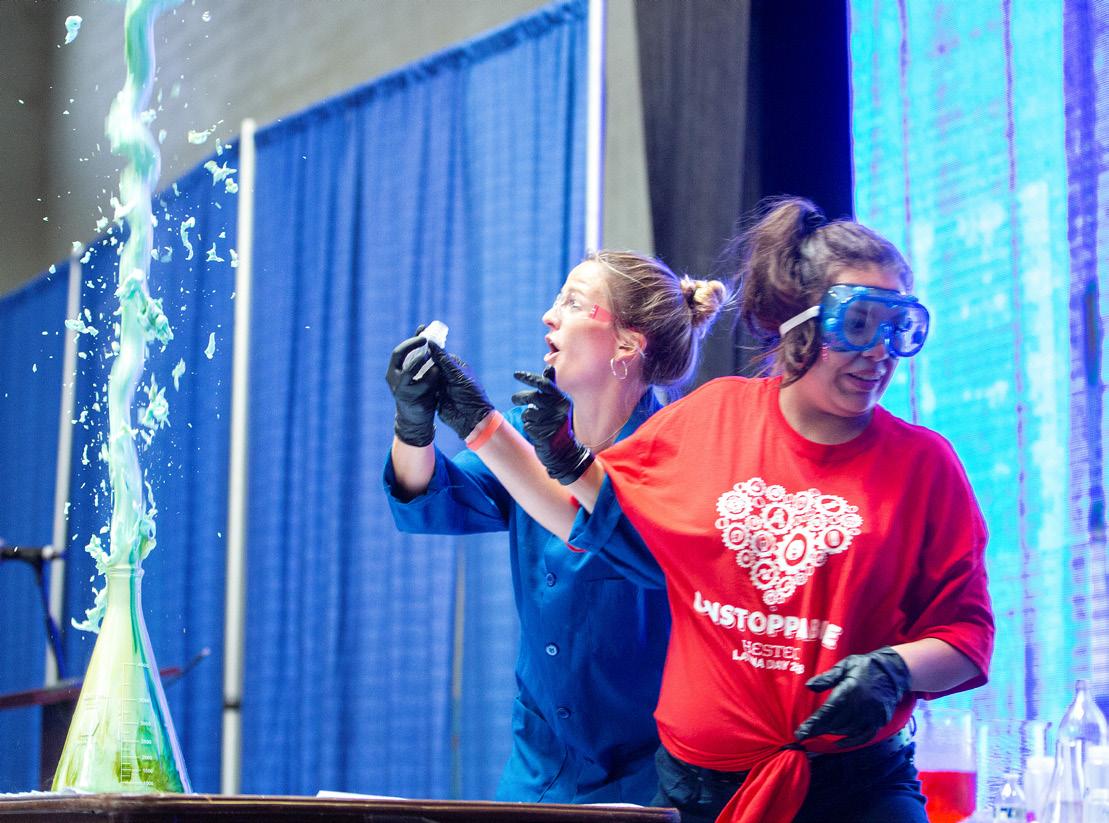
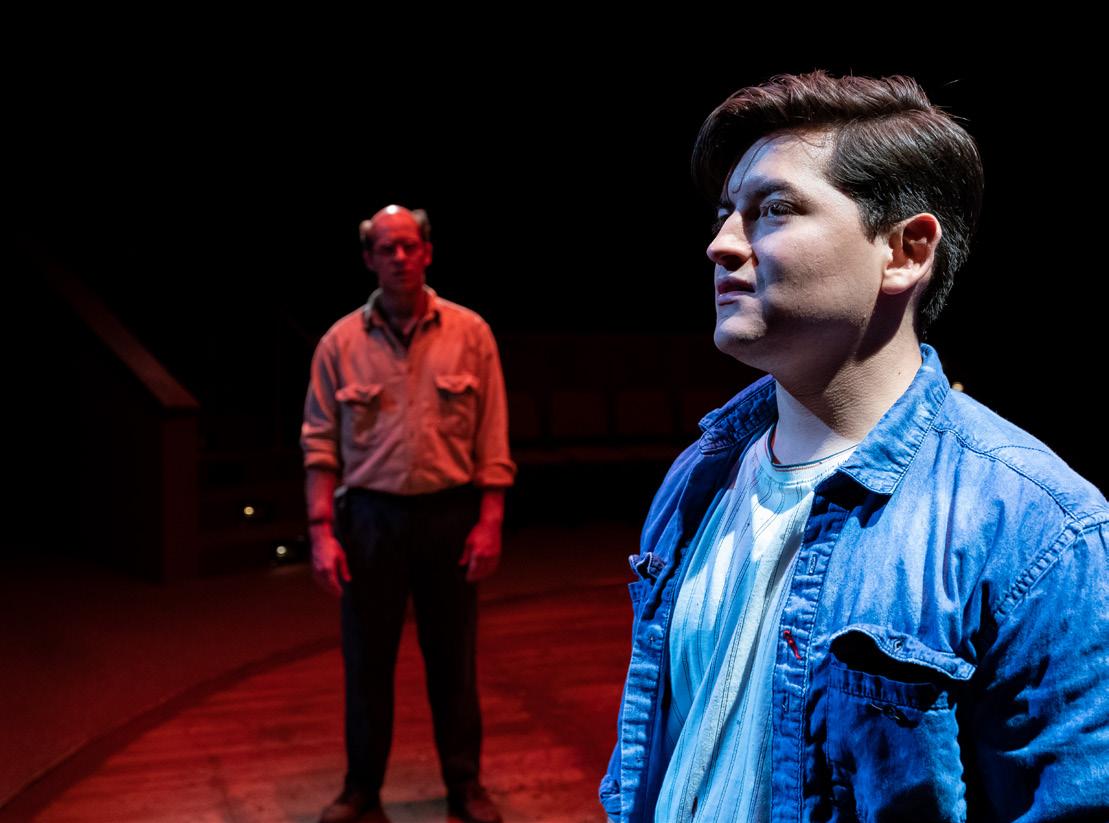
EAC student organization sponsors events and activities year-round with the university and community. Additionally, SGA has both ride/share and an environmental awareness survey on their website. The Student Union partners with SGA on the ride/share to save gas. The newly developed Eco-Reps project will provide a mechanism to energize and coordinate these student activities. In summary, the co-curricular education of the students holds tremendous value that can easily be phased in sustainability via staff and programs.
Resident Life, University Center, and Student Union currently practice the following initiatives:
• Require all residence hall community advisors to coordinate one sustainability program each year, providing them with models, contacts, and special funds for these events.
• Include sustainability in the first-year experience and orientation program.
• Integrate competitions focused on sustainability among campus groups and with other institutions.
• Sustainability programs in the residence halls such as reducing solid waste generated during move-in and move-out days.
• Save energy in Student Union by not turning on lights in certain areas on sunny days.
• Use bins from Student Life to collect plastic bags to take to Wal- Mart for recycling.
• Save water by putting plastic bottles filled with water in the bathroom toilet water tanks to displace water.
• Discontinue use of trays in cafeteria to save on water and energy for washing.
• Use air pump on campus for all students, staff, and faculty to use and properly inflate tires to save gas.
• Lend bikes to students.
• Provide recycling bins at student events.
• Have T-shirt giveaways for students to promote sustainability.
• Encourage reusable shopping bags.
• Recommend professors accept double-sided papers.
• Use text messaging system to notify students of events.
Future goals and strategies include the following:
Goal I:
Increase student awareness of sustainability and sustainable lifestyles through development of programs for students living in resident halls.
Strategies:
1. Develop sustainability programs for residence hall community advisors to coordinate, such as reducing solid waste generated during move-in and move-out days.
2. Cultivate close relationship with Academics and New Student Services to suggest including sustainability in first-year experience and orientation.
3. Integrate competitions focused on sustainability among campus groups and with other institutions, such as the EPA’s RecycleMania program.
4. Develop internship program specifically related to sustainability, including both on and off campus, to be coordinated with Career Services.
5. Develop campus-wide projects focused on sustainability and coordinated through the community.
6. Develop dynamic sustainability web service coordinator. These projects can include established community service programs such as “Make a Difference Day” and “United to Serve.” through the Office for Sustainability to instill awareness of responsibility as global citizens.
Goal II:
Increase collaboration and support of co-curricular educational activities that integrate sustainability among students, staff, and faculty members through promotional efforts.
Strategies:
1. Create a message of sustainability to be integrated into all university conference programs.
2. Promote plans for “greening the event” in all matters; i.e., recycling, dining/catering, communication, transportation, energy conservation, water conservation, etc.
3. Integrate sustainability as a part of planning conferences.
4. Increase visibility of sustainability by promoting Eco-speakers, Eco-films, and Earth Day activities.
5. Support interdisciplinary participation among faculty, staff, and students in environmental, social, and economic research related to sustainability.
6. Support problem solving, artistic expression, and communication related to sustainability among faculty, staff, and students.
Goal III:
Develop student leadership in sustainability with support of staff, faculty, and community members through training and activities.
Strategies:
1. Train residential staff to develop residence hall sustainability programs such as recycling and Eco-Reps Leader Program.
2. Assist Office for Sustainability with nominations of Student Green Heroes of the Month.
3. Promote sustainability practices among the university community through activities such as the Green Pledge, a Living Green Guide, recycling programs, and other projects.


Streghts
• One student organization entirely devoted to sustainability: Environmental Awareness Club.
• Committed group of Student Life administrators support sustainability.
• Vibrant student life at UTRGV is welcoming of sustainability issues.
Weaknesses
• Lack of awareness among students on how to support sustainability.
• Lack of infrastructure for mass transit outside of campus in larger Rio Grande Valley.
• Limited opportunities for involvement on campus to support sustainability outside classroom.
Opportunities
• Established opportunities for student involvement in sustainability issues in campus dormitory life.
• UTRGV’s environmental event, Earth Fest, will use student help for promotion.
• Leadership in Student Life understands and supports sustainability.
Threats
• Funding for establishing sustainability pro-grams in Student Life not guaranteed.
• South Texas culture lacks understanding or promotion of sustainability.
• Dormitories lose students to off-campus housing.


Health & Wellmess
The Wellness and Recreational Sports Complex (WRSC) continually strives to provide an exceptional environment of wellness and recreation in order to facilitate increased student involvement in the university community. This is accomplished through displaying integrity to all customers, colleagues, and associate;, excellent customer service; collaborative relationship with other departments and organizations in the university community; providing opportunities for student development and involvement; providing excellence in facilities, services, and programs; and continually exploring ways to exceed the expectations of the customers.
The WRSC has a total of 275,000 entries into the building, not including those individuals granted access for rentals, camps, special events, or tours. On average, the daily total is 753 entries over the entire 365-day calendar year. Aside from those daily visitors, the WRSC houses summer camps for 6-11 year old children. Enrollment for summer camps is 480; these camps provide daily activity classes in a variety of sports as well as promote healthy eating habits. The complex began a Learn-to-Swim program in 2010 for youth and adults, and serves approximately 250 individuals. The facility also hosts several end-of-the-year functions for local schools where approximately 4,000 children are exposed to the university environment through participation in activities and social functions. Finally, the complex houses roughly 50 special events annually that are typically open to the general public, with attendance that ranges from 20-200 participants. These numbers indicate the large volume of traffic participating in the WRSC. The complex offers a gym, pool, basketball courts, intramural sports, as well as exercise classes for students, staff, and fac-
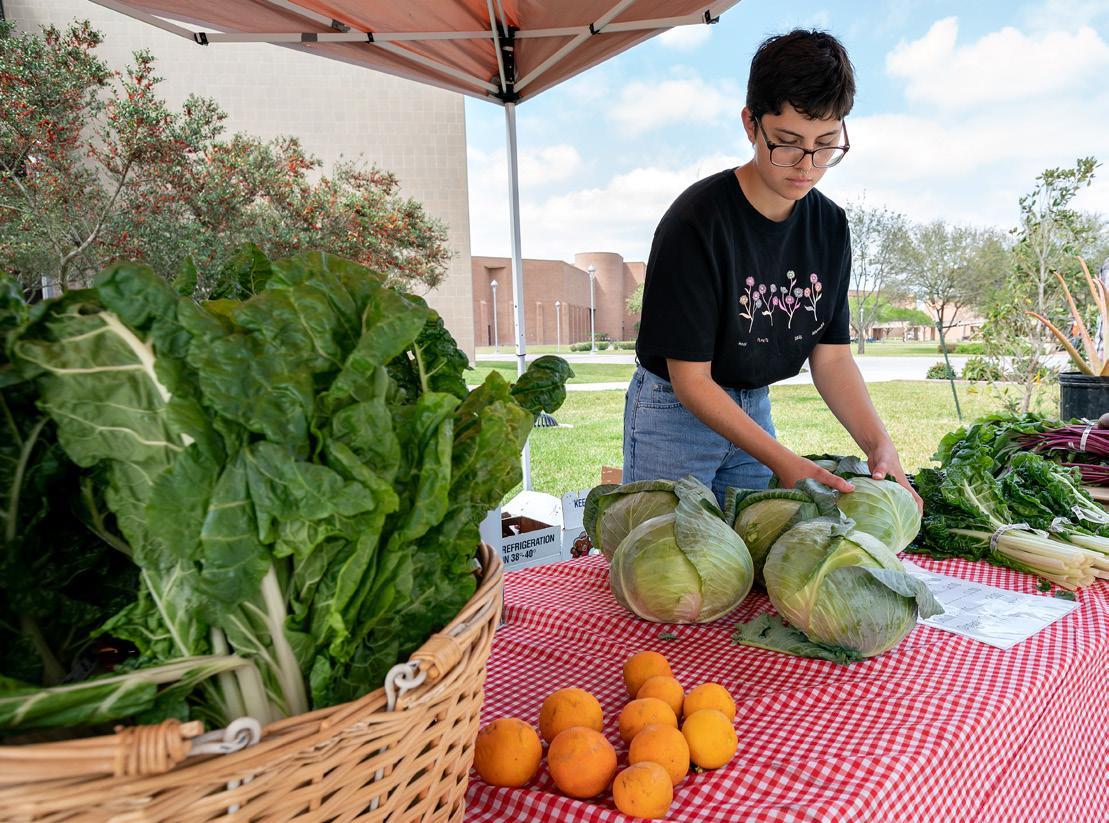


ulty members. Currently, summer camps and swim lessons that promote activity and a healthy lifestyle for elementary age children are available. These support sustainability by teaching healthy habits to young individuals, who will then incorporate those into their lifestyle. In order to have better future habits, the campus community must start with present routines. It is through initiatives such as these that UTRGV promotes a mind-set of living healthy and ties it to sustainability.
Despite the appeal of the WRSC, health and wellness continues to encounter challenges on campus. The rates of obesity and diabetes in the Rio South Texas region are some of the highest in the nation, and are currently at unsustainable levels. This health crisis is a result of many factors, including poverty, but can be reversed with the incorporation of the sustainability values. Public parks and community recreation centers not only promote physical activity, but also provide a social outlet for members of a community. If these centers are widely available to many members within a diverse demographic scale, then they can also promote social justice.
UTRGV has the challenging task of altering the mind-set of residents of the Rio South Texas region. The old wisdom that “a fat baby is a healthy baby” no longer applies to today’s society; indeed, even an overweight child increases the chance that he or she will develop Type II Diabetes. Instead, physical activity should be encouraged as early as possible, and UTRGV can promote this healthy mind-set with walking paths, bike lanes and racks, and easy access to sports facilities such as the WRSC.
Goal I:
Promote healthy and sustainable lifestyles for students, faculty, and staff by implementing programs that teach this lifestyle.
Strategies:
1. Create and implement programs that promote safe, fun exercise.
2. Create and implement summer camp programs for youth that promote sustainability in the program as well as encourage youth to exercise.
3. Participate in Edinburg’s annual Healthy Living Festival.
4. Market the “walkability/cyclability” of the UTRGV campus to prospective students, faculty and staff as a healthy alternative means of transportation and a way to maintain a healthy, active lifestyle.
5. Implement an educational program that emphasizes the physical, financial, social and
educational benefits of walking/cycling, whether on campus or commuting to campus.
6. Collaborate with surrounding communities to publish a map of walking/cycling routes with distances to popular destinations, etc.
7. Develop an outdoor activity program that promotes healthy/exercise based activities utilizing a variety of recreational opportunities in the greater Rio Grande Valley area.
Goal II & III:
Promote healthy and sustainable eating habits for students, faculty, and staff through incorporation of these topics into existing programs.
Promote healthy and sustainable eating habits for students, faculty, and staff by collaborating with other departments.
Strategies:
1. Promote the use of organic, locally grown, humanely grown, fair trade sustainable food.
2. Develop programs that educate students, faculty, staff and communities about sustainable food literacy.
3. Collaborate with Dining Services to promote organic, locally grown, humanely grown, and fair trade sustainable food.
4. Collaborate with various other departments to develop community gardening classes to include a demonstration garden for students, faculty, staff and communities to learn how to grow organic fruits and vegetables.
5. Incorporate the topic of healthy eating habits into our existing educational programs/seminars.
6. Incorporate the topic of healthy eating habits into our summer camp curriculum.
Goal IV:
Promote health and wellness in the community through partnerships with off-campus entities.
Strategies:
1. Partner with community Parks & Recreation Departments, World Birding Centers, Texas Parks & Wildlife and others to create nature summer camps and/or events.
2. Incorporate programs into summer camps for children that promote healthy lifestyles to include eating and exercising.
3. Continue to collaborate with surrounding communities to develop/encourage alternative modes of transportation to and from campus.
4. Cooperate with surrounding communities and organizations in efforts to promote health and wellness (health fairs, special events, etc.).

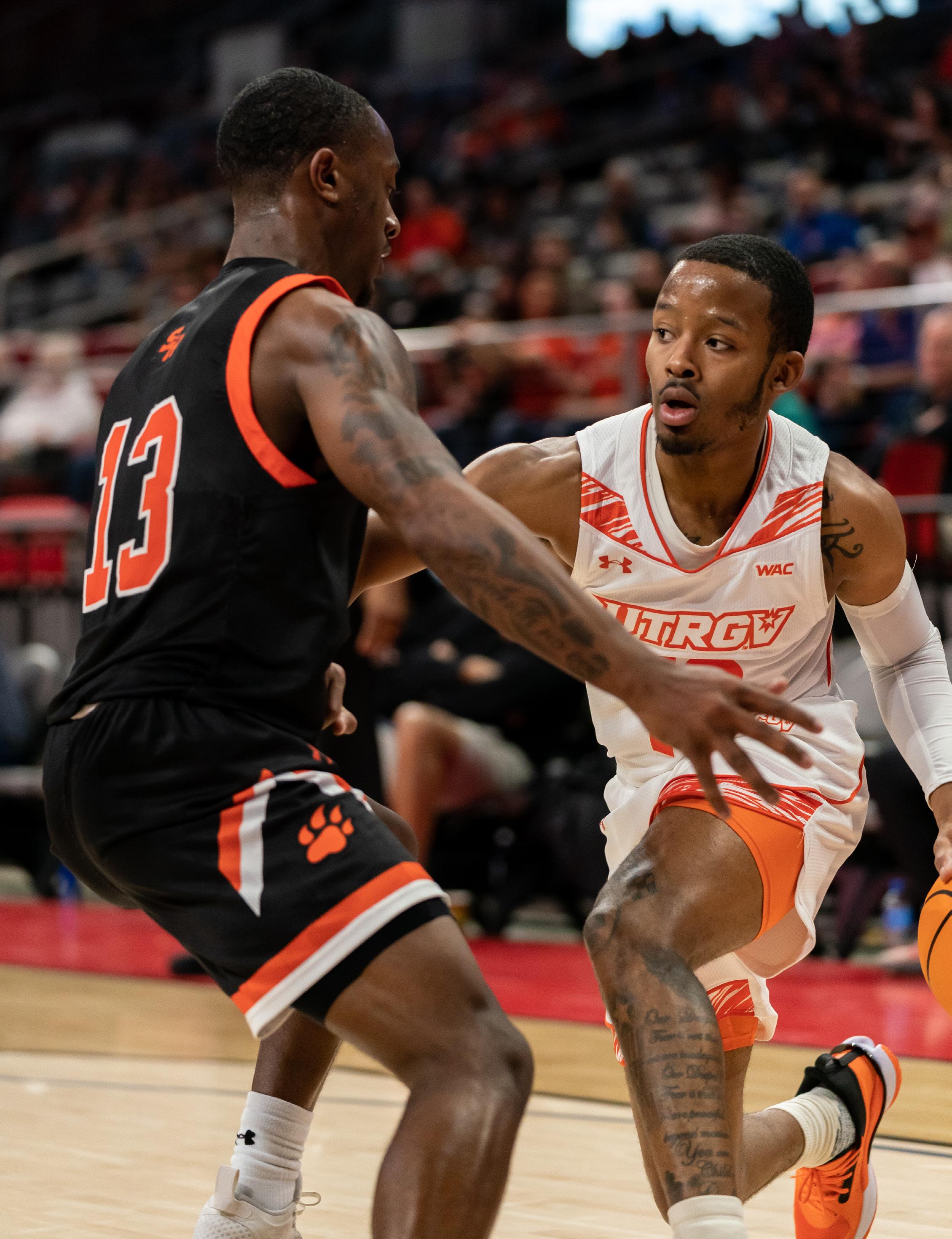
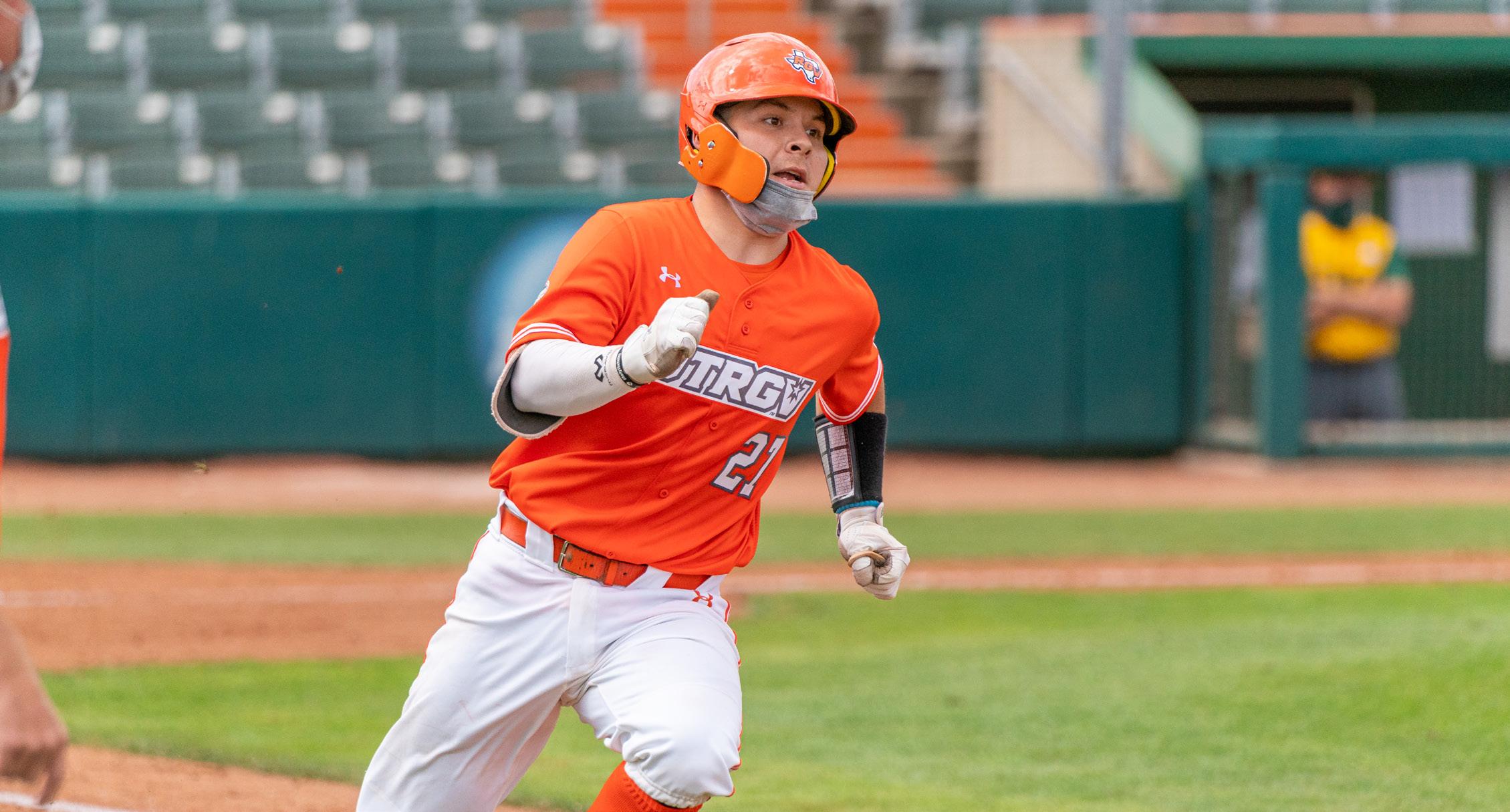
Athletics
Athletic departments have unique sustainability opportunities. Universities across the country are recognizing that by developing a comprehensive sustainability program in the athletic department, they can leverage the strong brand power, visibility, and influence of their intercollegiate sports programs and make meaningful environmental improvements. Athletic departments can greatly benefit from collaborative sustainability initiatives with student-athletes, teams and the increasingly environmentally-aware student body. Athletic teams and programs are an integral part of the UTRGV community. As visibility of their events grows, opportunities for promotion of sustainability also increase. UTRGV athletics includes basketball, track and field, cross country, tennis, golf, and the baseball and volleyball teams. The competition, travel, and purchase of team products all offer chances for UTRGV athletic teams to support sustainability to sport fans across the region, state, and county.
Goal I:
Develop a sustainability program for Athletics that will offer short- and long-term suggestions for improvements in operations and practices throughout the program.



Strategies:
1. Establish a sustainability slogan for promotional purposes. For example, “Bleed Orange, Go Green.”
2. Establish a set of green standards for UTRGV athletic events that reflect best practices researched at other institutions.
3. Cultivate revenue opportunities for athletic department sustainability initiatives such as green programs and green advertising. This can happen through specific fundraising, development, and corporate sponsorship.
4. Access ways to improve the environmental performance of existing buildings by conducting facilities audits by the department of environmental health and safety (DEHS).
Goal II:
Increase UTRGV community knowledge about sustainability through athletic events. This goal can be measured through execution of specific marketing efforts and educational programs.
Strategies:
• Promote and market “greening” of athletic events.
• Use athletic events to help educate and promote sustainability to students, faculty, staff and the general community.
• Create and foster a “team spirit” to sustainability practices to get students, faculty, staff and alumni excited about being green.
• Implement collaborative efforts with Student-Athlete Advisory Committee and Student Sports Marketing Academy, including creating sustainability programs with each varsity team.
• Encourage and invite campus environmental groups to set up educational booths during games to highlight other on-campus sustainability efforts.
• Integrate and cooperate with various UTRGV departments that affect various programs such as recycling, vendor waste reduction, etc.
Streghts
• Director is eager to support sustainability efforts.
• Commitment to sustainability evident in practices by athletic department.
• Strong desire to promote sustainability in Athletics.
Weaknesses
• Lack of understanding among campus community and public of relationship between sustainability and athletics.
• Limited products made in sustainable manner.
• Costs for changing to sustainability products very high.
Opportunities
• High visibility of athletics offers ample opportunity for promotion of sustainability.
• Travel schedule presents opportunity for supporting sustainable transportation, lodging, and dining.
• Funding available for uniform and equipment that supports sustainability.
Threats
• Funding for sustainability dependent on availability.
• Limited opportunities for improving practices in area of sustainability.
• Prohibitive costs for supporting sustainable travel arrangements.
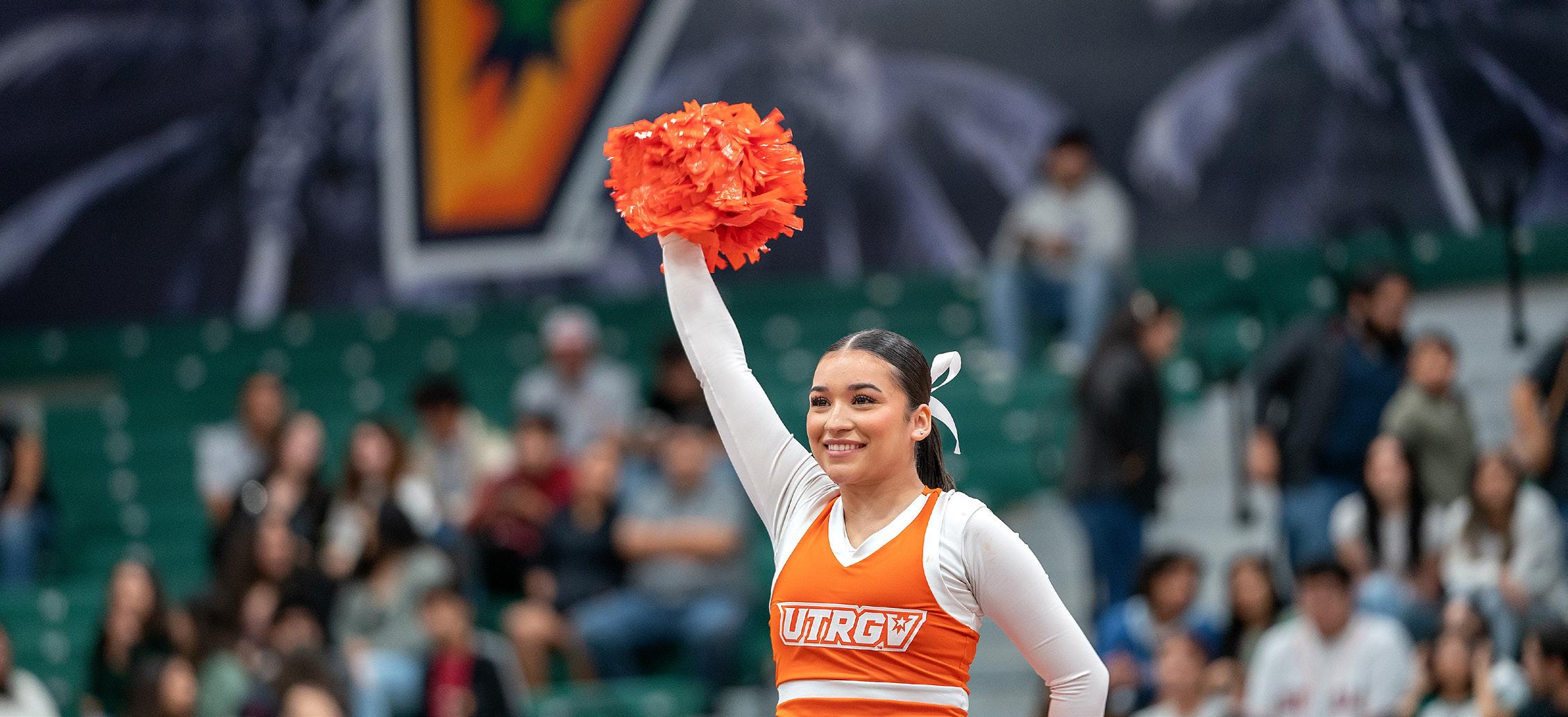



Operations


Energy Conservation
According to the Midwest Buildings Technology Application Center located at The University of Illinois— Chicago, university buildings account for almost 60% of all energy consumption through heating, cooling, and lighting systems. Buildings can become more efficient by improving the building envelope, adding insulation to walls and roofs, changing lighting, upgrading HVAC systems, and retro-commissioning existing heating and cooling systems. Sustainable energy sources are those whose stock is rapidly replenished by natural processes and not expected to be depleted within the lifetime of the human species. Sustainable energy sources do not involve combustion of fossil fuel and therefore do not contribute directly to global warming or other degra-dation of the environment. They also avoid the use of nuclear fuels, and usually avoid direct production of toxic wastes. Sustainable energy technologies vary greatly in terms of embodied energy used and pollution emitted in building and maintaining equipment, or in the production of biofuels. Thus institutions need to proceed with caution and thorough studies before adopting and choosing amongst these new technologies.
Promoting energy awareness on campus can take the form of completing an energy audit, creating an inventory of campus greenhouse gas (GHG) emissions, developing targets to reduce those emissions, and proposing a timeline to achieve carbon-neutrality. To plan for future development of the campus and support the proposed facilities master plan, we recommend the development and implementation of an integrated energy master plan that focuses on reducing energy waste, maximizing the practical use of renewable energy, exploring the use of biofuels, and optimizing the efficiency of UTRGV’s energy production and distribu-

tion facilities. Upon completion of the energy audit (GHG inventory), UTRGV can implement project identified in the energy master plan to strategically reduce GHG emission. Energy consumption in the United States, according to the 2006 U.S. Department of Energy Buildings Energy Data Book, is largely fossil-fuel based. This consumption accounts for nearly 100% of all building heating, transportation, and industrial energy. In burning these fossil fuels, carbon dioxide is released, trapping heat in the Earth’s atmosphere resulting in the “greenhouse effect.” While debate over the extent of the problem continues, many Fortune 500 companies such as Ford and Wal-Mart are taking steps to educate their work force as well as consumers about reducing carbon dioxide and other greenhouse gases. In our homes, energy consumption can be reduced through the use of energy efficient appliances; there is a general lack of knowledge, however, on alternative technologies such as solar panels, geothermal, photovoltaic solar heat, and wind turbine systems.
One aspect of life in the developed world is a reliance on electrical energy characterized by extremely high levels of electricity energy consumption, as compared to developing countries. The majority of electrical power generated in the United States is from burning fossil fuels, such as coal, natural gas and oil, to create electrical energy. The bi-products of combustion process are indisputably linked to the growing problems of air pollution and global climate change. Another significant fraction of electricity is generated by nuclear power plants, with growing, unmet needs for proper disposal of nuclear waste. While a shift to sustainable sources of energy will eventually mitigate some of these problems, immediate efforts can also be taken to reduce the consumption of electricity.
At UTRGV, energy savings starts at the design phase of each new building construction or renovation. For example, all new buildings are designed and built to meet or exceed energy code standards. Items such as energy-efficient lighting systems and energy-efficient cooling and heating systems are evaluated for compliance with American Society of Heating, Refrigeration and Air Conditioning Engineers (ASHRAE) 90.1 entitled Energy Standard for Buildings Except Low-Rise Residential Buildings. The purpose of this standard is to provide minimum requirements for the energy-efficient design of buildings including minimum energy-efficient requirements for the design and construction, upgrades of new systems and equipment in existing buildings and criteria for determining compli-ance with these requirements. This can include basic energy efficiency requirements that must be met for the building envelope, HVAC (heating ventilation and air conditioning), lighting, etc. For each project, a sim-plified costbenefit analysis of natural gas vs. electric heating systems will be conducted
for maximum efficiency, based on prior building electrical consumption.
UTRGV’s Thermal Energy Plant (TEP) and Maintenance and Operations (M&O) jointly manage the various electricity-consuming equipment on campus. At the TEP, personnel operate the large chillers that supply chill water to various buildings as well as the institutions energy management system. This state-of-the-art system allows operators to monitor room conditions (temperature and humidity) and adjust the temperature of a room or auditorium, thereby reducing energy costs. Electronic technicians at the TEP maintain and calibrate the various controls. Plant personnel are constantly provided training and development to improve operating, monitoring, and control, and plans are in place to install software designed to optimize the operation of the institution’s chillers.
M&O plays an integral part of energy management specifically when maintaining or operating the institutions HVAC related equipment to its peak efficiency. There is a myriad of equipment that if not maintained, installed or operated correctly can increase energy costs significantly. One example of where energy costs are saved dramatically is through M&O’s coil cleaning program. The chill water coils, in the 200+ air handlers located across campus, are used to cool the air that is distributed through the buildings. Improper maintenance of filters can also result in increased energy costs. The M&O group routinely inspects and replaces filters prior to them becoming loaded and less efficient.
The TEP and M&O groups have implemented and have several projects in the pipeline designed to improve energy efficiency and reduce energy costs, and have recently entered into an agreement with an engineering management firm to conduct an energy audit of various campus buildings to identify inefficiencies that can increase the institutions energy costs.
One major project includes the metering of all buildings on campus so that energy consumption per building can be derived. In addition to establishing baseline data for comparisons between buildings and general consumption trends, charge backs to departments in the respective buildings should promote energy conservation on the user side. Evaluation of the data derived from monitoring of the institution’s TEP, the largest consumer of electricity on campus, will be used to optimize chiller usage for greater energy efficiency. Lighting retrofits conducted in the Health and Physical Education, Health and Physical Education II, Administration Building, Social and Behavioral Sciences, and the Communications Arts and Sciences buildings have the potential to reduce energy costs associated with lighting by roughly 3040% by simply replacing the equipment with more energy efficient ballast and bulbs. Other major projects include the systematic replacement of older energy management con-
trols and sensors with more efficient and more accurate controls. A one degree difference between actual and measured temperature in a thermostat, for example, can result in an increase of $6000 on an annual basis. The replacement of constant velocity pumps and drives with variable frequency pumps and drive can also result in significant cost savings over the life of the building because the equipment operates on the load rather than a constant peak RPM’s. More energy efficient chillers are planned for installation at the ITT and Haggar facilities. The current vending machine contract included the installation of vending misers in all of the vending machines which shuts off the refrigeration in the machine at night or when it is not being utilized. UTRGV is committed to further reducing its energy consumption, as the following goals and strategies indicate.
Goal I:
Reduce energy use from 2010 levels by 20% with the following strategies.
Strategies:
1. Install sub-meters in order to analyze and identify campus facilities with the highest electrical energy consumption per square foot, and make recommendations to reduce the energy consumption.
2. Identify and promote programs on ways to reduce energy in the work place; i.e., power down computer and monitor when not in use, print on both sides of paper, use power strips to operate appliances and turn off when not in use (phantom power), use alternative transportation when traveling on campus, turn off lights when not using a room.
3. Reduce demand for heating and cooling by improving building envelopes.
4. Reduce losses in heating and cooling distribution system piping via leak detection and investment in regular inspection, maintenance and insulation.
5. Maximize efficiency of UTRGVs thermal energy plant.
6. Develop renewable energy sources for select locations based on prudent and cost-effective application of technology such as solar water heating for new and renovated residential facilities, as well as photovoltaic and wind-generated power technologies.
Strategies:
7. Support designs that are durable, long lasting, and easy to disassemble for material reuse.
Future Strategies:
8. Provide facility electrical usage feedback and education to all campus users.
9. Consolidate classroom usage to the most energy-efficient buildings that meet course requirements during low usage periods.
10. Permanently reduce light levels in hallways/ corridors of all building by as much as 20%.
11. Collaborate with scheduling and other divisions for more effective utilization of facilities.
The following strategies are ongoing to achieve Goal I:
12. Review, verify, and update campus audit data (electrical and natural gas consumption).
13. Collaborate with Purchasing to specify LED/ CFLs for lighting use.
14. Collaborate with Purchasing to specify energy-efficient appliances and items such as Energy Start rated appliances.
15. Incorporate strategies for maximizing the efficiency of UTRGV’s thermal energy plant to accommodate new campus development.
Goal II:
Minimize the growth of future energy needs by utilizing sustainable buildings in new construction, renovation, and maintenance.
Ongoing Strategies to achieve
Goal II:
1. Specify all new buildings to follow Leadership in Energy and Environmental Design (LEED) guidelines.
2. Specify all new buildings to be built to meet or exceed energy code standards.
3. Incorporate all new UTRGV buildings into the Thermal Energy Plant’s energy management system.
4. Evaluate project renovations and new building constructions items such as energy- efficient lighting systems, and energy-efficient cooling and heating systems.
5. Include energy efficient methods in replacement/maintenance policies and procedures (i.e., energy efficient windows, green roofs, convert/replace energy inefficient facility HVAC systems, insulation).
6. Develop and use renewable energy sources, such as solar and wind, for alternative energy needs to power buildings, machinery, vehicles. (Could be as simple as an on-demand water
heater to solar powered water heater.)
Goal III:
Create a 50% carbon neutral campus by 2030 with the following strategies and timeline.
Strategies:
1. Identify, assess, and incorporate biomass, bio fuels, solar power and carbon capture/ sequestration on campus while purchasing wind power or other renewable energy credits (REC’s) from distant locations.
2. Move toward carbon neutrality by reducing the GHG emission rate at the following schedule:
a. 10% in five years, with major conservation, supplemented by REC’s.
b. 20% in 10 years, using all technologies, but only moderate use of REC’s.
c. 50% in 20 years, using all technologies, but only moderate use of REC’s.
Streghts
• Conducting energy audit.
• Lowered electric costs from energy efficient refurbishing projects and equipment purchases.
• Commitment to following LEED guidelines.
Opportunities
• Outside funding sources for development of alternative, renewable energy.
• Federal grants and rebates available for making energy efficient changes.
• New and less expensive renewable energy choices are being developed and brought to market, thus becoming available to universities.
Weaknesses
• Metering of buildings is limited and expensive to start.
• Lack of building automation system to allow for overall management of campus facilities to include scheduling.
• Budget constraints limit full implementation of energy conservation technology.
Threats
• Initial investment costs high.
• LEED guidelines are more expensive to implement.
• Resistance to “think outside the box” university-wide on carbon neutrality issues and cost benefits.



Facilities
A dramatic shift has occurred in the United States over the last fifteen years with regard to building construction. Energy use by industry has declined despite the increase of energy used by buildings and transportation, with buildings consuming some 40% of all energy used in the country. Table 1, from the Department of Energy (DOE) Buildings Energy Databook 2006, shows the percentage of energy consumption distributed to buildings, industry, and transportation historically since 1990 through 2004, and estimated trends through the next two decades.
Table 1: Building Share of US Primary Energy Consumption
Activity in buildings consumes 71% of energy generated in the United States and 79% of all electric expenditures, according to the DOE Buildings Energy Databook 2006. This suggests that a serious attempt to reduce CO² produced by a campus must focus on the reduction of electricity use in buildings. It is particularly important to notice that “internal gains” (people, lighting, and appliances in buildings) contribute up to 27% of the cooling load in both commercial buildings and homes. To the extent that the cooling load is electric, a reduction of electric use in buildings is twice as effective.
A significant strain on the U.S. electrical grid comes from lighting, which accounts for 20% of the total electric output. At this time, lighting uses more energy than cooling in the residential sector, as a national average, underscoring the importance of innovative lighting technologies and the elimination of incandescent lamps.
Table 2 indicates the impact of electric production on CO² emissions is seen in Table 2 from the DOE Buildings Energy Databook 2006 that shows the historical CO² emissions since 1990 through 2004, and future trends of CO² emissions based on the forecasts of electricity consumption through the next two decades. The energy used to produce electricity for U.S. buildings alone results in carbon dioxide emissions (608 million metric tons of carbon) approximately equal the combined total emissions of Japan, France, and the United Kingdom. By building upon the current design guidelines and providing standards for more sustainable features in new and renovation projects, all new construction and renovation of existing buildings will become high-performance facilities that reduce energy consumption, enhance occupant comfort, and preserve the rich heritage of UTRGV.
Table 2: Carbon Dioxide Emission for
The United States Green Building Council developed the Leadership in Energy and Environmental Design (LEED) Green Building Rating System to provide a reliable building design and performance measurement tool for building owners and operators. LEED provides a complete framework for meeting sustainability goals and assessing building performance in six categories: Sustainable Sites; Water Efficiency; Energy and Atmosphere; Materials and Resources; Indoor Environmental Quality; Innovation and Design Process. Four progressive levels of LEED certification – Certified, Silver, Gold, and Platinum – can be achieved based on the number of points awarded to a building project. Certain prerequisites must be achieved in order to qualify for certification. Currently, there are over 1,000 certified buildings and 7,300 registered buildings in the United States. Over 280 of these projects are in the Higher Education category. LEED recognizes achievements and promotes expertise in green building design and construction through a comprehensive system offering project certification, professional accreditation, training, and resources. UTRGV should move as quickly as possible to adopt LEED standards as the minimum design standards for new buildings and major renovations on the campus. Incorporating LEED guidelines shows an institutional commitment to environmental stewardship. At this time UTRGV has two LEED accredited professionals (AP) on staff and is providing training and development to facilities projects managers to achieve accreditation in the near future. According to a study submitted by Steven Winter Associ-ates to the General Services Administration (GSA) in October 2004, the premium to build a LEED-Silver building ranged from 2.5% to 4%. The study also concluded that, depending on the design solution, market con-ditions, and other contingency factors, a LEED rating could potentially be achieved within a standard GSA budget without the premium. Careful at-tention to the details of design, nclusion of all potential stakeholders early in the process, and a dedicated green building allowance in the budget will guarantee a successful LEED project.
Issues of sustainability in the built environment are intertwined with architectural integrity and preservation. The impression UTRGV makes on the community is
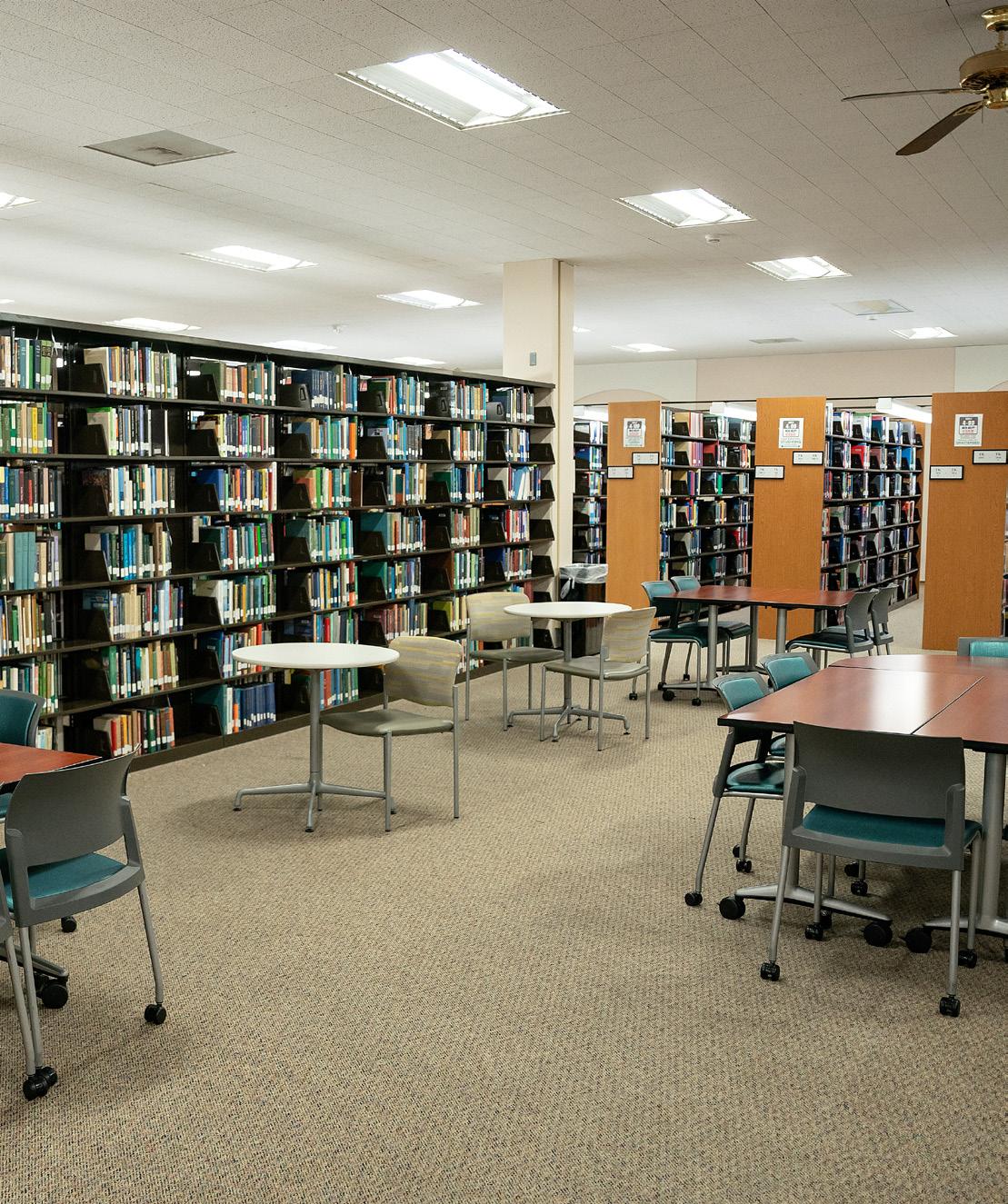

connected to constructed and natural factors. Through the establishment of guidelines for maintaining the character of campus buildings, in tandem with ensuring that historic buildings are safe, functional, and energy efficient, UTRGV can promote sustainability aware-ness. The development of site-specific metering and monitoring systems that alert users to energy consumption and provide data for informed decision making, as well as the promotion of greenbuilding concepts in commissioning and retro-commissioning of buildings, are ways that the university can support sustainability.
Construction and renovation projects impact campus sustainability in numerous ways. While the work is occurring, the university is responsible for causing major increases in the use of materials, energy used by construction equipment, air pollution from equipment, disturbance of soils, as well as sediment runoff to local waterways and generation of solid waste. Decisions made in the design and construction phases strongly affect these impacts, and continue to affect the energy and maintenance costs of the building throughout its lifetime.
Our objective at UTRGV is to utilize energyefficient and sustainable design standards on all new construction and applicable renovation projects and strive to meet or exceed a LEED silver level of sustainability. The Starr County Upper Level Center (SCULC), while not obtaining LEED certifica-tion, has followed as many LEED guidelines as possible in constructing the building. The projected savings of $349, 777 is to occur over 30 years. The project site has tightly designed Limits of Construction and the parking lot was detailed with consideration for low-emitting and fuel-efficient vehicles. All exterior light fixtures were specified to comply with International DarkSky Association (IDA) standards, and all landscaping was designed to be water efficient. The HVAC system for chilling water provides greater efficiency and lower KW/ton, and the power-smith transformers are more efficient. The mechanical system has been designed to provide optimized energy performance with enhanced refrigerant management. The original project budget was supplemented during the course of the project, to accommodate a highly efficient four pipe mechanical system that will provide efficient cooling in the challenging climate of South Texas. This investment expresses the University’s commitment to longterm energy management, and it allowed the design team to efficiently coordinate this critical energy system.
Other examples of sustainability initiatives include the campus shuttle bus route use/expansion. UTRGV is cur-rently designing additional drop-off and pick-up points throughout campus, with expanded traffic lanes for commis-sion traffic engineers to conduct a feasibility study. In the University Center HVAC Replacement project, all boilers in the building were removed and VAV boxes were
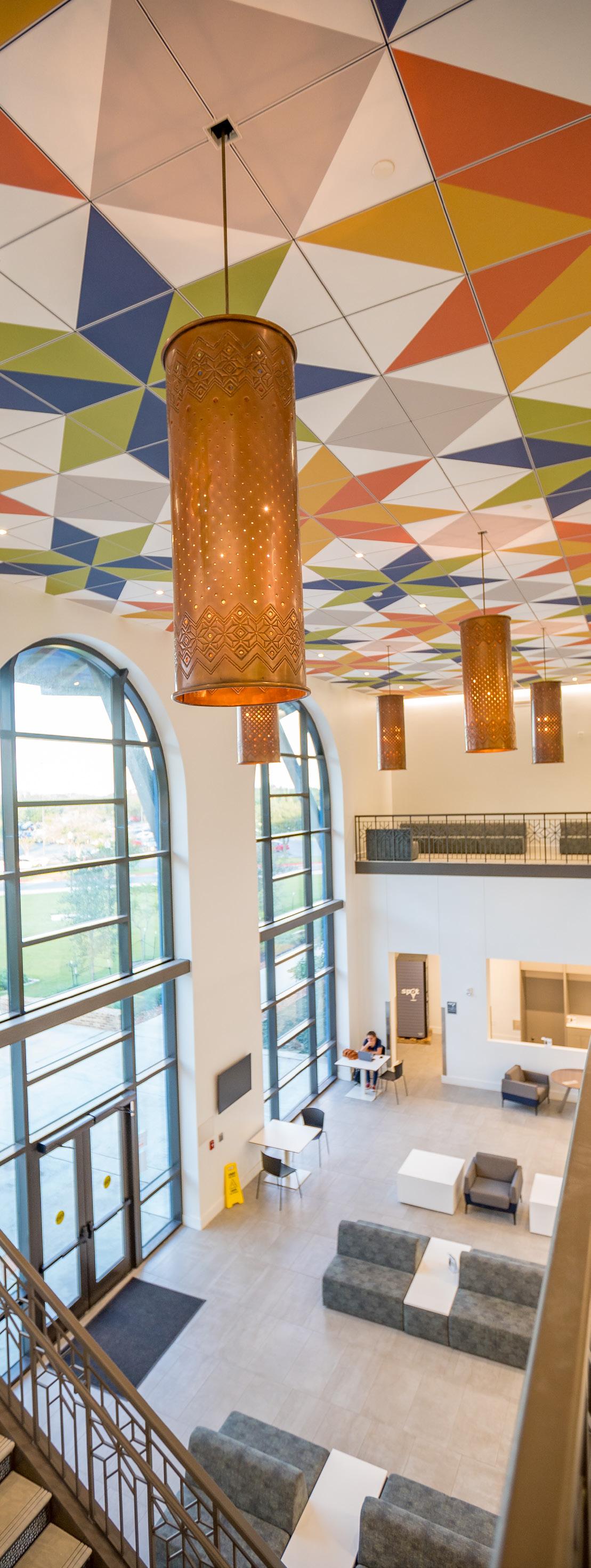
installed, which are more energy efficient.
Additionally, wind turbines are being designed at the Coastal Studies Lab at South Padre Island to provide partial power to building. Roofing replacement/improvements is implementing a preventative maintenance program through warranty that uses best practices in the roofing industry, such as providing regular roof inspections: monthly, quarterly, or biannually. ASB Renovation for the Civil Engineering Department is resurfacing and polishing the existing concrete floor in lab areas in lieu of installing new flooring.
Goals I & II:
Integrate the Facilities section of the Sustainability Campus Action Plan with the Campus Master Plan. This goal will be measured by the Master Plan Update (CMP).
Apply sustainable measures by following LEED guidelines to all new construction as well as renovation, remodeling, and infrastructure improvement projects.
Strategies:
1. Install utility metering for electricity, water, and chill water on each project, adhering to the maxim: “You cannot manage what you do not measure.”
2. Ensure project budgets include necessary resources and budget needed to integrate sustainability requirements as established by the State Energy Conservation Office (SECO).
3. Make life cycle cost analysis standard practice, reognizing the importance of long-term operations, maintenance, and total cost of ownership of facilities.
4. Utilize life cycle analysis in materials and equipment selection for all projects.
5. Utilize energy efficient and sustainable design standards on all new construction projects, meeting or exceeding LEED Silver (or similar) guidelines. The energy-efficient design and construction principles of ASHRAE 90.1 as established by the SECO will apply, as a minimum.
6. Implement sustainable measures and equipment as appropriate.
Goal III:
Reduce construction waste by 25% via collaboration and open communication with entities involved in project.
Strategies:
1. Request data on construction waste from individual or entity responsible.
2. Salvage, recycle, and reuse materials and equipment as appropriate to support goal.
Goal IV:
Coordinate Facilities, Planning & Construction sustainable practices with other related local and regional entities and departments. This goal will be measured annually or biannually, through documentation of procedures.
Strategies:
1. Conduct coordination meetings with Maintenance & Operations, Environmental Health & Safety, and UTRGV Police Department.
2. Prepare “Lesson Learned” document, which will discuss successes and failures in our sustainability efforts.
3. Develop and maintain sufficient outreach efforts to educate community on sustainability Lessons Learned.
4. Participate in the performance contract audit to acquire and use sufficient energy data to make Facilities sustainable efforts, planning, and decision making understandable to community.
5. Use Energy Utilization Index (EUI) as metric to gauge reductions in GHG and gains in energy efficiency. The EUI is the amount of energy consumed per square foot per year in a building measured in British Thermal Units (BTUs). An EUI baseline will be established for each building and building type at UTRGV.
Streghts
• Some initiatives on energy conservation have been implemented in remodeling.
• Commitment to follow LEED guidelines for new construction.
• Working with vendor partners to better understand the economic, social and environmental impact of each product purchased.
Opportunities
• Outside funding sources for development of LEED certified facilities.
• Federal grants and rebates for retrofitting energy efficient facilities;
• Developing real and focused maintenance practices that maximize asset lifespan.
Weaknesses
• Budget constraints limit full implementation of LEED guidelines.
• Budget constraints limit full implementation of new and renewable building technology.
• Lack of cohesive integration of base conservation initiatives.
Threats
• Initial investment costs high;
• LEED guidelines are more expensive to implement;
• Resistance by the university, systemwide, to “think outside the box” on carbon neutrality issues and cost benefits.
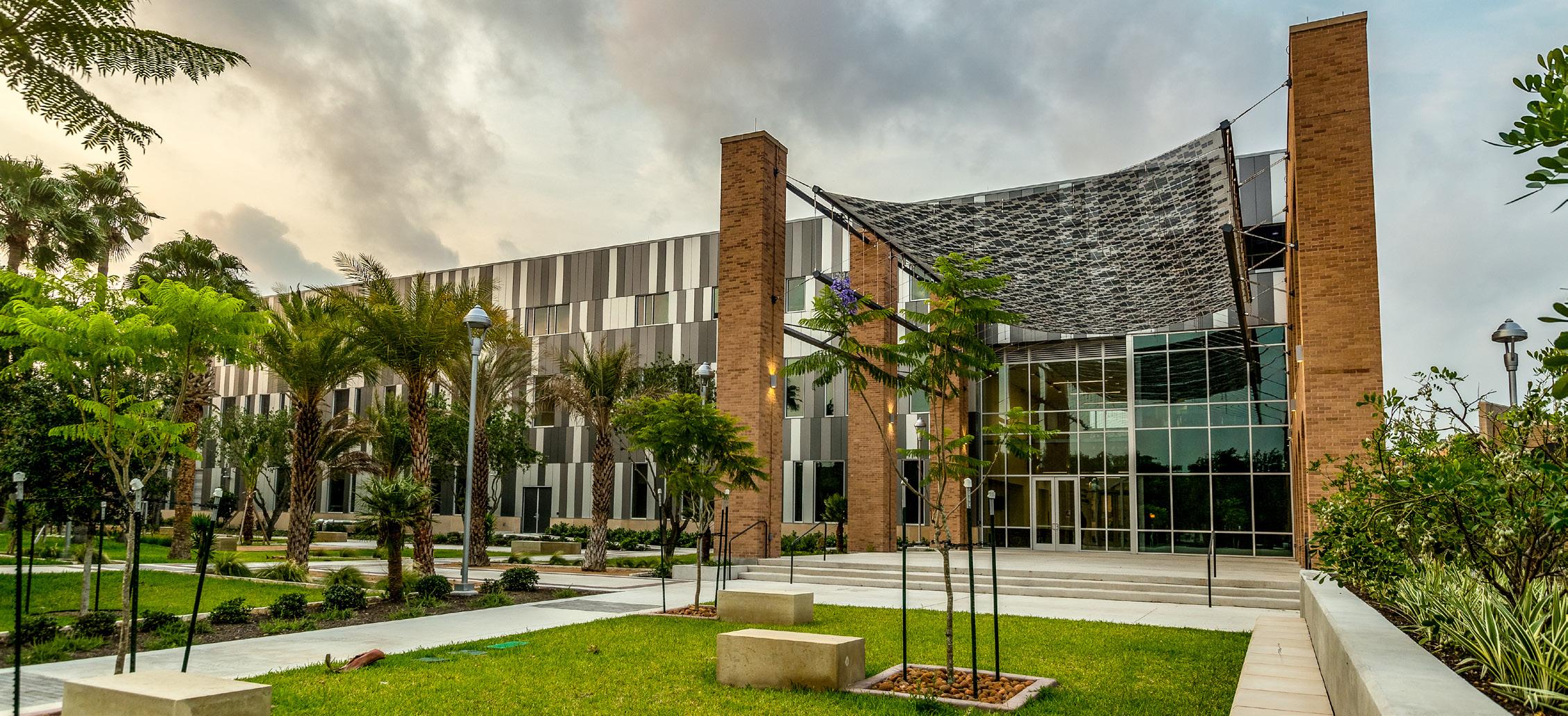


Transportation
Given that automobile transportation is the leading means by which Americans burn fossil fuels and emit toxic air pollutants, university efforts that can help staff, faculty, and students adopt less harmful transportation options will reduce the amount of pollution indirectly caused by a campus. For many commuting students, the cost of maintaining and using an automobile for transportation may be the second highest cost of college attendance after tuition; thus, transportation options may impact classroom success, retention, and graduation rates for students with financial difficulties.
Commuting to and from the campus contributes more carbon to the atmosphere through the extraction and refining of oil into gasoline. Vehicles also create serious environmental health hazards by emitting other pollutants such as particulate matter and nitrogen and sulfur oxides. In addition, vehicular use contributes to polluted run-off from streets and parking lots, which contaminates our water system. UTRGV, while beautiful and pedestrian-friendly, will fail as a model of sustainability if students and employees continue to reach it by vehicle every day. Choosing where one lives may be based on several factors, however the lack of public transportation options, combined with the university’s traditional focus on creating additional parking spaces for vehicles, has played a crucial role in the culture’s sprawling pattern of development. There are currently collaborative efforts among UTRGV, the City of Edinburg, the City of McAllen, and the Housing of Urban Development (HUD) to pursue a regional planning grant focused on sustainable communities to include transportation and housing. This grant would help create public transportation options for the local and campus communities, and shape more sustainable development in the region. Most students come to campus with little experience of transportation modes outside of au-

tomobiles; UTRGV’s campus transportation policy would encourage students to experience other modes and may influence their travel choices long after they have graduated. There are a variety of methods used for commuting to campus: walking, single-occupancy vehicles, car/ van-pooling, riding the bus, and cycling. These methods need significant enhancements in order to grow in popularity. UTRGV could boast some progress toward transportation sustainability if it is reducing the proportion of the campus population that drives to and from campus, which is what many of our peer institutions have succeeded in doing. To achieve this reduction, UTRGV would have to reconsider current policies that create incentives to drive, such as the cost and supply of parking. Even modest gains in fuel efficiency or noncarbon fuels contribute to sustainability. Approximately half of the campus fleet’s total miles are from on-campus trips; the university needs to minimize vehicular transportation within the domain of campus as well as between campuses.
A sustainable transportation policy should support compact growth and multiuse development, where walking, cycling, and bussing are more convenient and practical. Transportation also provides a significant opportunity to build stronger links with our neighboring cities, which can play a major role by providing public transportation and improving the infrastructure and traffic enforcement that enable and encourage pedestrian and bicycling options. The campus maintains a wide range of vehicles for business use, transporting groups, deliveries, teaching and research including automobiles, trucks, vans, golf carts and shuttle buses. The following initiatives have already been implemented on campus.
• Usage of a bicycles only lane on University Drive encourages the use of bikes by students, staff, faculty, and visitors. Bike racks are available for use around the university to accommodate the usage of bikes.
• Motorcycle usage has been advocated by approving the price reduction for a motorcycle permit.
• Crosswalk signs purchased to improve pedestrian visibility by drivers. Interlocal, with the city, was created to allow UTRGV to place these signs on city streets, i.e. Miguel Nevarez Dr., Schunior St. and Sugar Rd.
• Purchase and usage of T3 chariot units, which are electric and allow the Police Department access around the campus with ease without taking too much space and/or fuel.
• Purchase and usage of police bicycles, which require no use of fuels and allow the Police Department greater access for interior campus patrols in pedestrian areas and parking lots.
• UTRGV provides shuttle services to remote parking lots Monday-Friday, 7:30 a.m. – 4:30 p.m. when class is in session.
• Students, faculty, and staff may present their UTRGV ID at any Rio Metro Bus Station in the Rio Grande Valley from 6 a.m.—10 p.m. Depending on the route, riders may change shuttle buses until they are on a designated bus commuting to the university. The UTRGV/Rio Metro bus stop is located on University Drive in Edinburg, in front of the Marialice Shary Shrivers Administration Building.
The objective is to create a comprehensive Campus Transportation Plan to balance the needs of all commuters to campus reducing trips to and from campus through incentives and improvements in sustainable alternatives.
Goal I:
Create pedestrian friendly campuses, measurable by completion of the strategies listed below.
Strategies:
1. Explore options for safe and attractive hike and bike trails.
2. Plant trees or install shaded paths.
3. Attractive, integrated bike racks.
4. Coordinate with Facilities Planning for Campus Wide Master Plan updates to include new pedestrian walkways, shaded pocket parks, shuttle routes, shuttle dropoff and pick-up sites, hike and bike trails, bicycle stations, fuel-efficient/compact vehicle spaces, car pooling spaces, M&O / UTPD / FP&C / DEHS / Fire Department spaces and restricted inner campus pathways.
Goal II:
Increase transportation options to and from campuses by promoting educational programs through partnerships with cities.
Strategies:
1. Collaborate with the City of Edinburg on a traffic assessment to review traffic conditions while strategically planning alternative transportation routes; i.e., Rio Metro, UTRGV Shuttle future light rail transit.
2. Limiting traffic on campus streets to buses and other specialty authorized vehicles
3. Explore a partnership with Rio Metro to reduce number of students driving a private vehicle (POV) to a campus
. Subsidized or free to students.
4. Explore partnerships with the surrounding cities to link hike & bike trails to encourage more individuals to walk or bike to campus.
5. Explore a “Borrow a Bike” or “Green Bike” type of program thus encouraging all to use bikes as an alternative to POV.
6. Education program for students, faculty and staff em-


phasizing the health benefits of walking/bicycling.
7. Launch an educational campaign to promote the use of alternative transportation.
Goal III:
Reduce number of cars parking on campus through incentives to students, staff, and faculty members.
Strategies:
1. Explore options to parking fee price structure such as a substantial financial savings for commuters who carpool. Fees should reflect the true costs of parking and/ or market rates (e.g. response to supply and demand).
2. Propose 25% or more parking spaces in each parking lot for energy-efficient/compact POV. Spaces should be located at the preferred spots near building entrances.
3. Explore incentives or policies to encourage students to not bring a POV to campus, i.e. first choice of a residence hall, freshman not allowed a POV, true cost of operating a vehicle.
4. Explore a “Borrow a Bike” or “Green Bike” type of program.
5. Explore purchasing energy-efficient or alternative hybrid vehicles, electric powered Cushman/Mule and pedal powered vehicles wherever feasible for on-campus travel.
Streghts
• Some initiatives on energy conservation have been implemented in remodeling.
• Commitment to follow LEED guidelines for new construction.
• Working with vendor partners to better understand the economic, social and environmental impact of each product purchased.
Opportunities
• Outside funding sources for development of LEED certified facilities.
• Federal grants and rebates for retrofitting energy efficient facilities;
• Developing real and focused maintenance practices that maximize asset lifespan.
Weaknesses
• Budget constraints limit full implementation of LEED guidelines.
• Budget constraints limit full implementation of new and renewable building technology.
• Lack of cohesive integration of base conservation initiatives.
Threats
• Initial investment costs high;
• LEED guidelines are more expensive to implement;
• Resistance by the university, systemwide, to “think outside the box” on carbon neutrality issues and cost benefits.

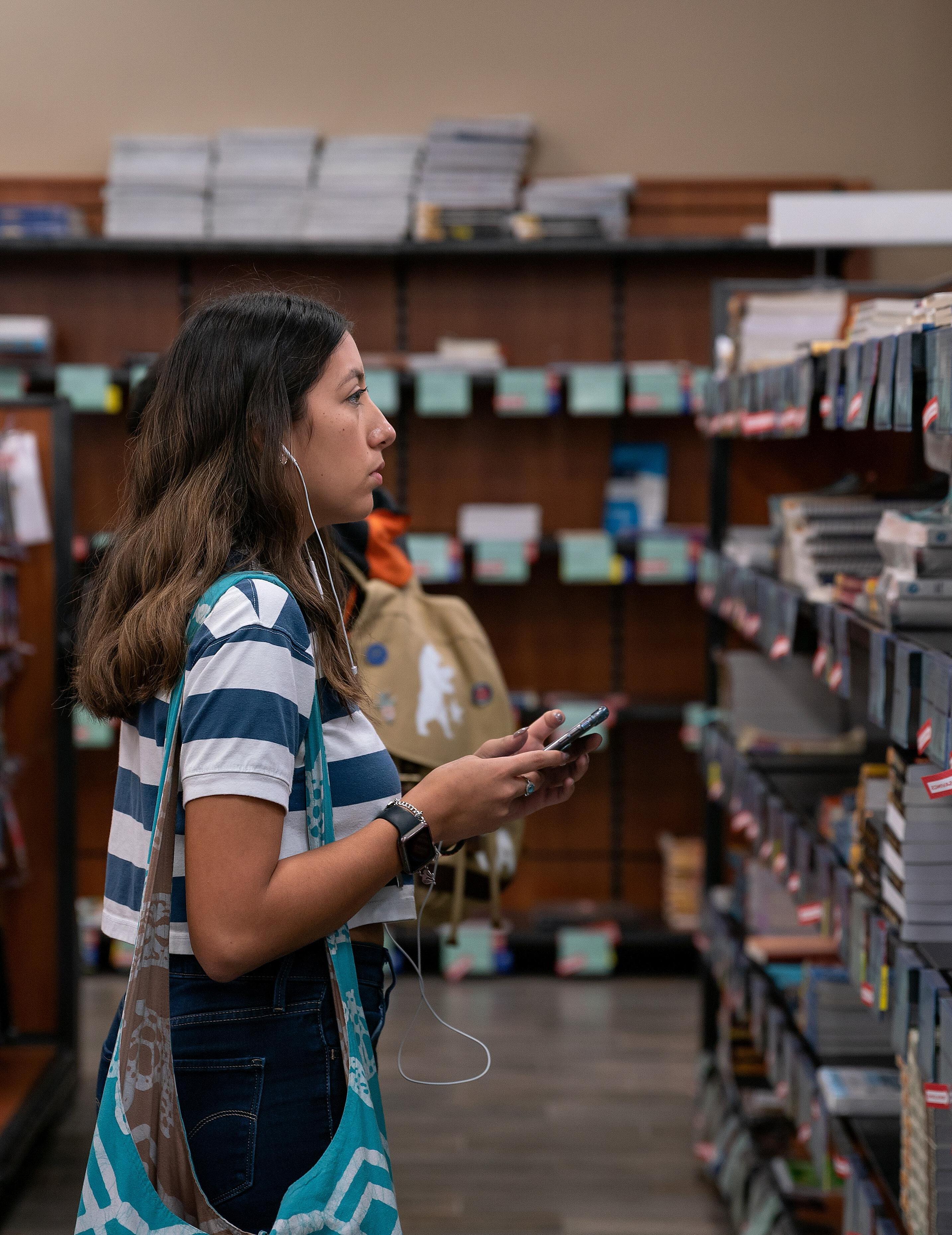

Purchasing
Sustainable purchasing ensures that price and quality criteria include minimal adverse environmental and health impacts. In this area, UTRGV has the opportunity to support companies who embrace the three sustainability goals of ecological soundness, economic viability, and social justice. In making a sustainable purchasing decision, the entire life cycle costs (financial, environmental, and social) of the product are taken into consideration. Life cycle takes into account extraction, production, manufacturing, distribution, operation, maintenance and disposal. Many green products are competitively priced with their conventional counterparts, are of comparable quality, and have one or more of the following attributes: high content from post-consumer recycled materials, recyclable, non-toxic, energy-efficient, durable and/or repairable, or produced in an environmentally and socially-sustainable manner.
The most common reason universities and consumers give for not making green purchases is the cost; products made in a sustainable manner tend to have a higher price up front. Most universities are only able to do so much in encouraging their departments to buy certain products, but without policies to demand it there may not be incentive enough to make these purchases. Cost is cited by various departments on the UTRGV campus as well, but with guidance from purchasing– i.e. a Green Guide – campus can make changes in the direction of more sustainability purchases. To ensure that our environmental impact is limited, purchasing encour-ages the use of products from companies that use environmentally friendly methods.
Currently, campus purchasing processes follow prospective state purchasing guidelines including directions on which vendors are preferred for specific products. Buying “post-consumer” recycled content paper instead of virgin pulp helps reduce waste and energy consumption. The objective is to develop a sustainability-based purchasing policy that stimulates the purchase of cost competitive products and services.
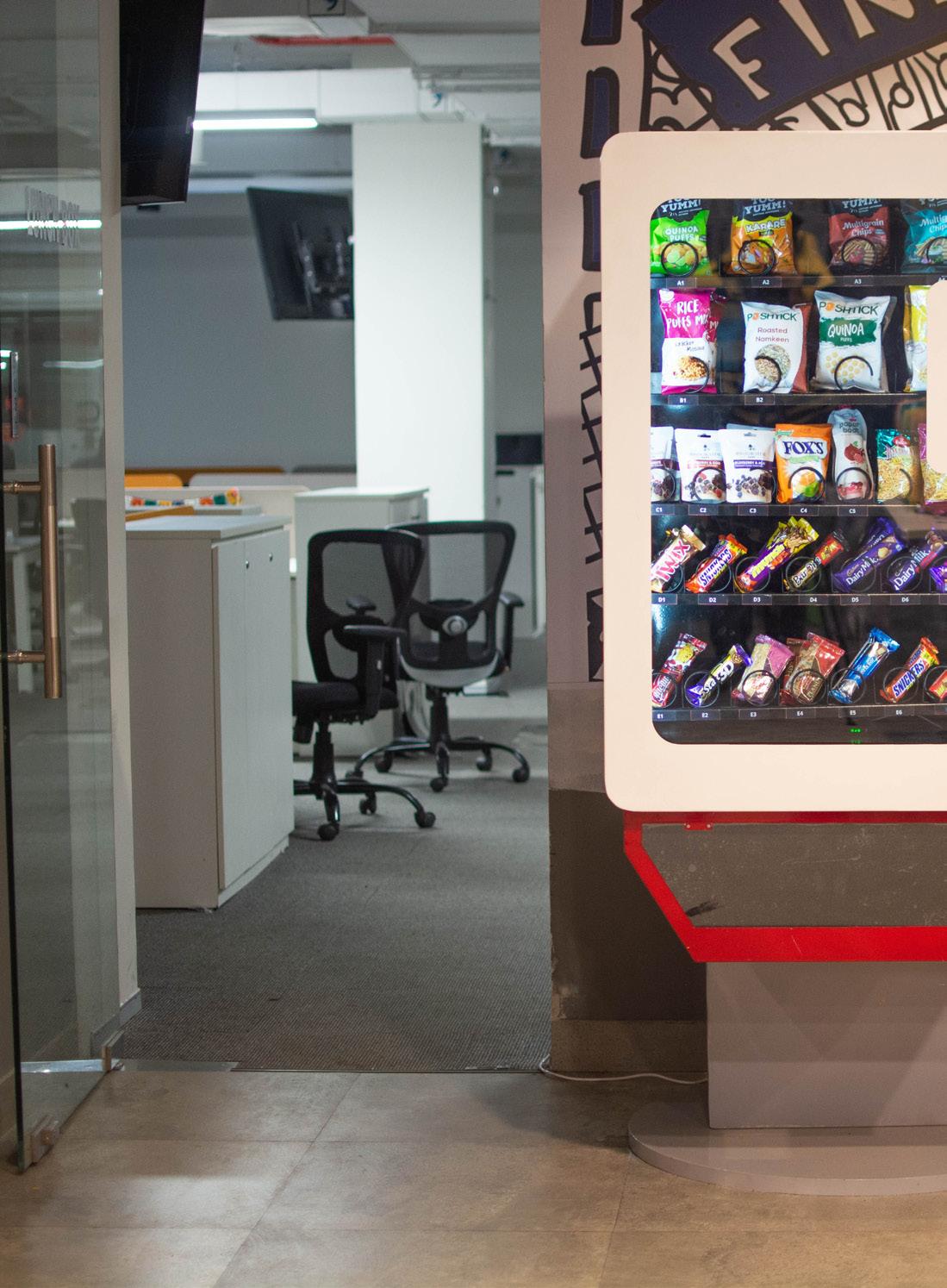
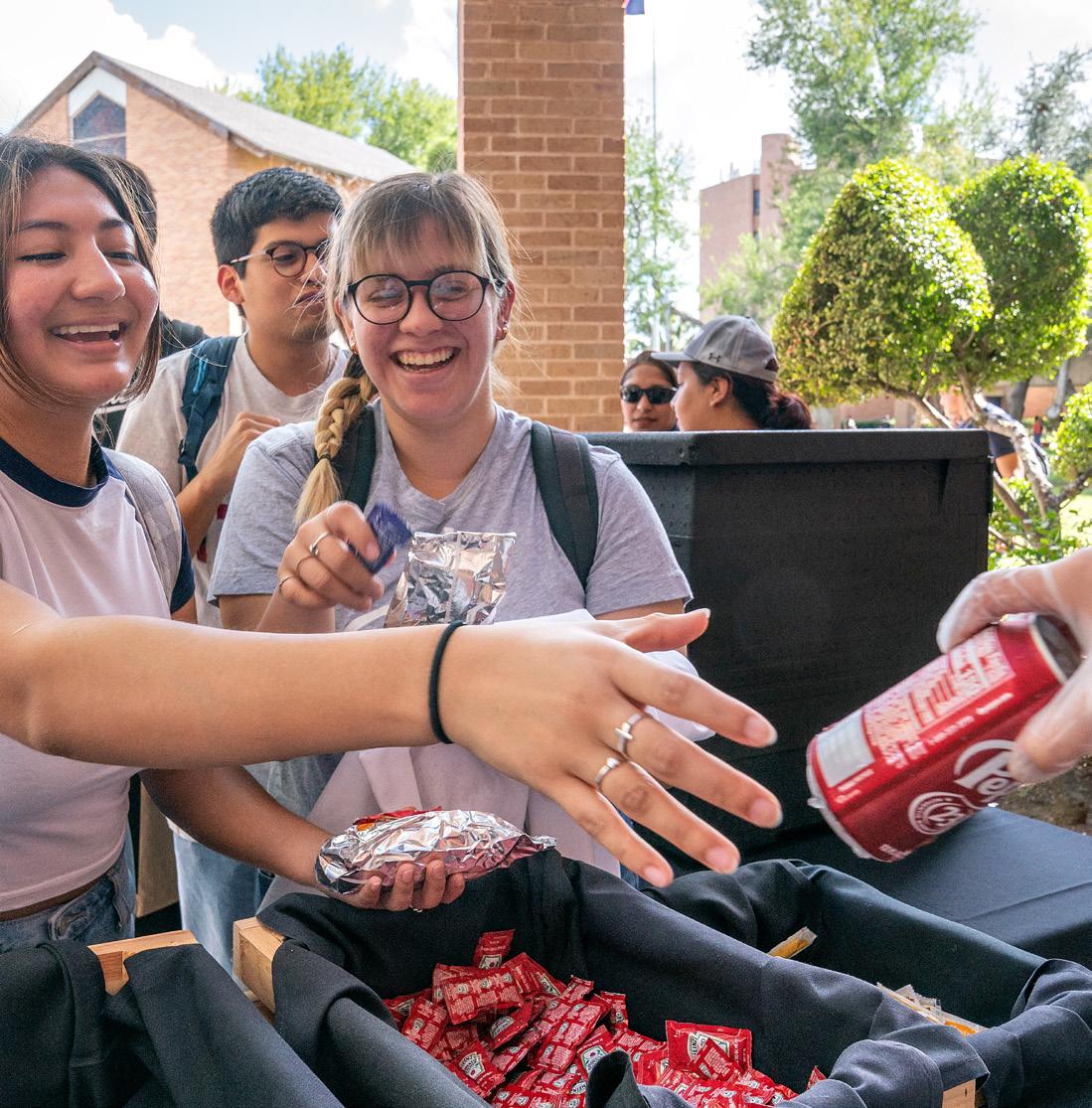
Purchasing oversees an annual procurement of products and services for UTRGV of over $41 million. From a review of manual records of the last fiscal year (2009-2010), the department can say they made over $107,000 in the purchase of recycled products. At the moment, the university does not have the ability to track purchases of products made from recycled content. The purchasing department is currently seeking approval to install SciQuest, an e-procurement program which, aside from many other features, offers the choice of selecting form green products and services. The advantages of this software are twofold; one, it will allow individual departments on campus the ability to choose from green products and services, and two, it will keep track those purchases for the records of the purchasing department.
Goal:
Promote sustainability in university and community by strategic purchasing in the following timeline.
Strategies:
1. Assess, calculate, and track energy consumption and waste of university in terms of purchasing.
2. Incorporate sustainability (education) into purchasing training sessions offered to the departments.
3. Add language into procurement policies/ procedures documents to request vendor information on their sustainability practices, goods, and services.
4. Require departments to submit purchase requests electronically.
5. Collaborate with IT on sustainability implementation methods.
6. Facilitate and encourage departments to purchase goods and services from vendors that are “green” or sustainable (i.e. toilet paper, printing paper, computer monitors, carpet, acoustical ceiling tiles, photo copiers, some furniture, etc.).
7. Research and produce a “Green Guide” for travel related to university business (i.e., video conferencing, green hotel, carpool, etc.).
8. Identify and list sustainable vendors and make it available to the departments.
9. Collaborate with vehicle services for purchase of alternate fuels and new vehicles.
10. Research and compile a list of sustainable or “green” hotels. Recommend and encourage university business travelers to use.
11. Encourage the state to contract with sustainable or “green” hotels and ask the state to provide that list to the university.
Streghts
• Spirit of cooperation in purchasing department to implement sustainability in purchases.
• Vendors that offer sustainable products as well as do business sustainably exist.
• Cost-effective for the long term as less waste being disposed in the landfill (tranportation and tipping fees cost-avoided).
Opportunities
• Industry is becoming more sustainable, therefore, the purchasing choices for UTRGV are increasing at lower costs.
Weaknesses
• Sustainable suppliers (100%) have not been fully identified and it is difficult to define 100% sustainable suppliers.
• Sustainable products can be more expensive that non-sustainable products.
Threats
• State purchasing guidelines on specs limit ability to make 100% sustainable purchases.
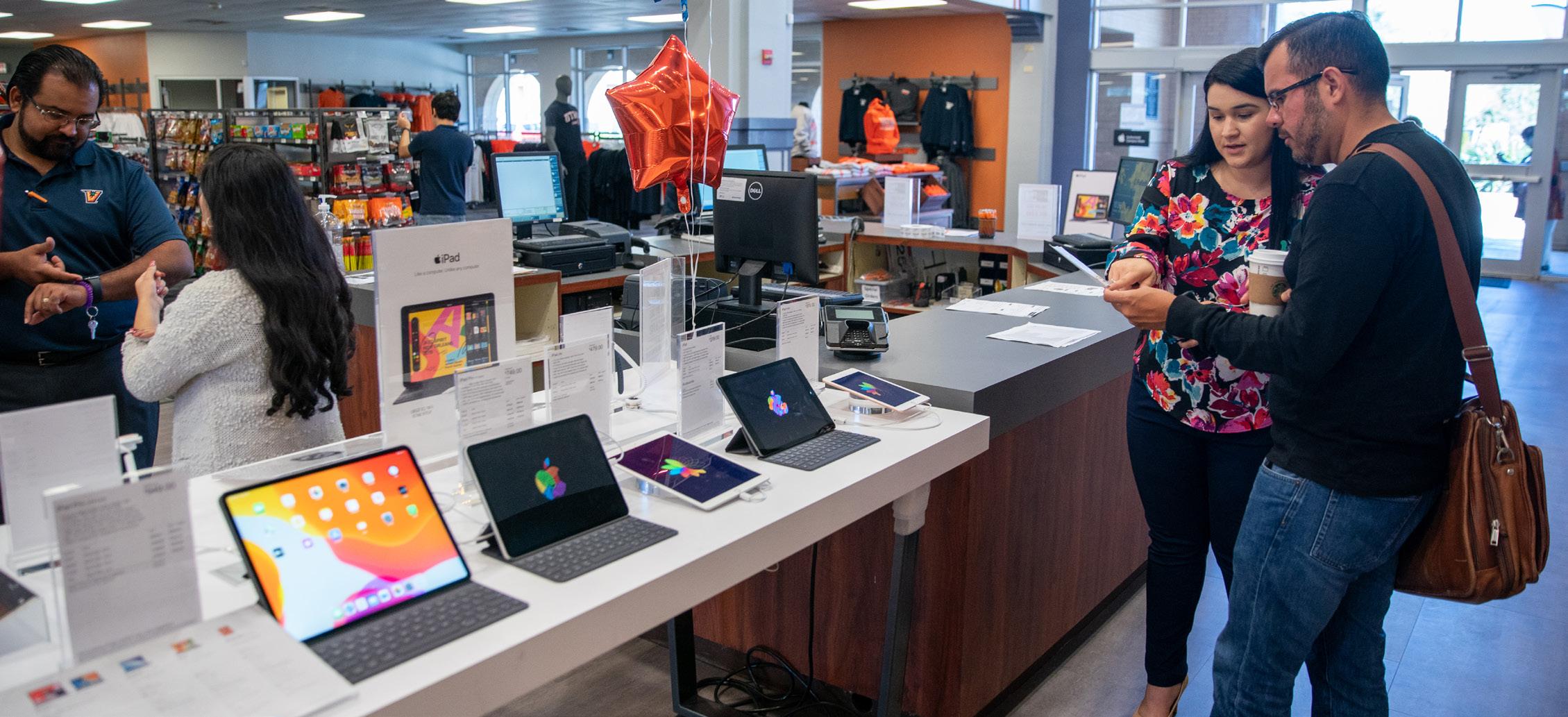
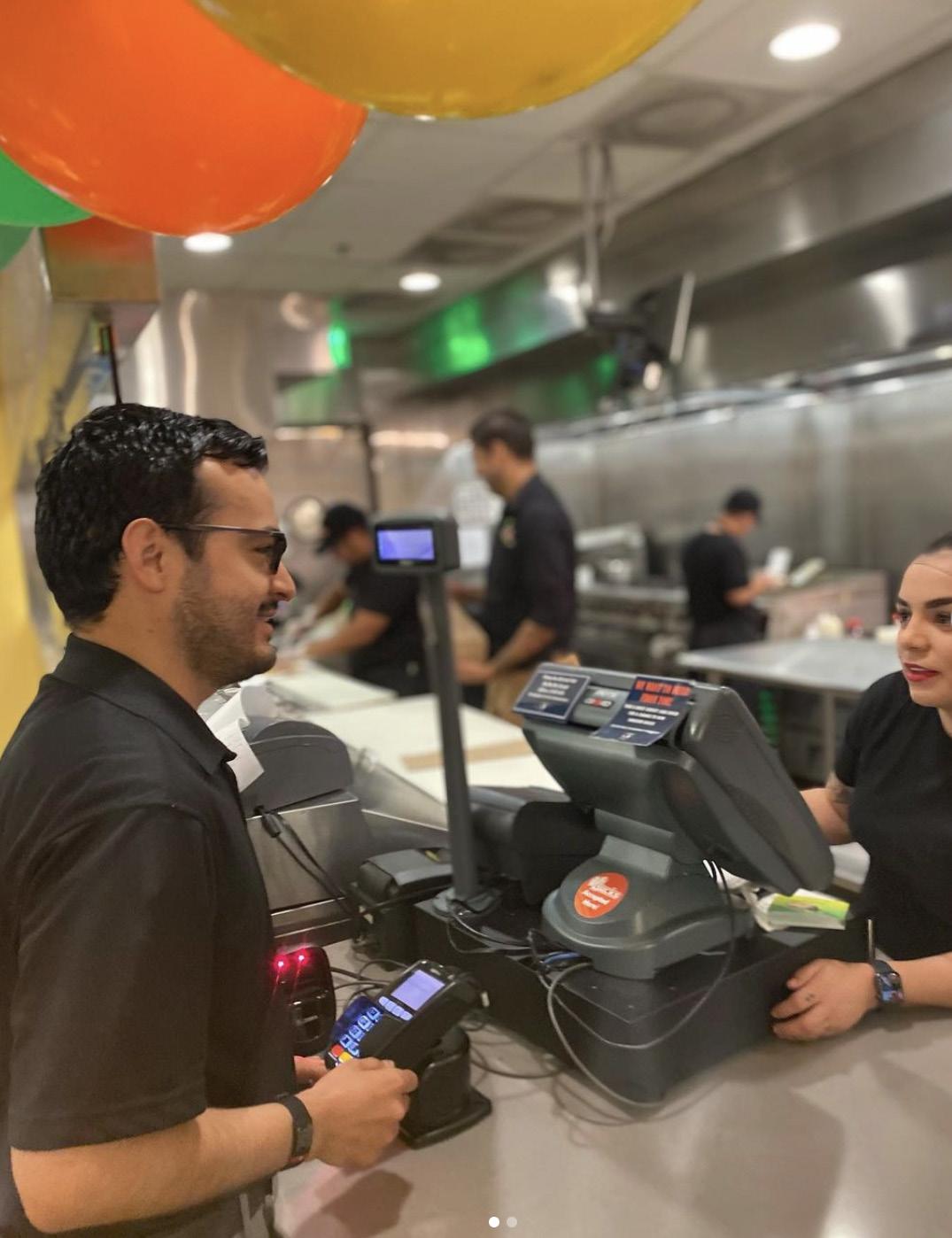

Dining Services
Dining services offer ample opportunities to integrate sustainability as they consume a significant portion of resources and generate large volumes of waste material. A large expenditure of time, money, and energy routinely go into the growing, harvesting, and preparing of food for the campus community. A campus food model must consider aspects greenhouse gas emission, preservation of natural resources, and generation of waste to fully address issues of sustainability. The transportation of food, packaging, storage, preparation, and waste disposal are all steps at which sustainability can be incorporated into the plan, while considering how best to meet the nutritional needs of the entire campus community. The objective is to educate and minimize the environmental and social impacts of food services operations while continuously providing a variety of nutritious and sustainable-grown foods.
According to the U.S. Department of Labor Consumer Price Index, the price of all consumer items increased by 2.7% in 2009. What this section strives to point out is that those inflationary problems can be offset by focusing on sustainability issues, such as purchasing from local growers, producers, and vendors. This will provide the UTRGV community an opportunity to support the local economy, lower carbon emissions related to transportation, and eat food high in nutritional value. These choices of the university will raise awareness in students in the fields of economics, ecology, and nutrition as they relate to food, leading to a richer university experience in which students learn outside the classroom.
UTRGV currently has a student enrollment of 18,000, 2,692 of whom are first-year students. During fall 2009, 680 of these students purchased a meal plan and in the spring of 2010, 270 students purchased a meal plan and used our facilities. Dining services provide an average of 1,400 meals per day, Monday through Friday, and an average of 700 meals on Saturday and Sunday. The primary vendors that supply the food on campus are Sodexo, Sysco, Fresh-
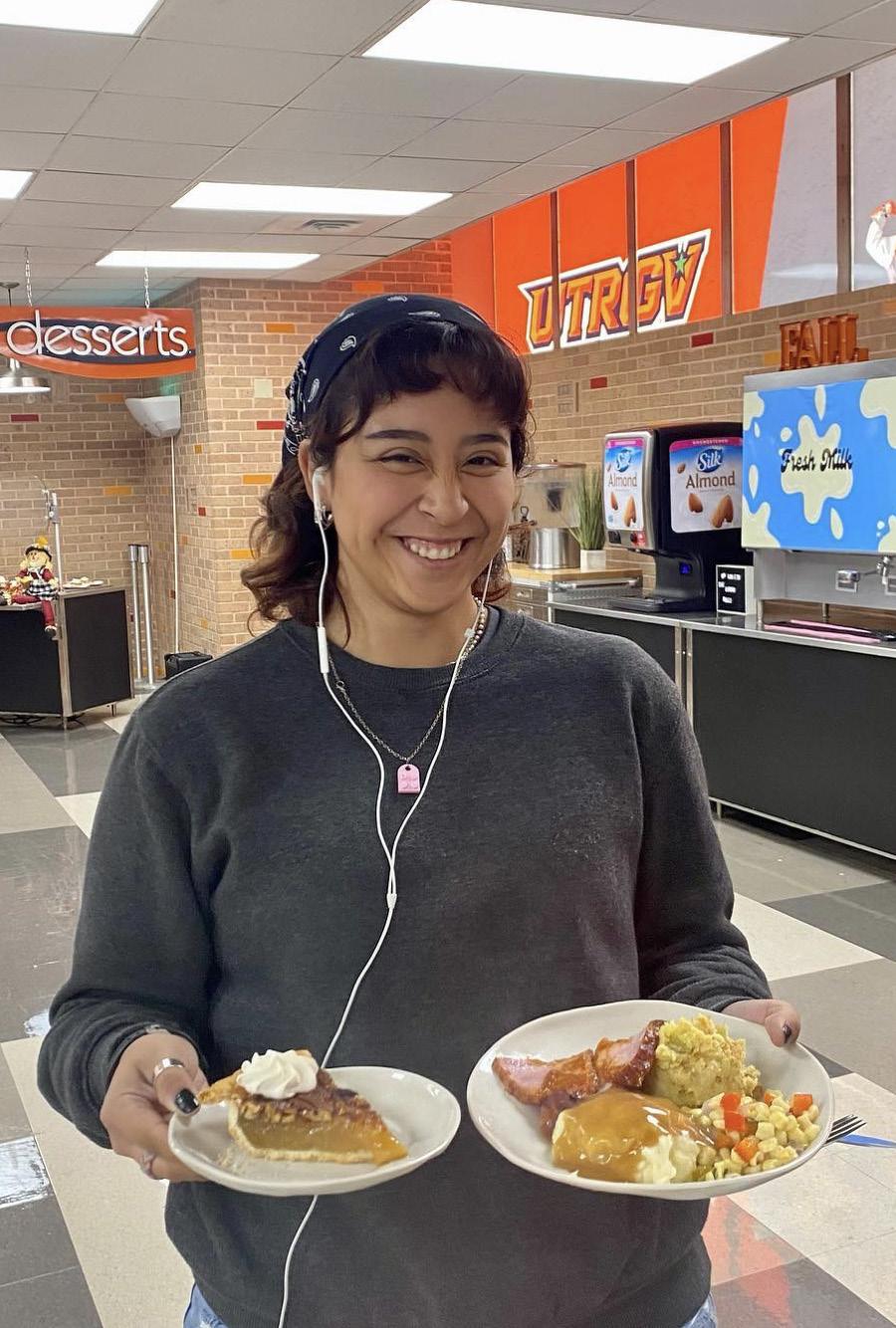

point, Coca-Cola, Hygeia, Coremar, McKees, IPG, Bimbo, and Europa; UTRGV also has franchises on campus such as Starbucks, Krispy Kreme, Freshens, and Island Oasis for students to choose from for lunch and dinner options. What we strive to achieve is connecting with local growers as they begin planning for next year’s crops.
Food Services have a crucial educational role in teaching students that food choices matter for health, environment, and society. The American public is familiar with the benefits of Organic Farming (avoiding artificial pesticides and fertilizers). They are less familiar with the benefits of Locally-grown (avoiding environmental costs of transportation), Humanely-grown (avoiding the diseases, pharmaceuticals, and ethical challenges associated with confined animal factories), or Fairtrade (avoiding the oppression or deprivation of farmers and people who work on farms or in food processing factories). Dining services has the opportunity to educate students, staff, and faculty who use their services on healthy eating, and offering choices to consumers so they can make healthy and responsible decisions regarding food.
The agriculture traditions of the Rio Grande Valley provide an excellent opportunity for the campus to support local growers, which could be incorporated as part of the sustainability plan. Purchasing from local growers reduces travel costs and pollution, reducing environmental damage from carbon dioxide and other atmospheric pollutants associated with the delivery process. Local growers will also reduce packaging waste as they do not have to endure long bouts in transportation or storage.
Reducing food waste is an important aspect of the Dining Service goals. Reusing food by placing the scraps in compost heaps can be useful for mulch for campus gardens and landscaping or animal feed; donating unused but edible food to local food banks helps out in sustainability by promoting social justice for the poor and needy. Finally, UTRGV needs to be able to calculate the food carbon footprint to create a benchmark for regular assessment. In this way we will be able to determine how much energy is consumed and waste generated from our food choices. The following goals and strategies reflect these desires.
Goal I:
Teach students how to manage their food consumption habits with educational materials to be printed. Goal will be measured through distribution of the materials.
Strategy:
1. Print and distribute literature to students explaining why Dining Hall no longer uses trays (eating less, reducing water and energy consumption, etc.).
Goal II:
Reduce waste (food, plastic, paper, cardboard, and oil) from current 2010 levels through implementation of recycling programs and composting.
Strategies:
1. Measure amount of all types of waste produced by Dining Services, and plot on a large graph.
2. Implement “Weigh the Waste” program. Place signage around the residence Dining Hall explaining the program how it helps the environment and how each student can support it.
3. Use signage indicating that all food products should be thrown away before dishes are placed on the convey or belt; two trash cans in front of the conveyor belt will be used for food waste collection.
4. Explore possibility of composting food waste with Sodexo and/or City of Edinburg.
5. Eliminate use of plastic bags in the Student Union and cafeteria.
6. Encourage use of reusable coffee mugs by offering discounts for those mugs as well as coffee bought with them.
7. Promote usage of 100% recycled packaging content of food containers by Sodexo.
8. Implement usage of the new cardboard compactor managed by the City of McAllen.
9. Continue to have used oil reused/recycled by Griffin Industries.
Goal III:
Implement sustainability into purchasing policies of Dining Services by supporting companies who practice sustainability.
Strategies:
1. Purchase products from manufacturing companies who use environmentally friendly practices and chemicals.
2. Encourage current suppliers to get our products from within a 150-mile radius.
3. Continue to choose manufacturing partners who supply us with materials that are made from 100% recyclable and recycled materials.
4. Maintain open door policy, where new information on suppliers is revised.
5. Promote our sustainable efforts within our dining hall and retail operations.

Streghts
• Committed partner(s) working for sustainability in all dining services aspects.
• Implemented trayless dining on all campuses.
• Dining services offering healthy alternative dining options.
Weaknesses
• Sustainable suppliers (100%) have not been fully identified and it is difficult to define 100% sustainable suppliers.
• Lack of sufficient supply of locally, organically grown food options.
• Food waste not diverted from landfill.
Opportunities
• Technology exists to efficiently and effectively compost food waste.
• Develop partnerships with local growers, communities and businesses to provide locally-grown, fair-trade, and humanly grown produce.
• Grant opportunities to promote and encourage healthy eating alternatives.
Threats
• Resistance by students, faculty and staff to eating healthier foods.
• High obesity and diabetes rates.
• Lack of consumer education on sustainability issues.

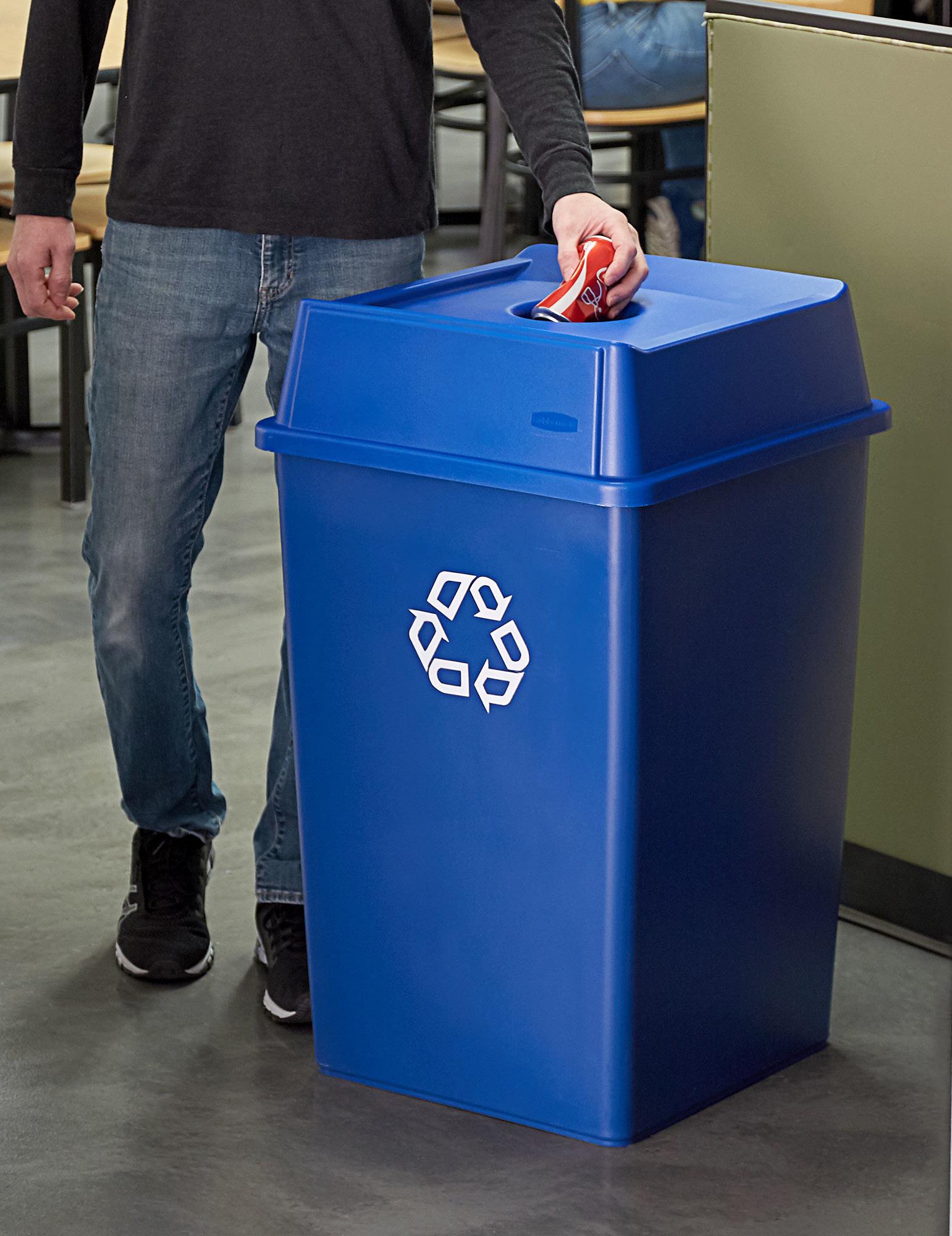

Materials, Recycling & Waste
The world is made up of a finite amount of resources that we use, yet universities have the ability to support their operations and campus life through careful management of waste products as well as controlling the campus’ environmental footprint. As UTRGV is able to improve efficiency with their resources, they will be able to generate revenue as they save money through fewer purchases. As data on de-tails concerning the amount and types of waste as well as recycled content is gathered, we will be able to provide benchmarks for future efforts for a reduction in the amount of waste generated across campus.
Solid waste is generated by every part of campus. It includes materials purchased by the university, materials carried in from off-campus, and materials grown on campus. The amount of solid waste can be cut in a number of ways that can be categorized as “REDUCE, REUSE & RECYCLE.” The three R’s prevent useful material resources from being wasted, reduce the consumption of raw materials, reduce energy usage, and reduce associated greenhouse gas emissions.
UTRGV has had an operational recycling program since 2005. Currently the campus recycles paper, cardboard, printer cartridges, used motor oil, and scrap metal. The programs are handled by different units on campus: Materials and Operations handles materials and waste, Department of Environmental Health and Safety handles environmental and hazardous waste, Assets Management handles office furniture and records, and Custodial Services handles recycling (paper, plastics and aluminum). These operations are coordinated, but only to a limited degree as each department


works with different areas; there is potential for improved recycling efficiency, educa-tion, and cost-saving through improved coordination of actions. The university reuses office furniture and equipment from campus to surplus, an efficient method of turning one department’s unwanted commodities into usable goods. Many items are refurbished for reuse. Campus departments identify a need for an item and go to surplus to find it, saving energy and money for the university, and reducing waste. Surplus recycles 90% of its old computers back into the market.
UTRGV generates hazardous waste like any other institution, and the health of workers in the community is ensured by proper handling and disposal through the Department of Environmental Health and Safety (DEHS). Disposal of batteries is handled through DEHS. This program started in 1998-99, with containers to collect the batteries located around campus. DEHS collects batteries in containers located by IT, ASFC, and DEHS. Additionally, the university uses R-134A, R-22, & R-410A coolant in its four chillers, which is less toxic than the coolant used previously.
Efforts to divert construction and/or demolition waste from the landfill stream has been limited, however there has been a more concerted effort to recycle these types of waste to reduce the environmental impact. LEED credits are granted for recycling and UTRGV could vastly reduce its waste through implementation of these guidelines at construction and demolition sties.
Recently, campus recycling efforts have been hampered due to contamination of recycled materials with other waste. Where contamination occurs, the entire load is rejected and sent to the landfill, negating the recycling efforts of many of the campus community. Educational efforts on correct ways to recycle, therefore, are needed to make the process beneficial. Along with recycling, which helps with reducing waste, there are goals to reduce water usage and hazardous waste on campus.
Goal I:
Reduce the amount of solid waste disposal by increasing recycling opportunity efforts.
Strategies:
1. Determine and track current recycling rate for campus, i.e. waste diverted from disposal in landfill to recycling center.
2. Incorporate recycling efforts on all campus operations through education, signage, and recycling bins.
3. Partner with student organizations to incorporate recycling at all campus events, including student orientations.
4. Centralize drop-off recycling areas that correlate with the highest generating
departments/buildings on campus to expedite and make pickups more efficient.
5. Standardize recycling bins and signage across campus.
6. Explore options for recycling other commodities such as light bulbs, batteries, plastic bottles, carpet, and etc. (Campus currently recycles office paper, cardboard, printer cartridges and scrap metal.)
7. Recycle at athletic events; use compostable plates, napkins, cups.
8. Implement end-of-the-year “Trash to Treasure” type of yard sale where unwanted student items are sold to the community.
9. Explore innovative reuse strategies for construction/demolition waste.
10. Track numbers with Department of Environmental Health and Safety (DEHS) on disposal of hazardous waste.
11. Track numbers with Assets Management on reuse and resale of older but usable electronics, furniture, etc. to the general public.
12. Launch a campaign to educate students, faculty and staff about the three R’s – Reduce, Reuse, Recycle.
13. Encourage printing on both sides of paper.
14. Encourage use of electronic means rather than paper.
15. Work with Bookstore and Dining Facility to reduce/eliminate use of plastic bags.
16. Consider a partnership with Habitat for Humanity to recycle/reuse items such as doors, wood, etc.
Goal II:
Reduce water usage from current 2010 levels by 20%.
Strategies:
1. Install water wise shower heads, low-flow toilets, waterless urinals. (Extreme low flow/dual flush toilets are now being manufactured that utilize less than 1.3 gallons per flush.)
2. Publicize and encourage student, faculty and staff to report water waste on campus.
3. Consider use of compost and mulch, native plantings, and reduction of water-needy lawn areas.
4. Explore use of gray water for irrigation purposes.
5. Consider underground cisterns for rooftop rainwater collection for later use in landscape irrigation.
6. Install drip irrigation where irrigation is needed.
Goal III:
Reduce hazardous waste on campus with the following strategies.
Strategies:
1. Consider specifying “green” cleaning chemical alternatives.
2. Implement pilot test for full line of green cleaning products and convert housekeeping to new green products.
3. Explore options for recycling hazardous chemical waste.
4. Consider switching to R-123 refrigerant for chillers.
Goal IV:
Reduce storm water runoff with the following strategies.
Strategies:
1. Construct retention ponds in areas that currently have reduced or limited drainage.
2. Install and test Bio-swales on campus when a suitable project becomes available.
3. Monitor the development of porous pavements. When a suitable project becomes available, install and test on campus.
4. Disconnect roof drains from storm water systems and divert water to “raingardens,” ponds, bioswales and other storm water retention devices.
5. Consider construction of a regional storm water detention facility with multiuse as athletic fields, outdoor events, etc.
6. Create Biofilters at all existing storm drains to filter storm water systems as necessary to reduce suspended solids.
Streghts
• UTRGV has partnered with City of Edinburg to recycle paper and cardboard.
• UTRGV recycling used motor oil and computers.
• Cost avoidance from diverting cardboard and paper from landfill (transportation costs and landfill tipping fees) is significant.
Weaknesses
• Lack of education and commitment to recycle from campus community.
• Lack of markets for other commodities to be recycled, i.e., plastics, glass, construction waste.
• Budget constraints inhibit recyclables collection, i.e., recycling collection containers, staff to collect and sort.
Threats
• Market volatility can inhibit success of recycling on campus.
• Contamination of commodity collection can be costly to sort out.
• Lack of student, faculty and staff commitment and participation.
Opportunities
• Markets for recyclables exist locally such as paper and cardboard minimizing collection and transportation costs.
• Revenue stream from the sale of recyclables can help offset collection of new commodities being added to what can be recycled.
• Cost avoidance from reducing the amount of waste that must be collected, transported and land-filled can be a substantial savings to the university.


Landscape & Grounds
Landscape & Grounds has numerous opportunities to integrate sustainability. The University of Texas-Pan American is located on 285 acres, divided into north and south and supporting a wide diversity of local and regional species. The grounds department takes great pride in applying and developing techniques towards a more sustainable campus environment for both our campus community and the public.
UTRGV is located in the Rio Grande watershed. The main campus occupies approximately 285 acres and is near major bodies of water such as Rio Grande River. A majority of runoff from campus runs into the Arroyo Colorado, which eventually empties into the Laguna Madre. The activities that occur upstream affect the biological, chemical, and physical health of the ecosystem downstream, and in the case of UTRGV that includes the Rio Grande, Arroyo Colorado, and the Gulf of Mexico. This committee strives to maintain the health of that ecosystem and critical water systems in our community. Rivers reflect the health of the surrounding land; as development on campus continues, impervious surfaces increase and this causes the condition of water to suffer as runoff is contaminated with human activity. Creation of permeable surfaces in the newly developed areas, including parking lots and roads, would help reduce runoff, pollution, and sedimentation. Impermeable surface should represent no more than eleven percent of a watershed in order to remain healthy.
The vegetation of UTRGV should correspond with our semiarid environment, thus the vegetation must be drought resistant as well as freeze resistant as we experience



periodic freezes. These efforts would serve to make best use of the limited water available in the area. Currently, campus irrigation is zoned into two major areas on campus with approximately 39 irrigation controllers. These are strategically programmed at specific times, and reduced by 25% in the winter to maximize efficiency in consumption and cost. Also, grounds crews conduct preventive maintenance of irrigation sprinklers heads on a quarterly basis. They inspect each landscape bed and perform periodic soil tests to maintain healthy soils and improve plant quality.
Organic soils management is practiced on campus. Mulching, recycling of yard waste, composting and effective pruning techniques are all applied methods for a healthier grounds environment. Intermittent aeration of high traffic compacted soils is done to improve root growth and water infiltration to create a denser and more tolerant grass. Proper planting and pruning techniques are important for this process. Trimming of limbs or removal of dead shrubs is practiced to control plant disease and pathogens, thus minimizing the need for chemical pesticides.
Trees provide habitat for wildlife as well as shade for people and buildings, and they have the ability to clean the air while beautifying the landscape. We strive to diversify species of trees on campus to increase these positive effects. This committee estimates that almost 3,267,000 sq. feet of canopy is provided by UTRGV’s trees—equivalent to 75 acres. Other benefits of trees include reduced energy consumption due to shade lowering temperatures in buildings, storm water runoff reduction, carbon storage, and aesthetics. Other services such as permeability and other soil conditioning properties, as well as reduced lawn maintenance, making the benefits of trees on campus undisputed.
The landscape and grounds committee also seeks to incorporate sustainability practices into facilities maintenance and operations in order to maximize the use of all natural resources available at the university. These efforts shall entail landscape designs which incorporate low watering rate irrigation systems, strategic selection of plant materials to achieve adequate design and long life, low maintenance and low-cost factors, as well as waste minimization and recycling.
The objective is to increase biodiversity and usable green space of the campus while reducing dependence on fossil fuels, other extracted minerals, chemical fertilizers and pesticides. Training in Integrated Pest Management (IPM) techniques for staff, students, and faculty of UTRGV could be incorporated into the plan in the future, utilizing the Office for Sustainability as a coordinating point or clearinghouse for pesticide use on campus. The Department of Environmental Health and Safety (DEHS) has been included in the bid process for pest management contracts to ensure that contractors incorporate IPM principles. DEHS continues to raise awareness on campus regarding the risks posed
by pesticide use, and continues to act as coordinating point for pesticide use information. Future efforts will target improving documentation of pesticide use and deci-sion processes.
The primary principal entails a change of campus community culture by focusing on the preservation of natural resources while minimizing our carbon elements (i.e. electricity and water) which have historically been consumed at a higher rate, yet essential for the operation of the institution. The vision is to transition all landscape and grounds maintenance activities to a more ecologically sound operation by extending awareness and educational programs in support of this plan. The program shall reflect a change of culture and a change in design through the application of sustainable principles and budgetary support that nurture these principals.
UTRGV offers courses that incorporate sustainability through the Physics and Geology Department, as well as a Geographic Information Systems (GIS) minor. An area in which we could improve is incorporating service-learning into environmental literacy courses to provide students with outreach opportunities in which they apply the GIS information to communities surrounding campus.
The Landscape and Grounds committee oversees a variety of functions on campus, from master planning to lawn mowing, and from air quality to waste management. These functions contribute to the broader scope of policies, management strategies, and procedures affecting the environmental quality of UTRGV.
Goal I:
Implement planning and design strategies on all new construction for a sustainable landscape.
Strategies:
1. Review master plans in order to consider applicable changes design.
2. Review landscape and irrigation plans at the design phase.
3. Compile a list of acceptable native/nativeadaptive plant material to use in new designs.
4. Review plans for proper selection of plant materials which are conducive toward low maintenance, heat and drought tolerant landscapes; increase the number of native shrubs and trees.
5. Minimize the number of flower beds in landscape designs which require a larger watering requirement; select flowering ground covers, shrubs and trees.
6. Implement bioswales in new construction and parking lot designs.

7. Partner with local forester to review designs.
Goal II:
Ensure sustainable practices (i.e. water conservation) on existing landscapes through replacement of plant material and redesign strategies.
Strategies:
1. Create strategy to minimize the number and size of flower beds which consume large volumes of water.
2. Schedule a replacement cycle for non-sustainable plant materials with those which support heat and drought tolerant designs.
3. Establish budget to support replacement cycle.
4. Reduce the number of existing flower beds and implement replacement cycle for sustainable plant material.
5. Replace carpet grasses and appropriate flower beds with Bermuda hybrids in order to minimize water requirements. Strategy shall be applied when applicable.
Goal III:
Implement sustainable strategies into the maintenance and operations of landscape and grounds.
Streghts
• Practice Integrated Pest Management (IPM) to ensure safe, effective and efficient use of chemicals when needed.
• Landscape with native adaptive plants to minimize water use and maintenance costs.
• Implement water conservations practices such as reduce irrigation in winter months.
Opportunities
• Incorporation of more native adaptive grasses and landscape plantings to minimize chemical, irrigation and maintenance issues.
• Compost all vegetative waste and use resultant soil products on campus grounds.
• Plant more trees for cooling effects, encourage more walking/cycling, carbon reduction, and aesthetics.
Strategies:
1. Develop strategy to sustain Maintenance & Operations operating budget by applying sustainable practices.
2. Train grounds staff on information related to sustainability principals as it relates to Landscapes & Grounds, change of culture, and implementation of strategies, with consideration of current budget reduction in travel funds.
3. Consider changing the mowing cycle of lawns to reduce maintenance of equipment such as mowers and light duty equipment.
4. Reduce disposal of yard waste in landfill by converting to compost and mulch.
5. Review and assess list of chemical herbicides/ pesticides, select and implement alternative measures which would be safer for the environment.
6. Develop an irrigation maintenance program to allow consistent auditing of systems.
7. Develop a composting that allows for recycling of vegetative waste. Resultant compost and mulch can be used on landscaped beds and grounds.
8. Create position of Sustainable Practices Coordinator for grounds crew.
Weaknesses
• City of Edinburg (waste manager) does not currently offer composting/mulching operation for vegetative waste such as tree trimmings and grass clippings.
• Lack of native adaptive plant knowledge by landscape architects when designing campus plantings.
• Budget constraints to incorporate new design construction such as bio-swales and “green roofs” into overall campus landscaping.
Threats
• Adequate funding for new and existing landscape and grounds maintenance strategies for sustainable features such as bioswales and “green roofs.”
• Adequate training for maintenance personnel to maintain new concepts such as “green” roofs and “living” walls.


Information Technology
Technology allows us the ability to reduce our waste and consumption of energy in many ways. Sustainability refers to the manufacture, management, use and disposal of information technology in a manner that is friendly to the environment. Managing the power consumption of electronic equipment, such as energy-efficient desktops, servers, notebooks can be environmentally safe. Sustainable disposal is generally ensuring that e-waste (old computer equipment) does not end up in a landfill where the toxic substances can leach into groundwater and other sources.
UTRGV is committed to using technology, thereby reducing waste, consumption, and travel. A virtual server is used where feasible; this allows the university to utilize multiple applications per hardware server, which minimizes the total hardware required and the amount of power and cooling used per application. UTRGV uses various online systems to assist in the reduction of waste. The Oracle Internet File system provides online user controllable and web accessible storage, which reduces the transmissions of large files and reduces the need to make multiple printed cop-ies of documents through secure sharing of information. Oracle e-Business System enables significant reductions in paper use by using online forms and workflow. The Banner Student Information system contributes in reducing paper usage by providing grade reports for students, departments, Registrars, class schedules and course catalogs through online access. Banner also reduces the students need to drive to campus by offering online alternatives.
Mail generates vast quantities of waste. The campus e-mail system reduces the need for printed paper communi-


cations between people on our campus (faculty, staff, and students), and between our campus and other campuses. The effectiveness of these statements and other systems providing online information can be indicated by the fact that the Data Center expenditures for paper have shrunk by approximately 60% since the year 2000. In addition, the shredding of paper records is contracted to a local firm that shreds in a secure facility, which reduces UTRGV’s Records and Information Management costs, and recycles the shredding. The Records and Information Management Program encourages the use of electronic records instead of paper records through the provision of training and support to campus offices.
Technology can reduce energy consumption as well. In summer of 2009, UTRGV began the first phase of using software in its computer labs that automates the shutdown of computers to save electricity. Digital Signage is used in TV monitors in the Academic Services Building (ASB) and the New Computer Center (NCC), and information on events and lab schedules are promoted on Bronc TV. Also, all computer lab PCs are Energy Star compliant; old copper network cabling is recycled and removed from campus locations; upgrades have been made to legacy cabling methods; there are higher speed cabling requirements; and finally, cable is removed at remodeling projects. Similarly, repairs were made to the nonfunctioning UPS system by replacing spent lead-acid batteries and returning systems to active use, thus saving the cost of scrapping the system and purchasing a new one. As required by law, UTRGV recycles lead batteries instead of disposing of them in public landfills.
Other IT initiatives at UTRGV include the dissemination of information via smart devices. Services will be available for students, parents, alumni, and others via devices such as the iPad, iPhone, Blackberry, and Androids. Campus also has a service called Central Identification Service that allows students to log into one location and work on various systems, i.e. blackboard, banner, Bronc mail, wireless printing, or virtual labs. Smart classes and online courses are other important features of UTRGV that allow students to take course without having to drive to campus, thus reducing their driving. All of these technological features allow the campus community to access the UTRGV system from anywhere.
Goal:
Reduce energy consumption and paper waste of UTRGV through the implementation of information technology programs.
Strategies:
1. Collaborate with Energy Conservation committee to determine energy usage of UTRGV campus.
2. Purchase Building Information Modeling (BIM) software (state-of-the-art design technology that helps view the structure of buildings and their consumption of energy resources) to track energy consumption, and hire individual to train employees on this software.
3. Collaborate with Facilities and various departments when building new buildings or renovating old buildings to incorporate and implement the latest technology.
4. Optimize power efficiencies in Data Center by applying best practices to configuration and deployment of physical and virtual servers.
5. Plan upgrades to Data Center HVAC using energy-efficient technologies.
6. Reduce paper consumption campus-wide through paper reduction initiative.
7. Allow students, the public, businesses, and employees to conduct business with university electronically.
8. Collaborate with Purchasing to specify energy-efficient or “Energy Star” electronics to include computers and other technological equipment.
9. Create simple educational programs that save energy immediately and include:
a. Power it Down: set power options to power down monitor and hard disk when not in use. Use a network PC energy management tool to optimize your organization’s electricity use.
b. Print Sparingly: choose double-sided printing as default setting. Use a print optimization tool to reduce waste paper.
10. Create educational awareness by encouraging students, faculty and staff to use electronic means such as email, pay-on-line, and other online programs.
11. Promote video-conferencing between campuses and other entities for “meeting technologies.”
12. Facilitate the message of sustainability in all UTRGV websites.
13. Encourage facility to use web-based conferences, seminars, etc.
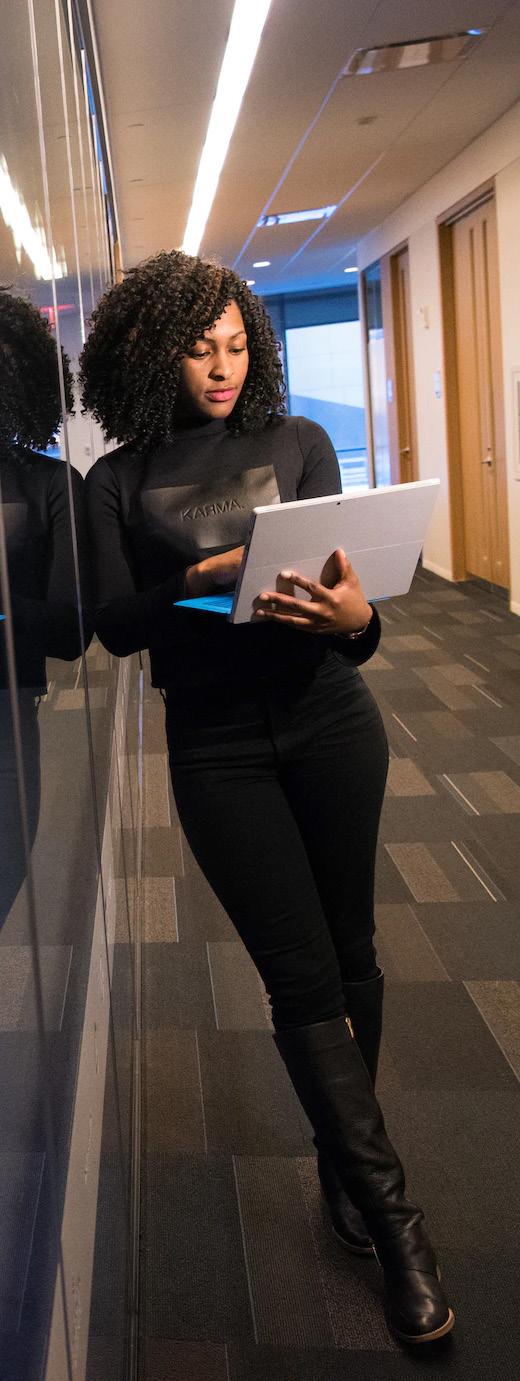
Streghts
• Online communication greatly reduces paper waste of the campus community.
• Online courses reduce driving demands and therefore fuel and energy consumption.
• Provides efficiency and effectiveness in all services the university provides, which cuts down on waste in general.
• Technology allows outreach and networking.
• UTRGV houses data for entire Rio Grande Valley.
Opportunities
• Windows on the World (WOW) software supports education for sustainability.
• Additional courses from UTRGV could be offered online.
• New technological innovations are always allowing more efficient and easier ways to do things.
Weaknesses
• Many individuals on campus prefer face-to-face communication.
• Learning and adapting to technological innovations takes time, energy, and money.
• Time must be devoted to learning about new technological innovations that could be brought to campus.
Threats
• Costs for purchasing new technological software programs are high.
• Online universities can offer courses not offered by UTRGV.
• Regional data stored in servers on campus require constant maintenance at a high cost as it is the backbone to information of South Texas.
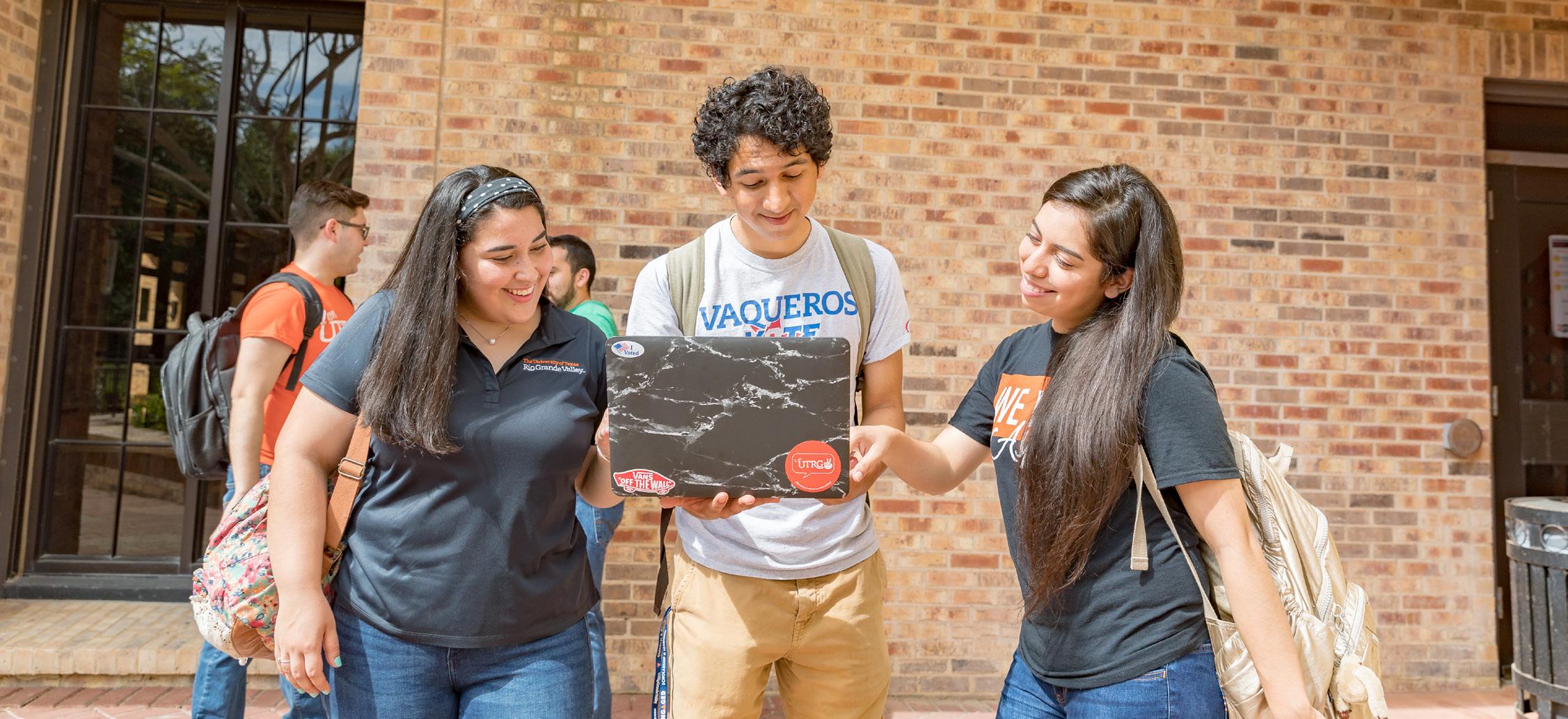


Conclusion
This document represents the efforts of many individuals: the sustainability committees, the University Sustainability Council, the Office for Sustainability staff, and the UTRGV administration. It is a collection of assessments, ideas, suggestions, and a plan for the direction we want to go in the future. It also allows for periodic review so that goals and strategies may be modified as they are accomplished, or as new ideas and technologies are developed. With the cooperation of the fifteen committees, as well as students, faculty, staff, and community members, this plan can be a success for the university and the Rio South Texas region, and together we can make the university a model of sustainability, integrating ecological soundness, economic viability, and social justice.
Appendix
